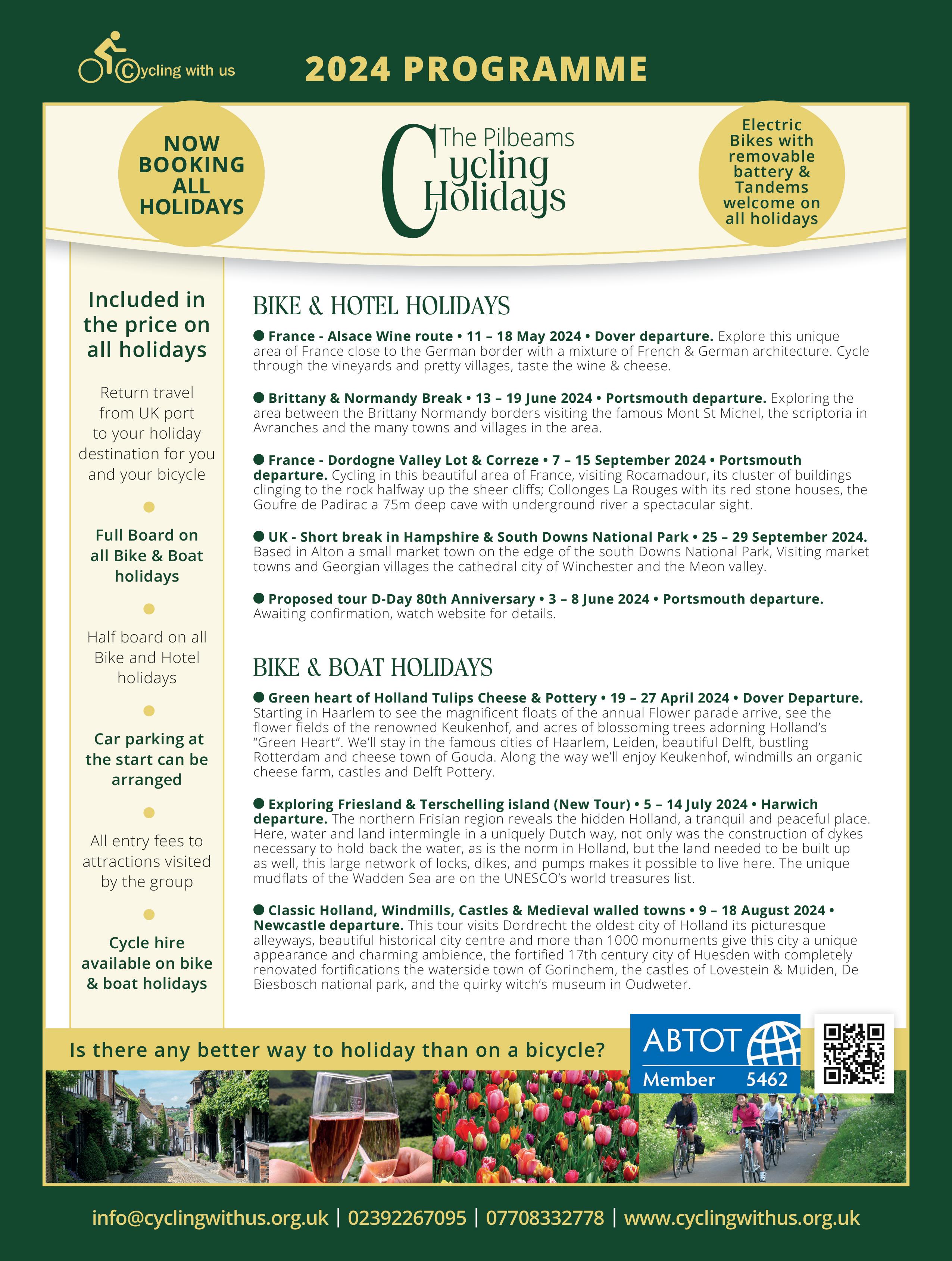RIDE WITH US



BIKES FOR LIFE





THE NEED FOR BIKES THAT ARE BUILT TO LAST


































THE NEED FOR BIKES THAT ARE BUILT TO LAST

























Wear and tear is a by-product of owning a bike. Assuming you ride it. Years ago, when I used social media, people I sort of knew kept adding me to a group dedicated to retro mountain bikes. I kept leaving it. The images of box-fresh bikes from the 1980s and ’90s did nothing for me. They were frozen in time, dead, like insects in amber.
Bikes change. We swap in parts we prefer. We replace the parts that wear out. My oldest bike is a Brompton from 2001. As well as all the usual, it’s had a new handlebar, new wheels (the first rims lasted 20 years) and a new rear triangle. It’s a proper ‘Trigger’s broom’.
Bikes don’t last forever but, as long as parts are available, we can keep them running. It’s easier with some than others. A super-lightweight road bike might only last a few years, a heavy-duty steel roadster decades.

That doesn’t make the shorter-lived bike a dead loss. Maybe it gave a few summers of cycling joy? When my titanium mountain bike developed a terminal crack in the down tube, I was phlegmatic. The frame cost £1,400 and lasted just seven years, but I’d had £16 a month’s enjoyment from it and more.
Its parts live on in other bikes. Some are scuffed, none pristine. I’m fine with that. In his book, Just Ride, Grant Petersen creates a compound word, ‘beausage’, from beauty and usage, suggesting the former comes from the later. My bikes have this. None gleams on Instagram. Bikes are for riding, not for displaying on real or virtual walls.
DAN JOYCE Editor
32 An adventure unfolds
Touring northern France on custom Bromptons
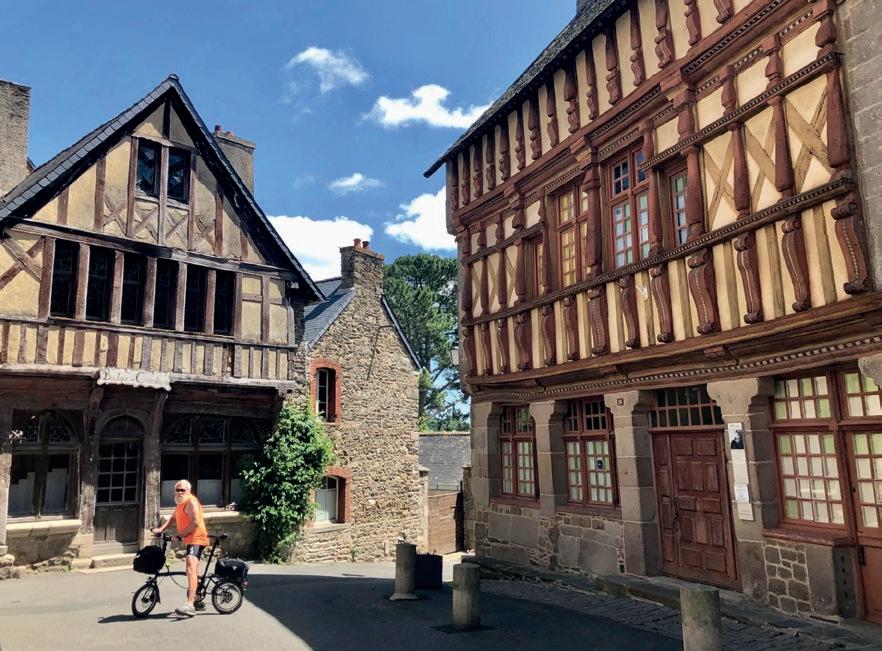

38 Built to last
How and why to build bikes with a longer life
49 Ride with us
Groups giving others the gift of cycling
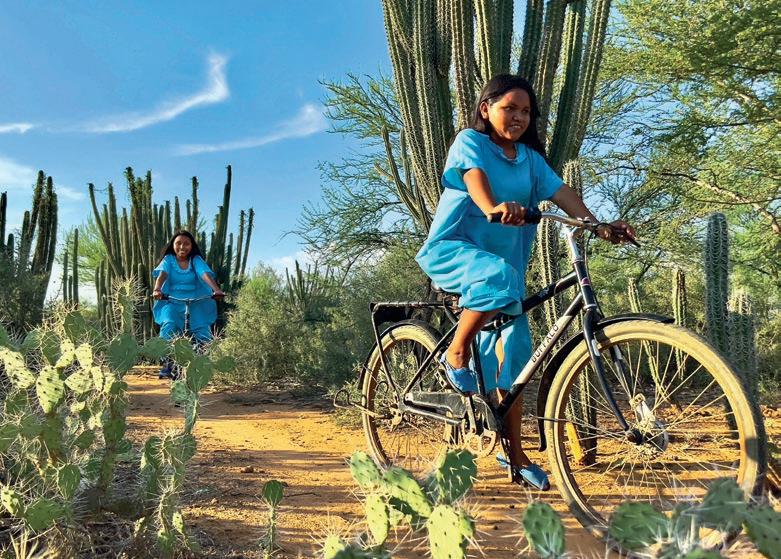
52 The show on the road
Cycle-touring a poetry show around England
18 Shop Window
New products previewed
20 Gear up
Components, accessories and books
60 Endurance road bikes
Ribble Endurance SL Disc and Light Blue Wolfson 105 on test
66 Ridgeback Expedition
When it comes to touring bikes, 26 ain’t dead
69 Hip packs
Remember bumbags? They’re back
04 Freewheeling

Bits and pieces from the bike world
07 This is Cycling UK
Pedalling politics at the party conferences; the legacy of the UCI World Championships in Glasgow; how Cycling UK is breaking down barriers to cycling; and more

16 You are Cycling UK
Professional dog-walker Lydia Maxwell
29 Letters
Your feedback on Cycle and cycling

46 Weekender
A traffic-free coast-to-coast across Scotland
56 Cyclopedia
Questions answered, topics explained
73 Travellers’ Tales
Cycling UK members’ ride reports

01483 238300. Cycle promotes the work of Cycling UK. Cycle’s circulation is approx. 51,000. Cycling UK is one of the UK’s largest cycling membership organisations, with approx. 70,500 members and affiliates.
President: Jon Snow Chief Executive: Sarah Mitchell. Cyclists’ Touring Club, a Company Limited by Guarantee, registered in England No 25185, registered as a charity in England and Wales Charity No 1147607 and in Scotland No SC042541. Registered office: Parklands, Railton Road, Guildford, GU2 9JX.
CYCLE MAGAZINE: Editor: Dan Joyce E: editor@cyclinguk.org Designer: Christina Richmond Advertising: Bevan Fawcett T: 0203 198 3092 E: bevan.fawcett@jamespembrokemedia.co.uk Publisher: James Houston. Cycle is published six times per year on behalf of Cycling UK by James Pembroke Media, 90 Walcot Street, Bath, BA1 5BG. T: 01225 337777. Cycle is copyright Cycling UK, James Pembroke Media, and individual contributors. Reproduction in whole or in part without permission from Cycling UK and James Pembroke Media is forbidden. Views expressed in the magazine are those of the individual contributors and do not necessarily reflect those of the editor or the policies of Cycling UK. Advertising bookings are subject to availability, the terms and conditions of James Pembroke Media, and final approval by Cycling UK. Printed by: Acorn Web Offset Ltd, Loscoe Close, Normanton Industrial Estate, Normanton, WF6 1TW T: 01924 220633

UK: Parklands, Railton Road, Guildford, GU2 9JX E: cycling@cyclinguk.org W: cyclinguk.org T:


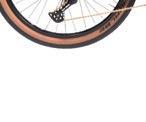
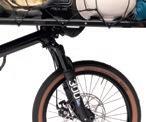

Shimano’s 12-speed 105 groupset is now available in a mechanical version as well as Di2. Only double chainsets are available – either 50-34 or 52-36 – but you can choose a cassette as large as 11-36. (If that’s still too high a gear, check out the new 12-speed GRX on p18.) In a departure for Shimano, this new 105 groupset is (hydraulic) disc brake only. RRP is just under £1,000. shimano.com

Stephen Dee is the Cycling UK volunteer validating officer for the British Cycle Quest (BCQ), a national challenge taking in 402 checkpoints throughout England, Wales and Scotland, including many of the islands. He was a runner-up in our recent Going the Extra Mile awards as the Most Inspiring Individual for his meticulous attention to detail, and the enthusiasm and efficiency with which he carries out the role. He has just completed the entire BCQ challenge himself and was presented with a platinum medal in recognition of his achievement.
“I started doing BCQ as it enabled me to do what I like best: cycle touring,” he said. “I did some cycle camps of up to a fortnight in length, but most rides were car assisted and, on occasion, train assisted. Apart from going to areas I had not been to, one thing I loved about doing BCQ was going back to areas I used to cycle through in my younger days.”
Stephen took on the volunteer role just after he retired and says: “It has enabled me to put to good use the knowledge from my working life, and to move BCQ validation from a paper-based system to an online process.
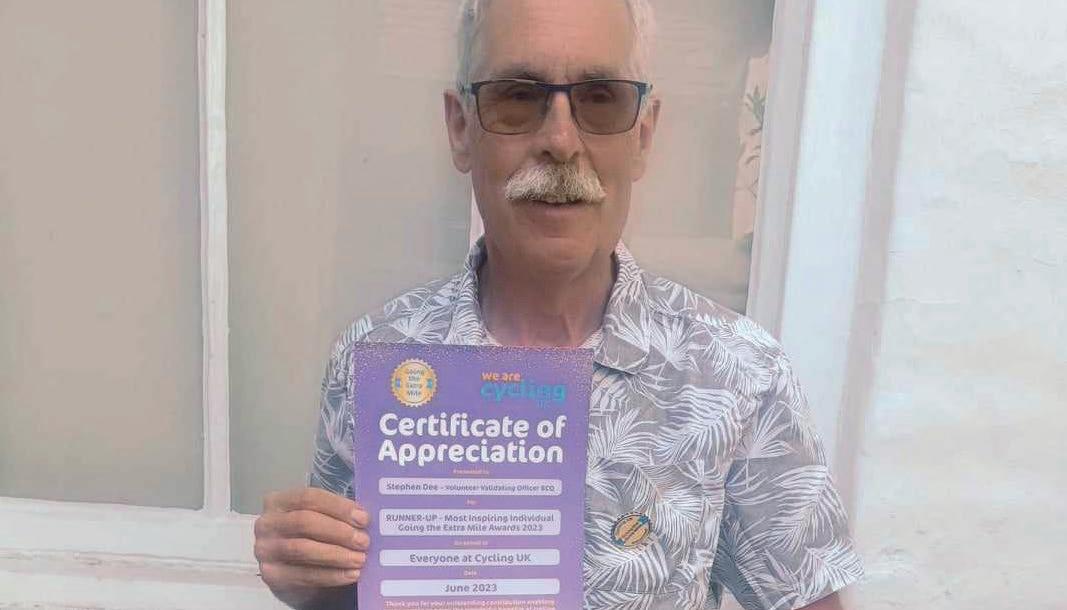
“In terms of advice to those doing BCQ, I would say the key thing is to think of it as a long-term project. Unless you live on the coast or an island, the first 100 checkpoints are easy to do, then it gets progressively harder. I think the record for completing BCQ and its precursor, the Tourist Explorer Award (TEA), is 18 months. Some finish it in about five years, but most are like me and take more than 10 years to visit all the checkpoints.”
cyclinguk.org/british-cycle-quest
























For other ways to support Cycling UK’s vision of a better world by bike, including many roles that can be done from the comfort of your own home, visit cyclinguk.org/volunteer.






German manufacturer








Hase makes some fantastic all-ability trikes and tandems but this ‘cargo gravel bike’ is something of a head scratcher. On the one hand, it is a sporty, lightweight (20kg) cargo bike. Great! On the other hand, who hauls such big loads off road? If you do, prices start at €3,790. hasebikes.com
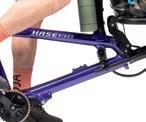

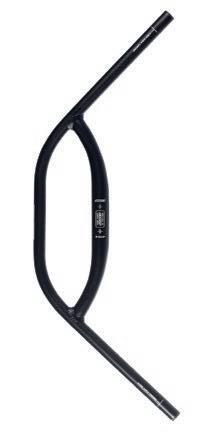

An innertube stuffed in a seatpack with a multitool can end up with a hole poked in it, while a tube strapped to the frame is equally vulnerable to cuts or abrasion. To protect the tube, wrap it up first. A small ziplock plastic bag works fine. A stretchy neck gaiter, best known by the brand name Buff, is better still. As well as protection for the innertube, it means you’re carrying an emergency head covering, scarf or bandage – or just something to wipe your hands on.


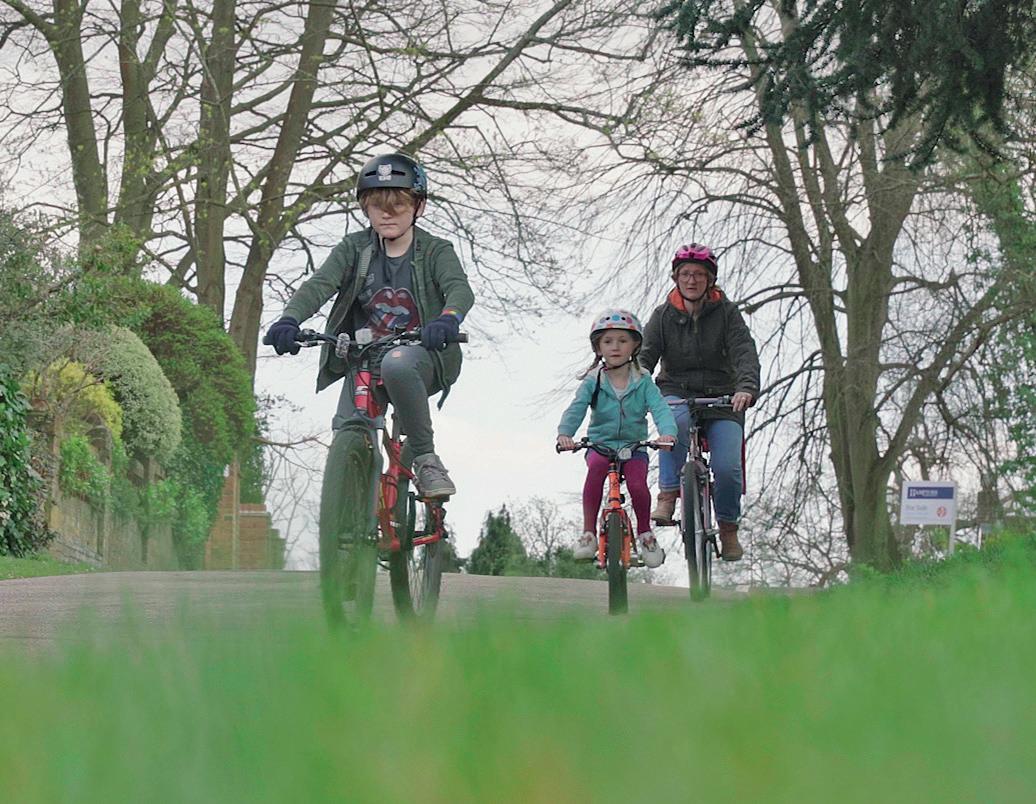
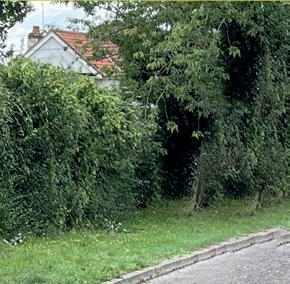

In response to a slim by-election win, Prime Minister Rishi Sunak and his ministers have attacked their own government policy supporting low traffic neighbourhoods and 20mph zones in England. This doesn’t just place new measures under threat, but could see decades-old traffic filters removed to create new ‘rat runs’ through thousands of residential areas. These quiet residential streets are, in much of the country, the only safe cycling routes, especially for children. Voice your objections by writing to the prime minister with our campaign action. Visit: bit.ly/cycle-defend-safe-streets
Two record-breaking cyclists top the bill at the Cycling UK in Scotland Annual Gathering on Saturday 28 October in Dunblane. Mountain and gravel bike rider Kerry MacPhee will talk about her recent record on the Inverness-to-Glasgow Badger Divide route and her passion for getting more women and riders of nonstandard cycles into off-road riding. Also speaking is multiple world record holder Christina Mackenzie, who recovered from serious injuries sustained in a hit-and-run to compete in the Gran Fondo at the UCI Cycling World Championships. To book your free ticket, which includes lunch, visit cyclinguk.org/scotland-gathering .


Why do you cycle?
Getting outdoors, exercise, mental health and journey speed on our reasonable-butnot-perfect Basildon cycling network.
How far do you ride each week?
On a work week not far at all, though I cycle locally most days. Thirty miles?
Which of your bikes is your favourite?
I’m a folding bike geek, so one of my four folders. My most-used bike is a Dahon Speed P8 – comfortable balloon tyres and easy to take anywhere.
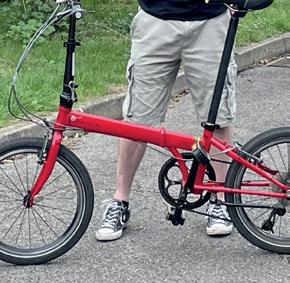
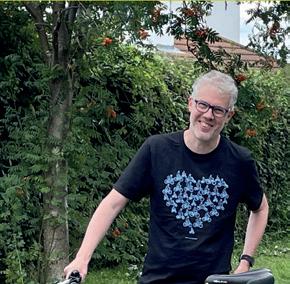
What do you always take with you? My diagram ideas notebook, pen and tablet, if, as usual, I’m off to the café where I draw.

Who mends your punctures? Me, unless it’s a Brompton rear wheel.


It’s raining: bike, public transport, or car? Am I allowed, in a cycling magazine, to say walk, with a big umbrella?
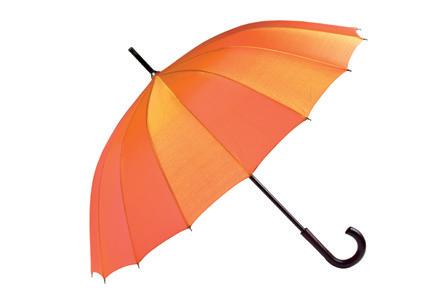
Lycra or normal clothes? Normal clothes, though I love cycle-specific, pubfriendly kit.
If you had £100 to spend on cycling, what would you get?
I’d browse unnecessary eBay bikes for days, then buy a bikepacking bag.
What’s your favourite cycle journey?
The Granite Way, skirting around Dartmoor from Okehampton over Meldon Viaduct. I stay nearby every year, and it’s beautiful and utterly unlike anything near home.
Want a taster of Cycling UK’s new off-road route, Traws Eryri, which runs for 140 miles from Machynlleth to Conwy in North Wales?
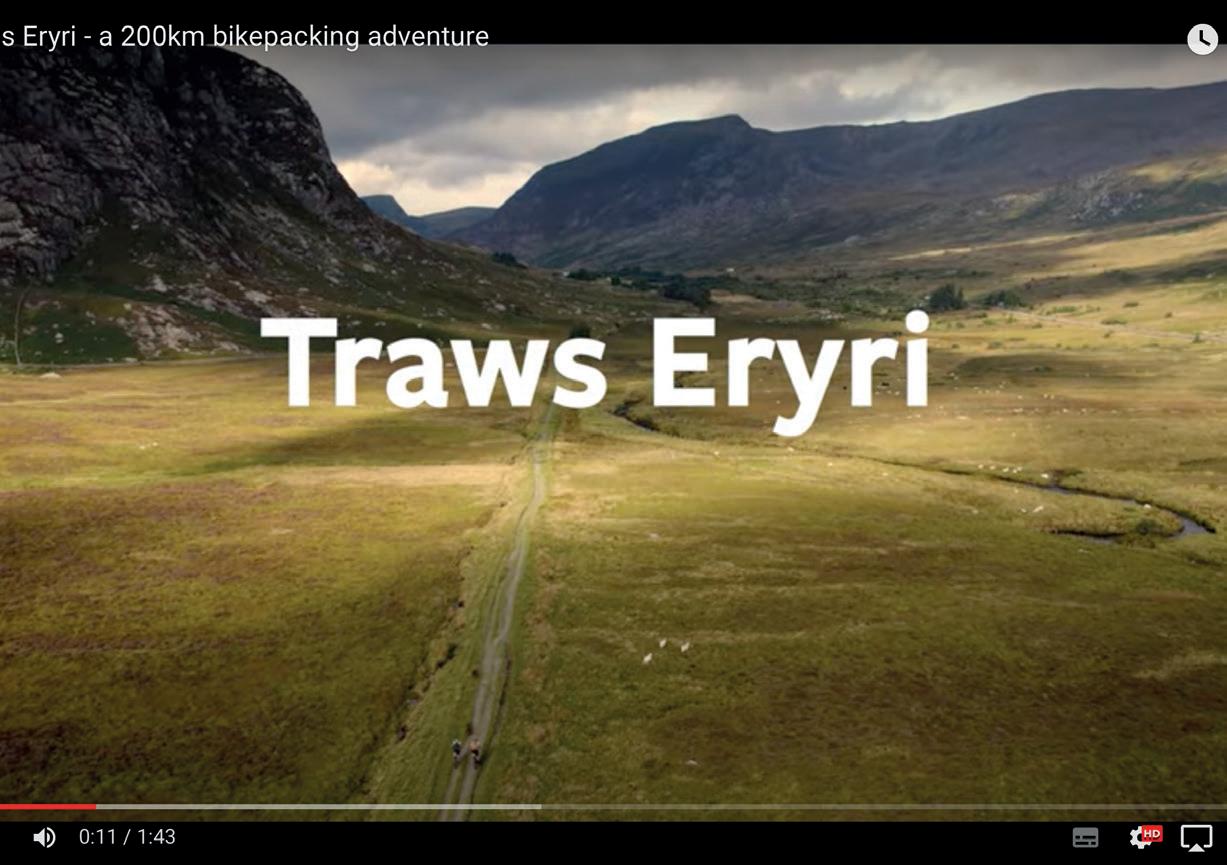
Head to our YouTube channel to see the highlights of the route in our short film, which we have produced in both English and Welsh: youtube.com/@cyclinguk. Traws Eryri guidebook writer Guy Kesteven has a more in-depth run-through of what to expect if tackling the route in the wintry months: youtube.com/@GuyKesTV.
What single thing would most improve matters for UK cyclists?

For every A-road to have an equivalent safe cycle route running parallel.
Dave’s Diagram Club for cycling cartoon fans is at: davewalker.com/diagramclub





Be in the know on all things cycling related. If you’d like to hear more about Cycling UK’s work – our projects, training, campaigns and fundraising, and how you can get involved – sign up to hear more: cyclinguk.org/subscribe

People like low traffic neighbourhoods and will cycle when they feel confident to do so, as our project data shows. It’s time all parties realised, says Sarah

Over the past few months, I’ve been busy working with colleagues across Cycling UK to shape our new strategy, which will launch in 2024. At the moment we’re setting up some further opportunities to discuss our direction of travel with member focus groups and external stakeholders. It’s an exciting time and I look forward to sharing more with all our members and supporters in the next issue of the magazine.

We’ve also been putting our annual report together, which is a good time to reflect on how we’re progressing against our current strategy. It’s always great to be able to see the impact we’ve had over the past year. For example, our Big Bike Revival project supported 55,000 new cycling trips across England after engaging with 65,000 people. As well as participants reporting a 61% drop in car journeys, we’re also able to see more people discovering the joy of cycling, with 86% of participants reporting feeling happier after attending one of our Big Bike Revival events. You can find a summary of the annual report on pages 14 and 15 of this magazine.
As I write in early September, we’re enjoying a late blast of warm summer sunshine, which is a great excuse to squeeze in a visit to our newest long-distance route, Traws Eryri, which we launched to great fanfare last month. This spectacular route weaves 140 miles from Machynlleth to Conwy in Wales, through arguably one of the UK’s most dramatic mountain landscapes. This route is also probably our most technical yet, with sweeping descents, gnarly climbs and rugged terrain throughout. We were delighted to see that our routes are gaining more traction with each launch, and are receiving widespread coverage both in Wales and in the wider UK media.
Less positively, we were dismayed to see the prime minister attacking his own government policy on low traffic neighbourhoods over the summer. We were quick to respond in the media, and also swiftly launched
25,000
Approximate number of low-traffic neighbourhoods across the UK – at the moment
an online action to enable you to write to the PM in support of safer residential streets.



We’ll be working hard to remind all political parties that low traffic neighbourhoods are overwhelmingly popular with most voters and that this isn’t a battleground for the next general election. We’re continuing to campaign on this and will be raising our concerns at the Conservative Party Conference in October. We also launched an appeal to help support this and our wider campaigning work. Thank you to everyone who donated.
The Cycling UK team will be attending all of the main political party conferences this autumn as part of our general election campaign. These conferences provide a great chance to speak directly to MPs, peers and councillors about our key asks for the manifestos. We’ll report back in the next edition of Cycle.
Our Big Bike Revival project supported 55,000 new cycling trips across England after engaging with 65,000 people
MitchellLow traffic neighbourhoods have been dragged into a spurious culture war
of Londoners interviewed support low traffic neighbourhoods;
17% were opposed.
(Source: bit.ly/cyclelondoners-support-LTNs)
What will you do to get more people cycling? That’s the question Cycling UK will be asking in Bournemouth, Manchester and Liverpool as this magazine drops through your letterbox, because it’s party conference season in the year leading up to the next general election.
We often lobby governments across all four nations on various matters relevant to cycling, but it’s at this point in the election cycle that the political parties pull together their manifestos for the next five years: what they’ll promise the public they’ll deliver. There has to be a general election by January 2025, and though it could be called sooner, most pundits expect it to take place this time next year. We’re attending the Liberal Democrat, Labour and Conservative party conferences this autumn to make the case for more investment in cycling and to explain why this should matter to all political parties.
Events over the August silly season highlighted why this lobbying is so important, because there’s a real risk that politicians, candidates and decision-makers wrongly conclude that railing against the perceived ‘war on cars’ is popular, leading to more opposition to measures that are designed to enable active travel and make streets safer.
There are around 25,000 low traffic neighbourhoods across the UK, including thousands of historic schemes that nobody ever objected to – because they worked. Supporting them is also the UK Government’s stated policy, but despite that the prime minister recently announced that he was reviewing these schemes, followed by reports days later that 20mph limits were now out of favour with the government.

We need to help politicians realise that the public actually supports efforts to reduce motor traffic and enable more people to walk and cycle, despite what they read or hear from some of the media. Surveys repeatedly prove this, but sometimes politicians only hear the noise.
Of course, we can do the lobbying and persuasion behind closed doors at party conferences and leading up to the general election, but it helps hugely if politicians also hear your voice. So far, more than 5,000 of you have used our online template to write to the prime minister urging him not to U-turn on low traffic neighbourhoods and 20mph zones. We’re looking to deliver that message to him publicly after the party conferences. Please help us reach 10,000 letters – add your voice at cyclinguk.org/drive-less-cycle-more
The default 20mph limit on ‘restricted roads’ in Wales came into force on 17 September this year. It was a landmark day for road safety. It’s not a blanket limit, just the default on the kind of streets, usually in residential or built-up areas, where people are most likely to walk, wheel or cycle (or want to but feel too unsafe). Local authorities can look to exempt certain streets where the default limit isn’t appropriate. Congratulations to the Welsh Government for listening to the evidence and making bold choices.
Your Cycling UK trustee elections voting form is enclosed with this issue of Cycle. Details of the candidates and instructions on how to vote are included. Meanwhile, thank you to all who attended and voted in the 2023 Cycling UK AGM in September. Outcomes of the meeting, along with the details presented, are online: cyclinguk.org/agm-2023.
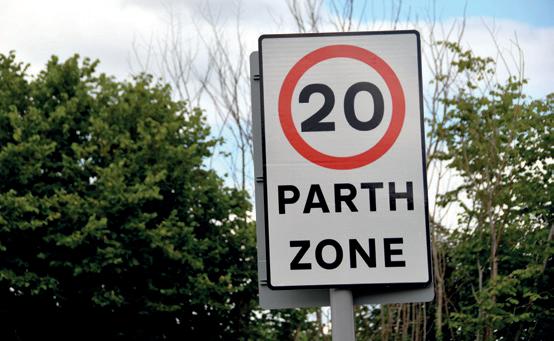
Cycling UK is attending the autumn party conferences to demand that politicians from across the spectrum support more cycling and less drivingTraffic reduction schemes are not a ‘war on drivers’

Northern Ireland
August was a good month for Cycling UK in Northern Ireland. We coordinated an All Party Cycling Group meeting for Members of the Legislative Assembly (MLA) on the future of safe cycling, and got the BBC to cover the event. The Department for Infrastructure announced trial segregated bike lanes the next day. Installation began just as the newly founded Belfast Cycle Campaign Group was set up. cyclinguk.org/cyclingprovision-ni
Scotland
The eyes of the cycling world turned to Scotland in August as the first ever combined UCI Cycling World Championships were hosted in Glasgow and around the nation. The flags and banners dotted around the city, emblazoned with the slogan ‘Power of the Bike’, summed up the desire of the organisers and the Scottish Government to create an impact beyond the sport.
They described a legacy where “everyone should be able to experience the freedom riding a bike can bring to our lives”
and “encouraging cycling as a mode of transport for everyday journeys”. Laudable as this is, the reality of sporting events is that they don’t tend to increase participation in sport or physical activity.
Instead, Cycling UK urged government to start the work of creating a legacy now, and to sustain the effort.
Success in boosting the number of people cycling as part of their normal lives can only happen if our national and local governments work together to invest in cycling as a mode of transport. They can make cycling a safe,
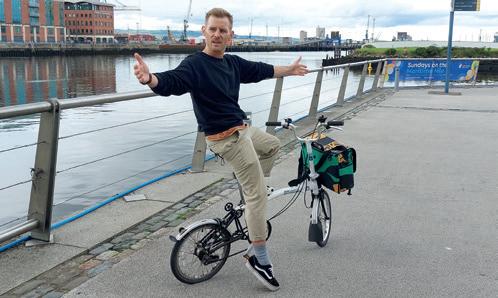

easy and pleasurable option for daily journeys.
Humza Yousaf recently recommitted that his government will spend 10% of the transport budget, or at least £320m, on active travel next year. Hitting this milestone and making progress on several other key policies will help to make the legacy real.
For 10 days the World Championships shed light on the sporting brilliance of athletes. We now need total focus for the next 10 years and beyond to make Scotland a truly cyclefriendly nation.

There’s a new online incident reporting form for Cycling UK groups at bit.ly/ cyclinguk-groups-incidentreport. Forms go directly to our third-party insurers as well as the relevant heads of departments. This form should be used for any accidents/incidents or near misses that take place during Cycling UK activities. For incidents outside of Cycling UK-led events or rides, see cyclinguk.org/ member-benefit/cyclinguk-incident-line
Awards There’s not long now to go until we reveal this year’s list spotlighting amazing women from all over the cycling world who are making it a more inclusive space. Cycling UK’s 100 Women in Cycling 2023 will launch early November. Make sure to keep an eye out for the announcement and
check out who we’ll celebrate for their work to inspire other women to cycle, whether in their communities, the cycling industry, media or sport.
cyclinguk.org/100women
E-cycles available for loan through our Making cycling e-asier project
900+Mathieu van der Poel leads the men’s road race This year’s 100 Women will be announced soon Left: Alamy. Far left: Sarah McMonagle. Below: Robert Spanring
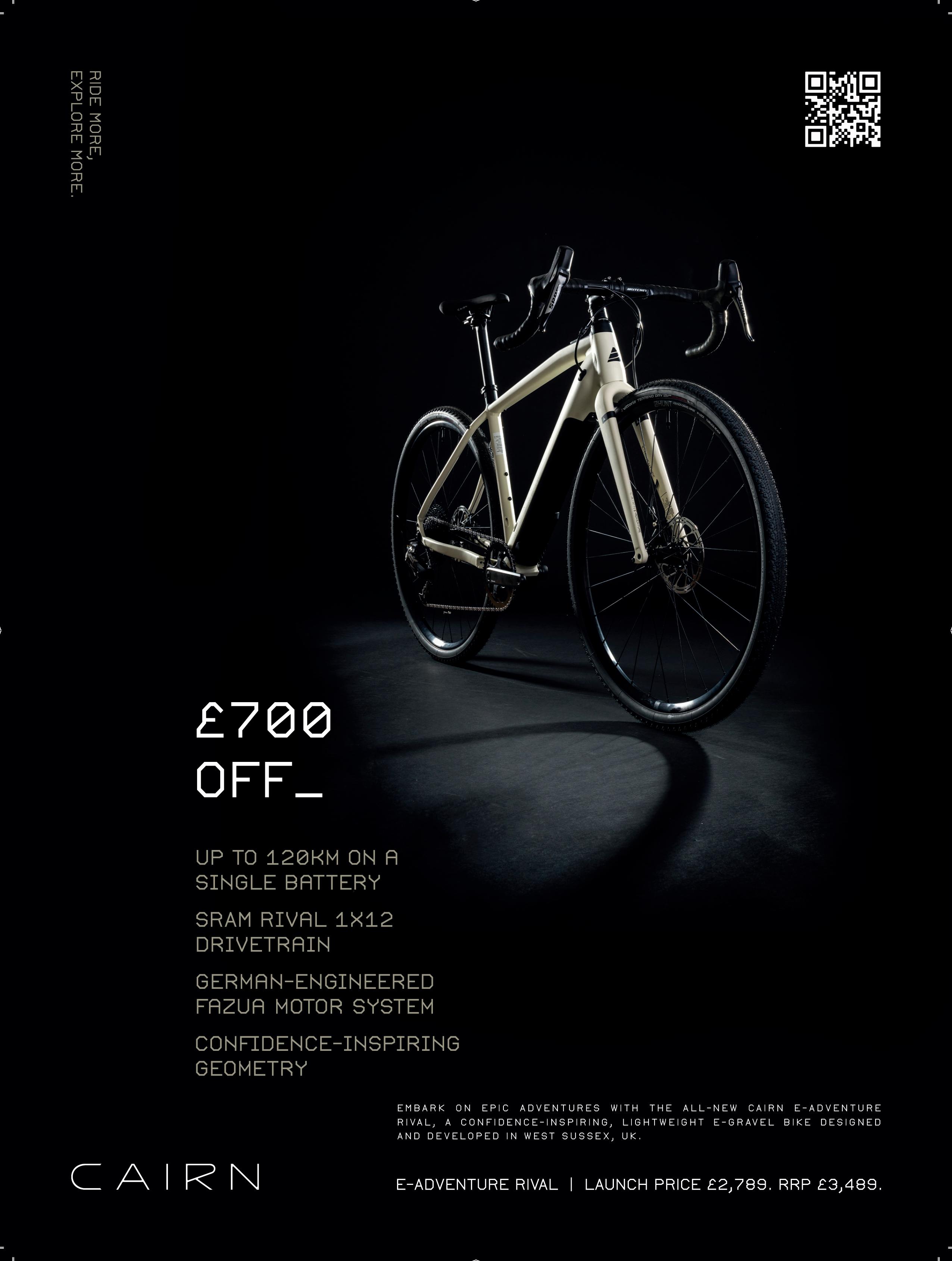
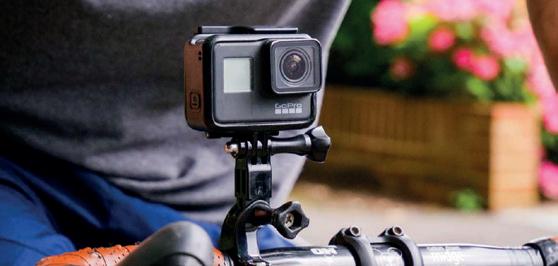
After more than 2,000 Cycling UK members and supporters used our online action to support the at-risk National Dashcam Safety Portal (NDSP), Scottish Transport Minister Fiona Hyslop confirmed in July that the Scottish Government and Police Scotland remain committed to the vital road safety tool. The delays to implementation are still frustrating and we will keep up our campaign until the NDSP is launched.
Protect your bike from theft and damage with Pedal Cover home and contents insurance; members get 15% off. Those looking to plan an autumn trip can save 20% on guidebooks and e-books from new partner Cicerone. Members also receive 12.5% off full-price items online or in store at Cotswold Outdoor. And as the weather turns, why not take advantage of a 10% discount on hiring an indoor trainer from Turbo Trainer Hire? cyclinguk.org/ memberbenefits
Cycling is convenient, affordable, great for the environment and makes you feel good. Yet many people face barriers that prevent them from accessing the benefits that riding a bike brings. At Cycling UK, we’re determined to help people overcome these challenges.
Many people do not have access to a bike and, facing a cost-of-living crisis, cannot afford to go out and buy one. In Scotland, 72% of households with a net annual income of over £50,000 have access to at least one bike, but this falls to 21% for households with an income of £10,000-15,000. Our Access Bikes programme removes this barrier by providing bikes to people experiencing financial hardship. Training and support is also on hand to enable people to cycle confidently.
There are other factors to consider –not having a safe place to store a bike, or feeling uncertain around choosing the right one or how to maintain it. We’re proud to be tackling these barriers through the £1m Scottish Government-funded Cycle Share Fund that launched in July. The fund will support schemes that give people access
to a bike that they don’t own, including loan schemes, subscription services, hire schemes and bike libraries.
Some people feel tied into driving and don’t see any alternative – perhaps they see their journeys as too far or too hilly, or consider that they have too much to transport. E-cycles are a game changer here.
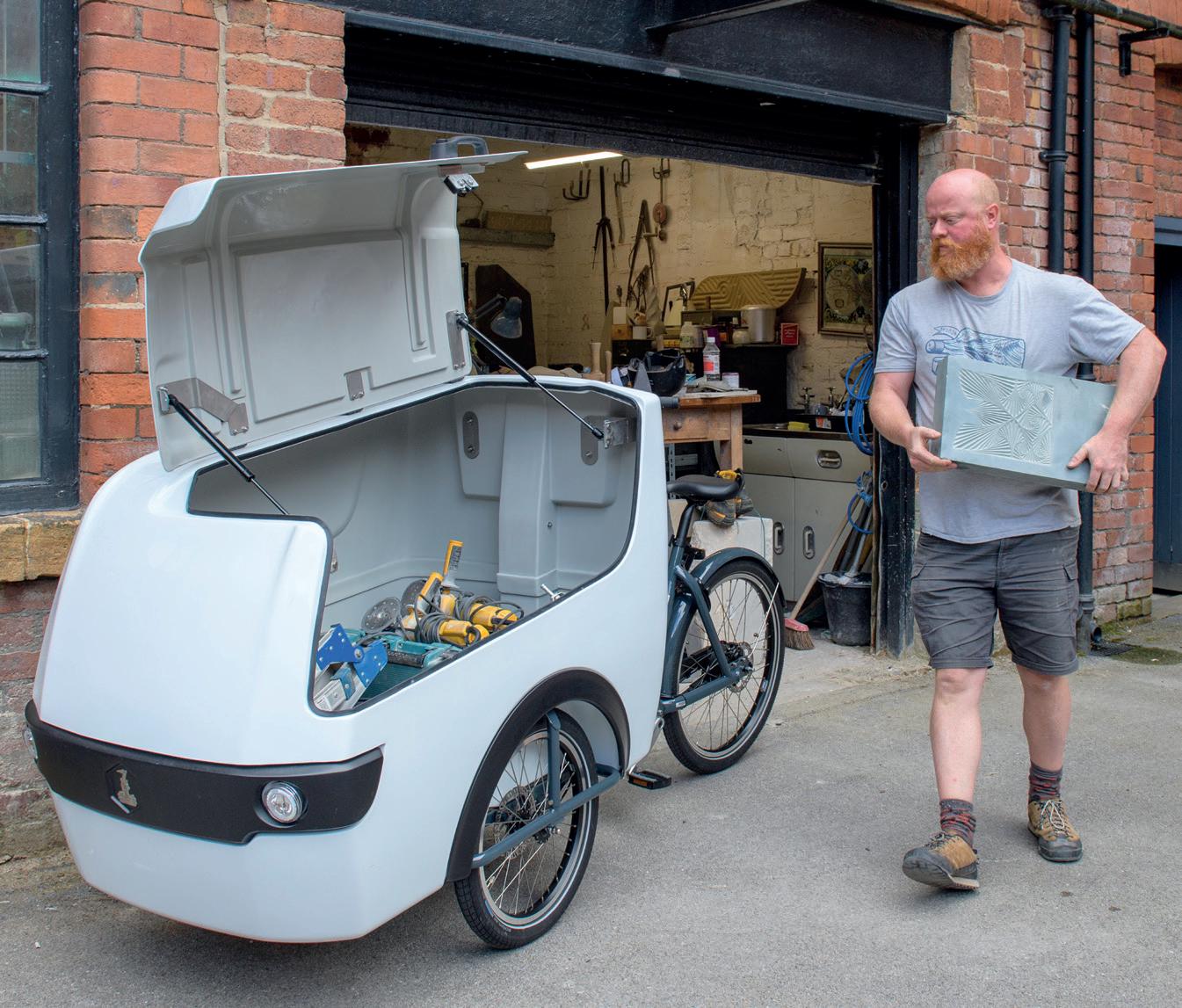
Stonemason Steve Roche was fed up with spending his morning commute stuck in Sheffield’s rush hour traffic, so signed up for a free e-cycle loan from Cycling UK’s Making cycling e-asier scheme. Cycling has cut his 4.5-mile journey by 15 minutes, saving £25 per week on fuel and enabling him to lose weight. “My commute is perfectly doable on an e-bike,” he said. “It now seems like madness that I was driving around, running an engine and getting stuck in traffic every day.” Steve now has an on-loan e-cargo bike that can transport all his tools, and he’s saving up to buy his own.
We will continue to deliver these programmes throughout the year, and we’ll keep you up to date with more of the transformative changes we’re helping people to make.
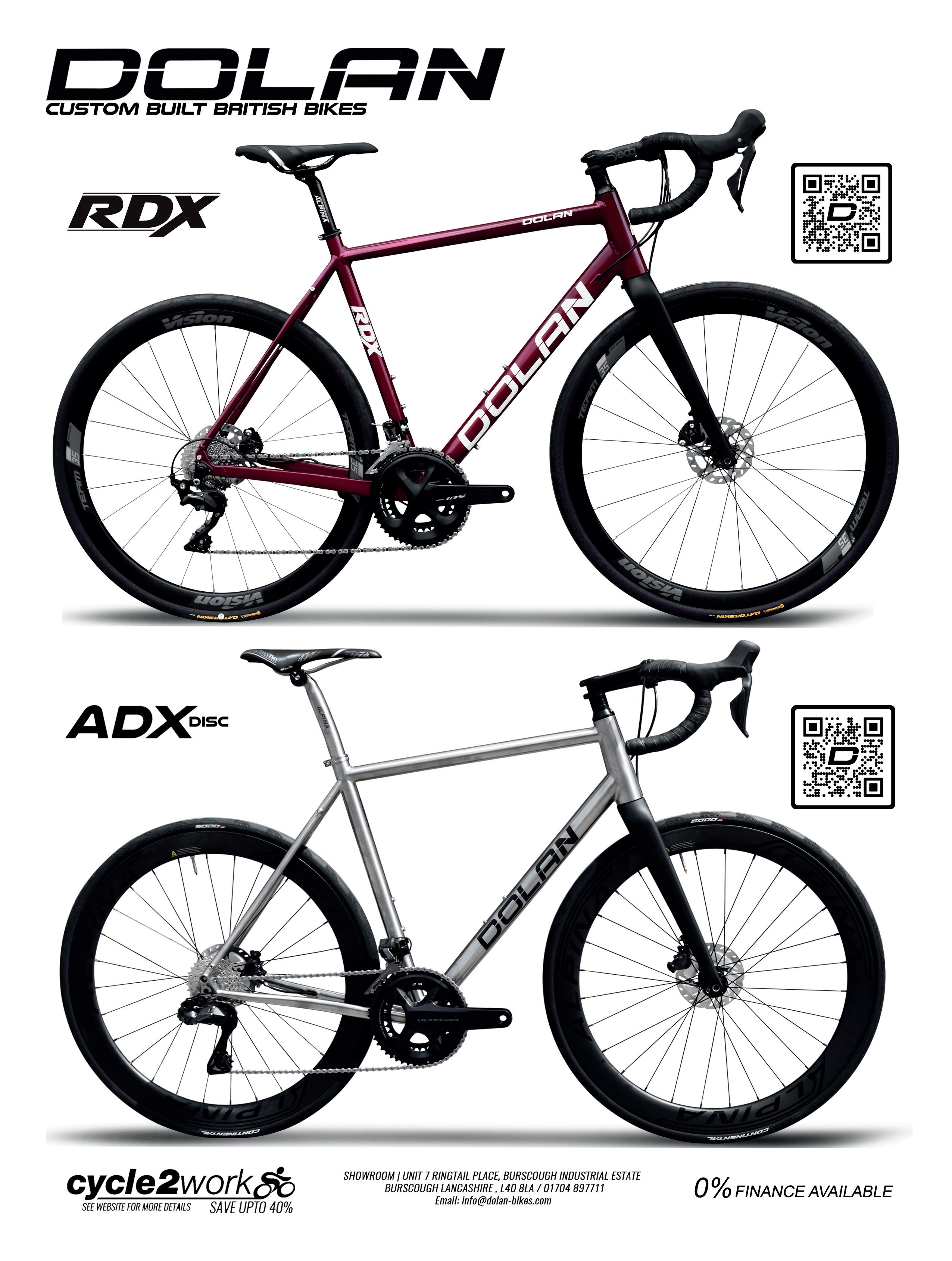
Cycling UK trustee Paul Baker outlines some of the highlights from this year’s annual report, where we look back at what we’ve achieved in the last financial year (April 2022 to March 2023)

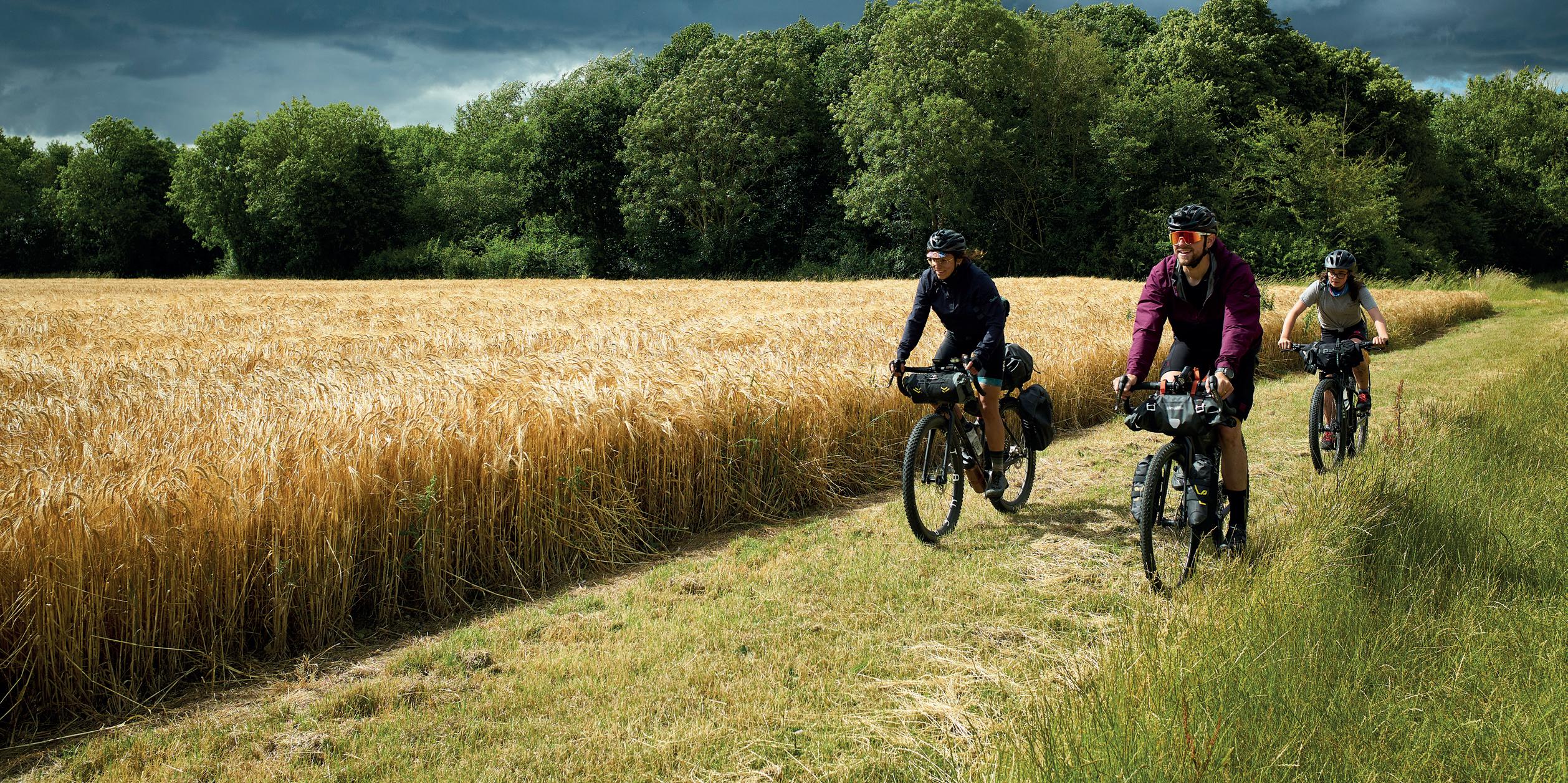
This is the final year in our current strategy and so we’re pleased to be on track to meet our target of reaching one million more cyclists, which includes people who are discovering or rediscovering cycling. Last year was a period of change in the policy and campaigning world, but we had some great successes in our campaigning against that backdrop. Read on for a rundown of some of our highlights from the year just gone.
71,000 cycling UK members
28% are women 34 is the average age of new members
241 people celebrated 75 years or more with us
This year we completed our membership review, which underlined the value of our membership offer to its existing audience. Based on this, we’ve continued to refine what we offer to give members more of what they value most. We’ve also started to develop and test complementary offers for those who aren’t interested in membership but do want to continue to be involved with our work as a charity.
Thanks to our behaviour change programmes we are reaching more non-regular cyclists than ever before. This year 46% of participants did not cycle regularly before being involved in our projects. Our figures show clearly that we are encouraging more people to cycle and that many are swapping their cars for bikes for short journeys. It’s an achievement we are really proud of.
We are also reaching an increasingly diverse range of people. With more than half of our project participants being women and 30% from black and minority ethnic backgrounds, we have evidence that cycling really can be enjoyed by all of us. Winning the tender to deliver the government’s e-cycle trials in
Before taking part in a Big Bike Revival event with Broadmead Community Church in Northampton, John relied on his car because he didn’t feel it was safe to cycle locally. After attending a led ride and servicing the family’s bikes, he’s now keen to get out more together and has started cycling for some of those local journeys that he used to drive. He explained:
“We’re now all safe to ride. We spend time together, which means healthy and happy children.”
65,000+ people at bike repair activities, led rides and events across England
46% were not regular cyclists already
England was an exciting development this year. The Making cycling e-asier project runs in four cities, has proved incredibly popular and is already building the evidence base for e-cycles as a viable alternative to the car for many people, of all ages and backgrounds.
The year has seen our EXPERIENCE project draw to a close. It was funded by the EU Regional Development Fund’s EXPERIENCE project, which supported the creation of three of Cycling UK’s long-distance bikepacking routes – the West Kernow Way, the Cantii Way and the Rebellion Way.

This year it’s been a challenge just keeping up with the fast-moving world of policy in all four nations! But our policy and campaigns team has risen to the challenge. They’ve been well ahead of the increasingly divergent politics in the devolved nations and have supported our growing Cycle Advocacy Network to campaign successfully in their local areas. Most recently, we’ve been campaigning jointly with the Walking and Cycling Alliance to reverse the devastating cuts to active travel funding in England, announced by the transport secretary in March.
85 elected councilors in Scotland pledged their support for cycling ahead of local elections in response to our call for action
2,000 letters were written calling for the continuation of the National Dashcam Safety Portal in Scotland
3,399 member group volunteers
4,015 affiliate group volunteers
reviewing the overall direction. We purchased a training platform to establish role-specific pathways for our direct volunteers. We have also devised and delivered a bespoke ride leader training course for our member groups, which will enable consistency and compliance within our groups’ delivery on the ground.
927 direct volunteers
8,281 total number of volunteers

None of this work would have been possible without our brilliant teams working in finance, IT, HR, volunteering and project management. This year we continued to invest in our back-office support. It’s been a lot of work but is paying off: our online portal now enables those who wish to do so to manage their own membership online; our new database provides all our audiences with timely and relevant information; and our project management support means we can track and organise our many different areas of work across the whole country.
Our volunteer network is crucial to our success so we have been advancing our current training options and
Over the last six months we’ve started work on a new strategy for Cycling UK. We’re taking our time over it because we want to hear from a wide range of people inside and outside the organisation about what they think the future holds for cycling and what our role could be in this. We’ll continue to share our thinking on this as it progresses, and we look forward to publishing the new strategy in 2024. The current strategy is to reach one million more cyclists. Now we want to build on our successes, grow our influence and make an even bigger difference to encouraging cycling in the UK.
One thing we are all agreed on is that cycling is as important now as it has ever been, and has an essential role to play in preventing climate change, boosting the nation’s health and increasing the fun in all our lives.
Thank you to all our brilliant staff, our dedicated trustees, our thousands of committed volunteers and our members for another incredible year for Cycling UK. We are really looking forward to developing our future direction with you.

During lockdown, Lydia Maxwell began a new career: her dog-walking business, Dogboxx, which uses e-cargo trikes.

Tiia Jaakola spoke to her
The best part of each day during lockdown for Cycling UK member Lydia Maxwell was when we were allowed outside for exercise. She was bored, and her work as an English teacher was drying up. Daily walks with her dog led to chance meetings, and through the grapevine Lydia learned of a woman who walked dogs while on furlough “so she didn’t go nuts”.
Someone was needed to take over, however, as the woman in question was pregnant. Lydia was happy to oblige. As she’d always been a dog lover, it was the perfect antidote to being stuck inside. Soon Lydia was taking on more dogs and, before she knew it, it had snowballed into a full-time job.
Unless she’s cycling, it takes Lydia ages to get to the bigger parks in south-east London, where she’s based. She initially bought a secondhand cargo trike, but as the business picked up pace, she soon needed an electric one to do more trips.
Although Lydia had cycled for transport all her life, getting used to a cargo trike didn’t happen instantly. While on a regular two-wheeler you lean into a corner, on the trike you have to counterbalance. You have to go slowly and carefully, and that’s easier if you stick to back roads and bike lanes. “If you go too fast you can end up with one wheel off the ground, like a wheelbarrow that’s about to flip,” she says. “It definitely took some figuring out.”
Dogboxx now has two electric-assist Christiania trikes, and Lydia has hired an assistant. While some manufacturers offer models described as dog friendly, Lydia prefers the Christiania due to the high sides that make the dogs feel safe and secure, while allowing them to “poke their noses over the edge and see what’s going on”.

One of the downsides of the Christiania is a lack of suspension,
so if they hit a bump the dogs will feel it, but Lydia clips their harnesses in so they can’t jump out even if they wanted to.
For anyone thinking of incorporating a cargo bike into running a business, Lydia has some tips. She says that the right model depends entirely on what you’re transporting, so you should try as many different ones as you can, and she suggests taking whatever you’re wanting to transport with you. She recommends attending a cargo bike event or getting in touch with specialists such as the “very nice people at London Green Cycles”, who let her test lots of different brands.
You also need to really think about the route, she says. The Christiania is as wide as a standard wheelchair, and Lydia describes getting to grips with it as “quite an eye opener” for experiencing what wheelchair users have to navigate – such as dropped kerbs, cobbled streets and narrow sections. She says she gained a new appreciation for London’s “fabulous” Cycleways.
Although more inclusive infrastructure, such as parking for wider cycles, is being introduced in Southwark, there’s plenty on London’s old streets that needs a rethink. And sadly, some measures, such as chicanes designed to force motorbikes to slow down, can make things harder for wheelchairs, buggy users or trikes.
One of Lydia’s favourite things about her job are the reactions of passers-by. It’s the way it brings joy to other people, who sometimes stare open mouthed and come up to take photos, saying the trike full of dogs has made their day.
Though bad weather and inconsiderate road users can be a nuisance, Lydia is happy that her job allows her to be outside with dogs all the time, and says cycling gives her a sense of freedom. “It’s a dream come true”, she says.
The Christiania Straight Light is a spacious box trike that’s designed specifically for the transport of up to four children; it can have a rain hood fitted. This model weighs 38kg, with a cargo volume of 270L and maximum box load of 100kg. It costs £2,874 from London Green Cycles, and will be similar elsewhere.
All cargo cycles can be pricey, which puts them out of reach for some. If your employer offers the Cycle to Work Scheme (cyclinguk. org/article/guidecycle-work-scheme), you can make considerable savings by buying one that way. Or you could transport cargo, pets or kids with a cycle trailer instead. Cycling UK members get 10% off Bike Trailer Hire, should you want to try one out. Head to our website to find out more: cyclinguk.org/ member-benefit/10bike-trailer-hire
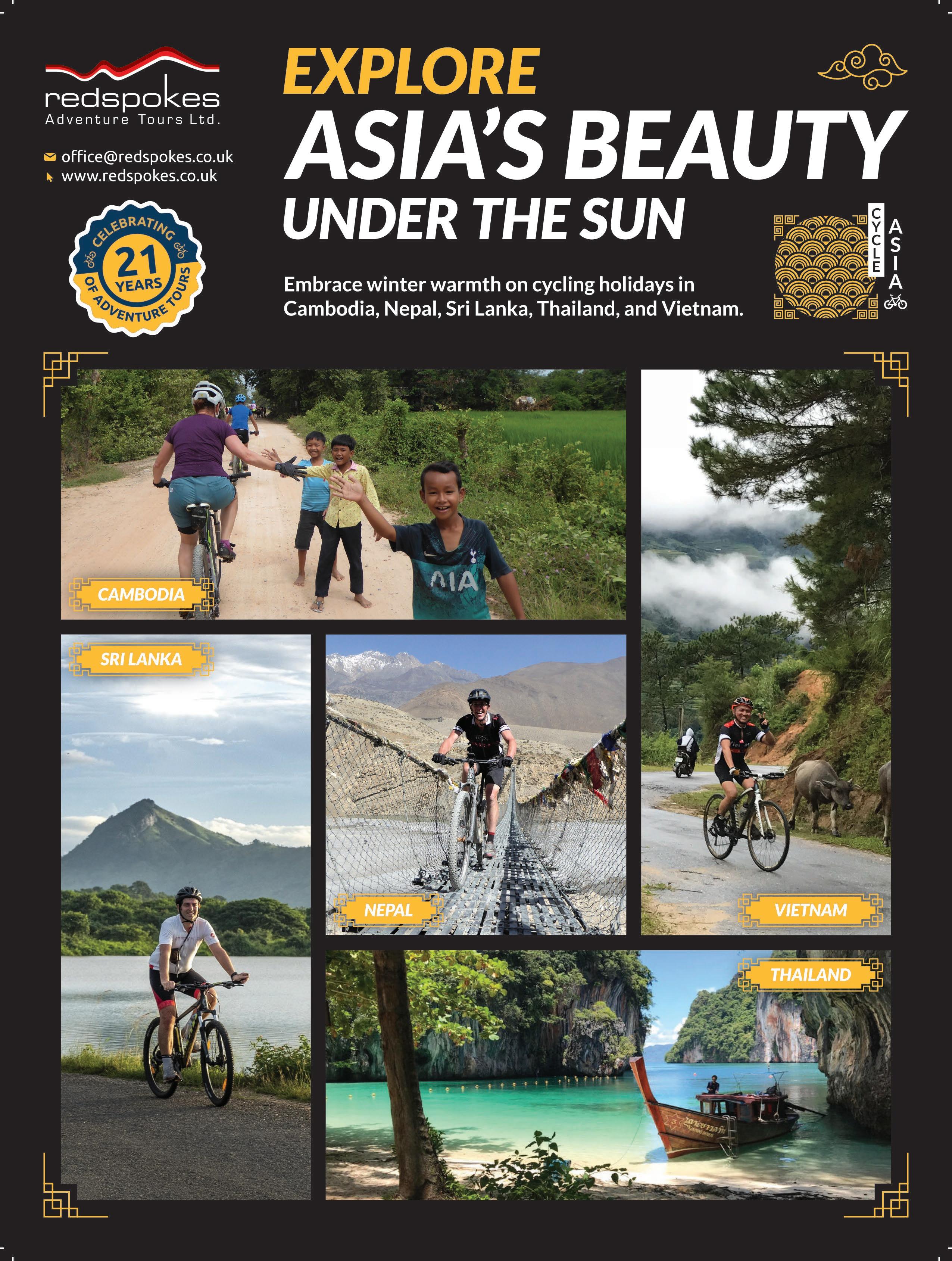




Bespoked, the handbuilt bike show, is back this autumn from 13-15 October – but it’s in Dresden, Germany. Details and tickets from bespoked.cc
1 Cube Trike Family
Hybrid 750 £6,499
Cube’s two-child-carrying e-trike is now available. It’s powered by an 85Nm Bosch Cargo Line motor and a 750Wh battery, and the front half tilts for more bike-like handling. cube.eu
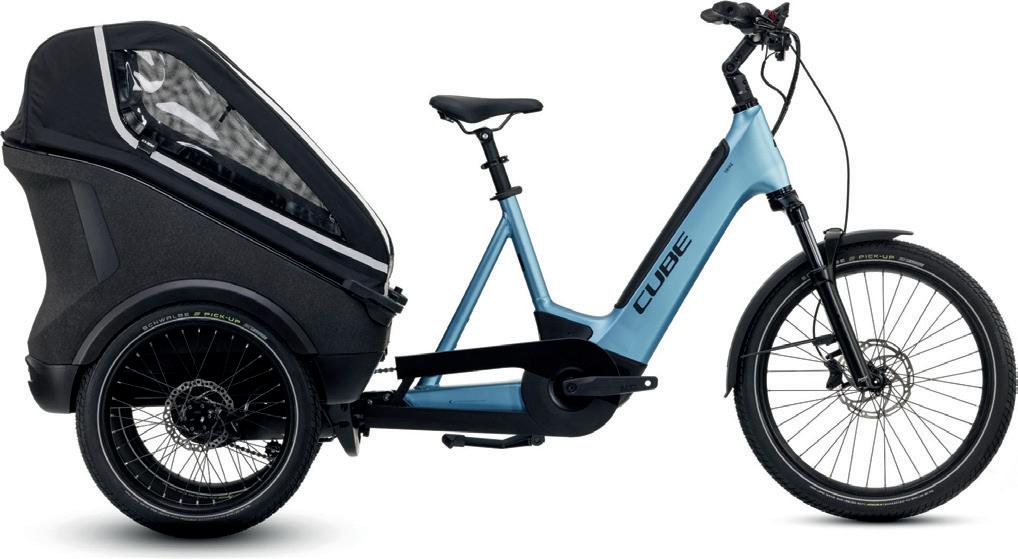
2 Microshift Sword £372+

The new 10-speed groupset has concealed-cable levers but is compatible with Advent X so owners of that might only need a £90 shifter. It’s 1× (11-48 cassette) or 2× (48-31/46-29 chainset, 11-38 cassette). microshift.com
3 Vecnum FreeQuence


Suspension Stem
£299
Intended for gravel, touring and road bikes, this parallelogram suspension stem promises 30mm of adjustable travel. It comes in 90, 105 and 120mm lengths. vecnum.com
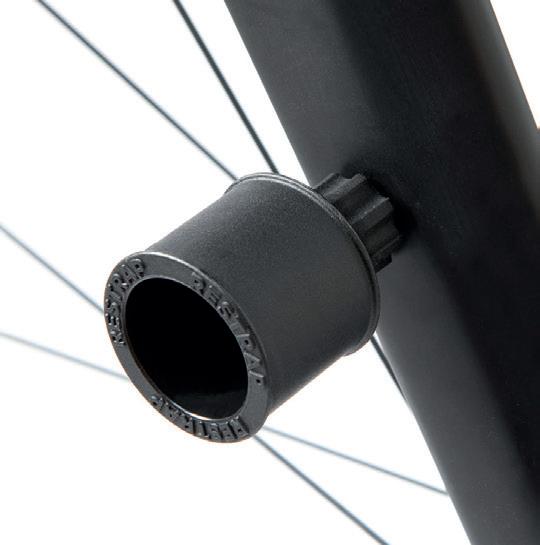
4 Shimano GF800

GTX £219
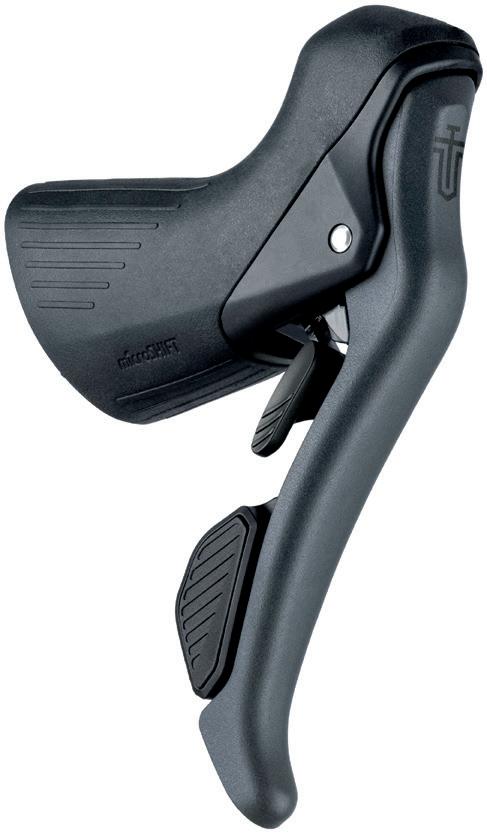
Shimano’s new winter boots for flat pedals. They have a Gore-Tex ‘ankle sock’ liner to keep out the wet, and they fasten with a Boa Fit System L6 dial. Sizes: 38-48. shimano.com

5 Restrap Light Mount £6.99
The neat thing about Restrap’s little light mount, which screws into an M5 eyelet on a fork or seatstay, is that it can also tighten a Hollowtech II left-hand crank. restrap.com
6 Shimano GRX

RX820 £1,350
Shimano’s gravel groupset has now gained a 12-speed version. There are two 1× options, with 10-45 or 10-51 cassettes, and a 2× setup with a 48-31 chainset and 11-34 or 11-36 cassettes. shimano.com

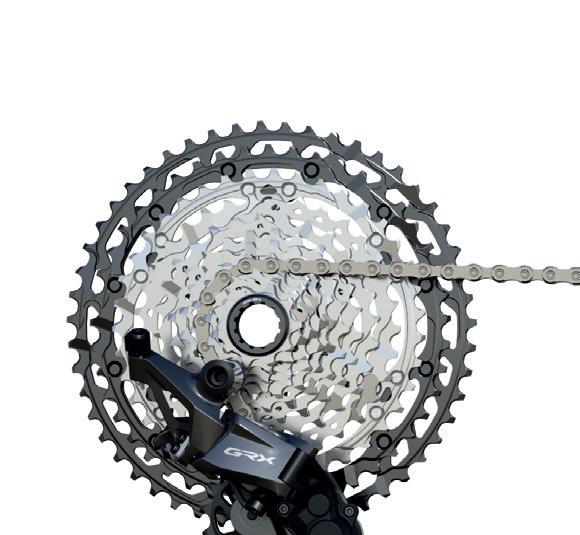
7 Continental Grand Prix 5000 AS TR £84.95+
There’s now a tougher, grippier ‘all-season’ version of Continental’s popular, tubeless-ready GP5000. Sizes are 25-, 28-, 32- and




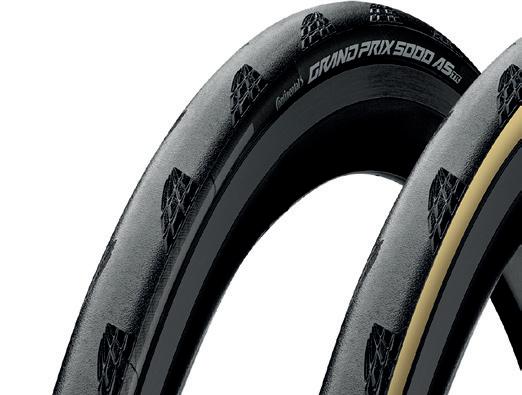
35-622. I’ll be testing some this winter. conti-tyres.co.uk
of the latest bikes and gear online at: cyclinguk.org/cycling-advice
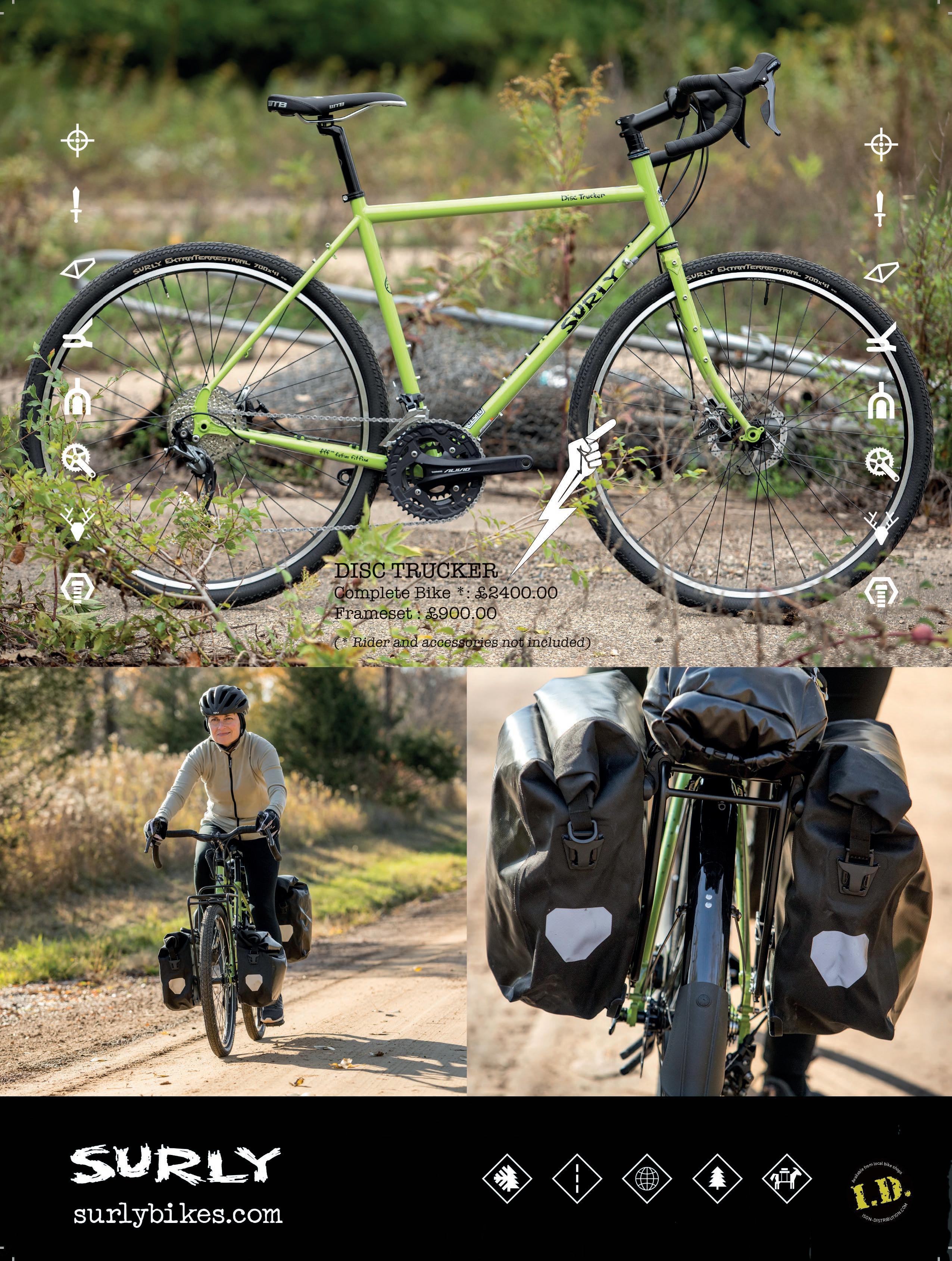
Burley
Versatile child trailer with suspension and optional off-road wheels
£769+ kidsbiketrailers.co.uk
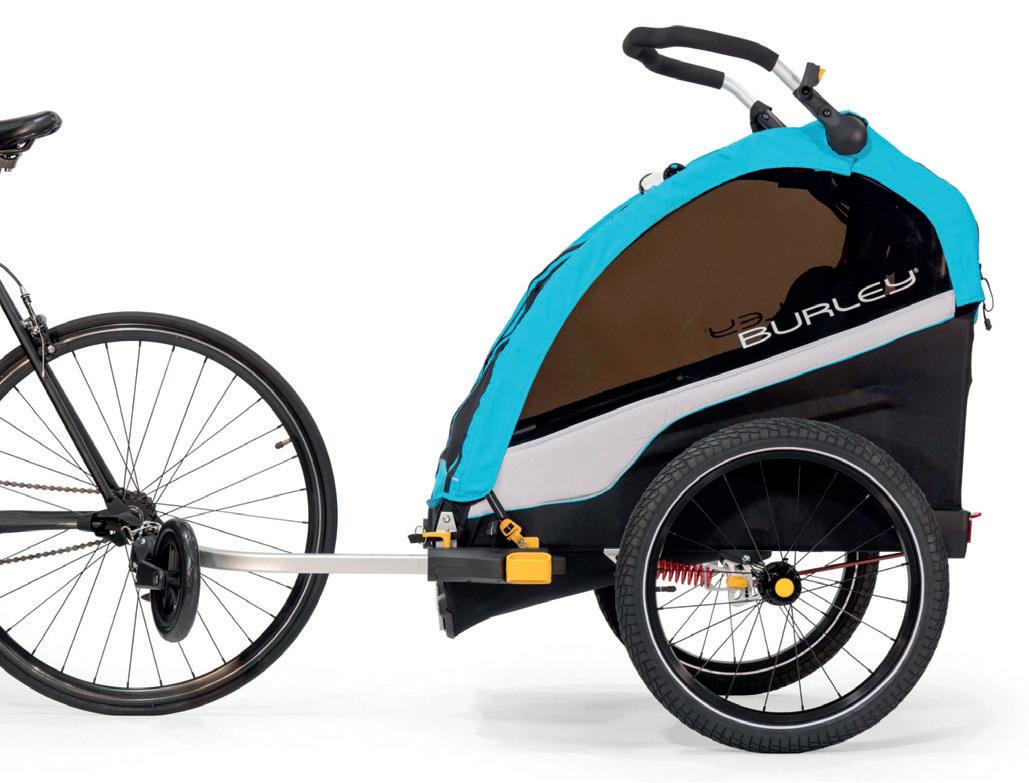
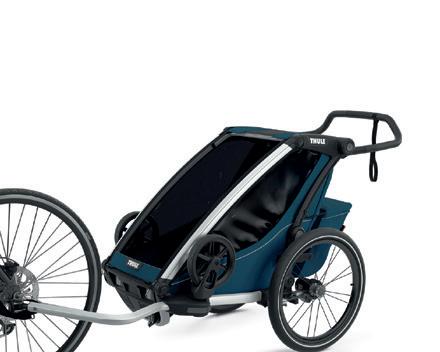
Cycle’s Bike Finder came to our family’s rescue by recommending the Burley D’Lite X when hunting for a means to transport our sixmonth-old. After two weeks of hiring one through Bike Trailer Hire (Cycling UK discount available), along with a Baby Snuggler, we bought the trailer secondhand – adding the optional 16×3.0 wheel kit (+£179) for off-road riding.
Ten months later the trailer has become an essential part of our weekly routine. We’ve been riding on trails, bridleways, byways and of course tarmac, largely on day
trips but a tour in France is scheduled for later this year. Care is needed off road as capsizing is possible.
Comfort for its occupant is provided through an adjustable seat, those big tyres and suspension on the latter, which I’ve just set at max and not touched since. It’s rare to hear any wails from him, unless he’s woken from his nap by a big bump in the road!
Weighing in at 13kg, plus child, you’re likely to tow loads of at least 20kg that will only grow heavier over time. Fortunately, the trailer rolls well – better than any pram – and with low enough gears (or some e-assist) on the towing bike you can ride up most things. There’s space in the rear for storage but it’s not cavernous. With a fabric harness for the child’s seat, you’ll want to avoid
Is there a product you’d like us to test? Write to: Cycle, Cycling UK, Parklands, Railton Rd, Guildford, GU2 9JX or editor@cyclinguk.org
Pros & cons
+ Comfort
+ Rolls well
– Can tip over off road
anything pointy to prevent their discomfort. There’s a handy sunscreen, which works with a fine mesh for sunnier, hotter days, and a transparent rain cover for damper ones. Be warned: without the rain cover, anything but full-length mudguards and flap will see your wee one get a face full of muck – which never happened with us, of course…
Bikes with QR skewers have a solid hitch that feeds onto the skewer. For thru-axles, contact Bike Trailer Hire and they should be able to sort you out. Depending on rear rack placement, you might struggle to attach the trailer, but overall the trailer is simple to fit, if awkward when you don’t have something to lean your bike against.
A flag and reflectors fore and aft help with visibility, and there are also tabs to fit rear bike lights. For transportation, it folds down fairly small. It’s easily done, with no tools required, so it’s ideal for car or train travel.
Sam JonesAt Cycle, we are proudly independent. There’s no pressure to please advertisers as we’re funded by your membership. Our product reviews aren’t press releases; they’re written by experienced cyclists after thorough testing.

CROSS £949
Similar weight, versatility of use, features and comfort to the D’Lite X, the Chariot Cross is more expensive but looks to pip it when it comes to boot space, which might make it better on tour. thule.com

SPORT €1,720
This single-wheel trailer is favoured by mountain bikers and dirt-road family tourers. It needs to be imported – from, for example, German webshop bike-components.de tout-terrain.de
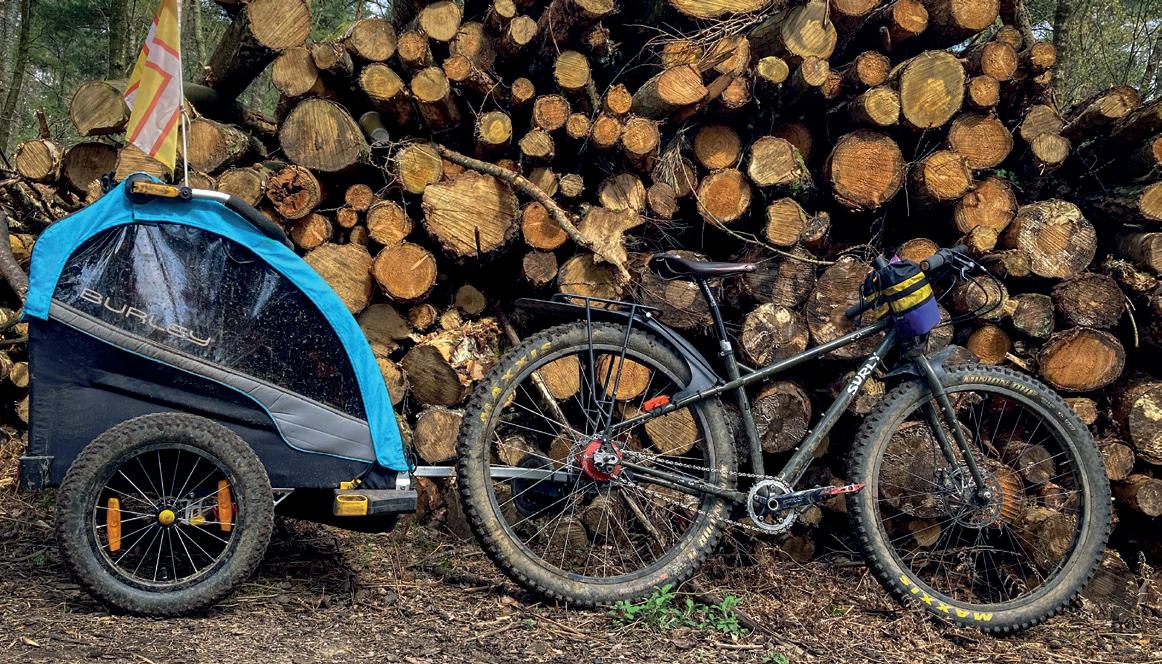
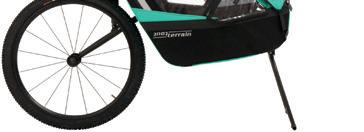
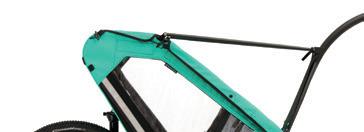
It’s an impressively made trailer that allows us to keep riding with the latest addition to our family. Care is needed off road, but its beefier wheels and suspension will tackle most terrain while keeping the small one comfortable and safe.
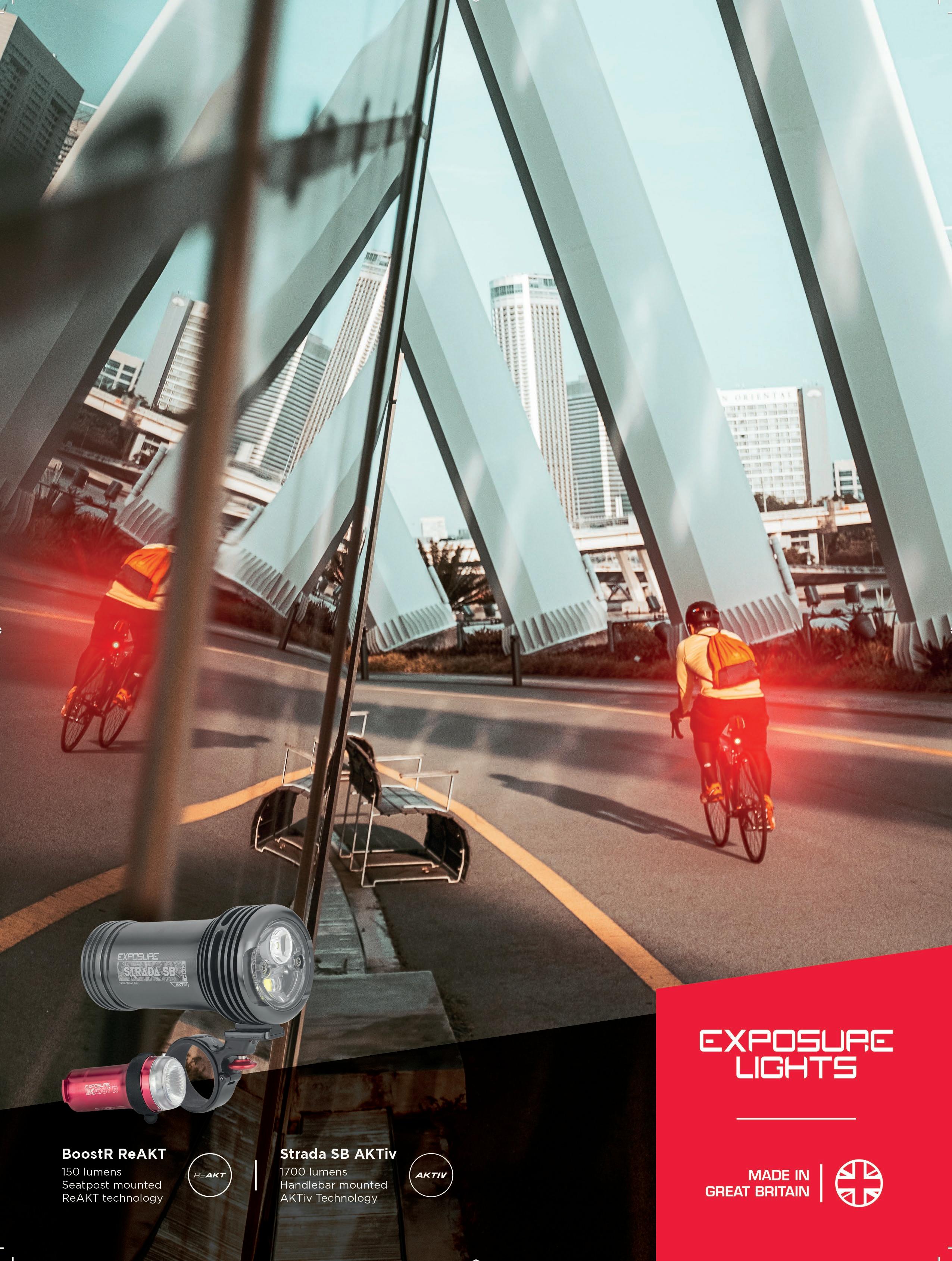
£32.99 & £34.99 restrap.com
Pouch or roll? These two saddle packs from Restrap use two different approaches for the task of holding and attaching to the cycle the various in-ride service items a cyclist may feel it prudent to carry. Of the two, the Tool Pouch is the more road bike orientated, with a neat appearance and, on the face of it, limited capacity of 0.6L. The Tool Roll looks capable of swallowing several lengthy, bulky tools rolled up inside its three internal pockets. Looks can, of course, be deceptive.
Constructed from stiff, rubbery Hypalon fabric, the 90g Tool Roll is divided vertically into three sections, with a flap running along the top facing inwards to cover what appear to be deep pockets. Lift the flap, however, and the end two compartments are stitched over, the only openings a couple of slits on the left and one on the right.
The idea, presumably, is to insert tools inside the slits and under the flaps to prevent them falling out. The middle pocket is barely covered by the flap and will only just accept the two carefully rolled 700×28C innertubes that go easily into the Tool Pouch. Better to secure them using the quick-release strap on the front face of the middle pocket, although either way limits the capacity of the pocket itself.
The Tool Roll may work with long, slender objects such as individual hex keys or oldschool, pressed-steel spanners but struggles with stubby items, which get in the way when folding it up. Once this is done, a wide elastic strap is pulled over from the back as a closure, and the whole attached to the saddle rails using an adjustable strap with a quick-release buckle.
Altogether more conventional, the 80g Tool Pouch has a deep, wide pocket large enough
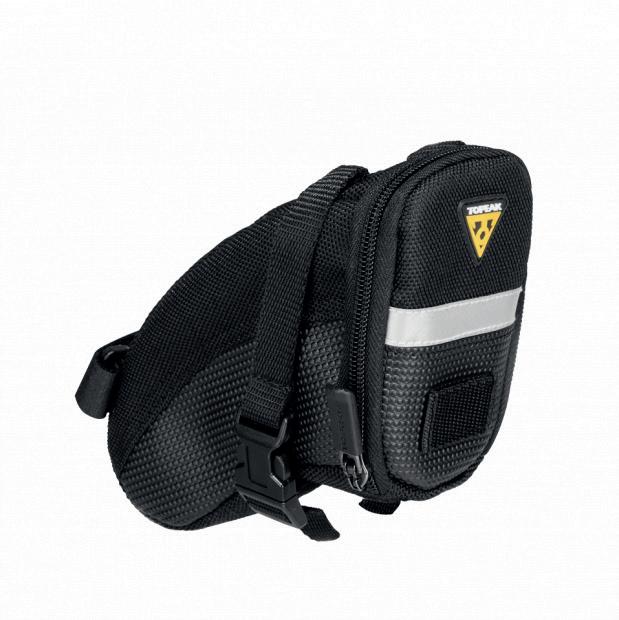
to accept two folded 700C innertubes, a small puncture repair kit and a multitool, with an internal netting wall to separate smaller stuff such as a spoke key, tyre lever or chain tool. Made using a heavy-duty 1000D nylon outer that shrugs off dirt, with a lightweight nylon liner and thin foam padding between them, the pouch has a covering flap with extensive Velcro on the underside to ensure secure closure whether stuffed or lightly packed. The adjustable retention strap is particularly effective and, with reflective detailing and a veganfriendly label, completes a nicely thought-out product.
Richard HallettGetting both the details and overall layout right, the Tool Pouch is an effective and pleasing piece of kit. Unconventional in many respects, the Tool Roll is a niche product that may work well for the right buyer.
ALTURA CYCLING TOOL ROLL
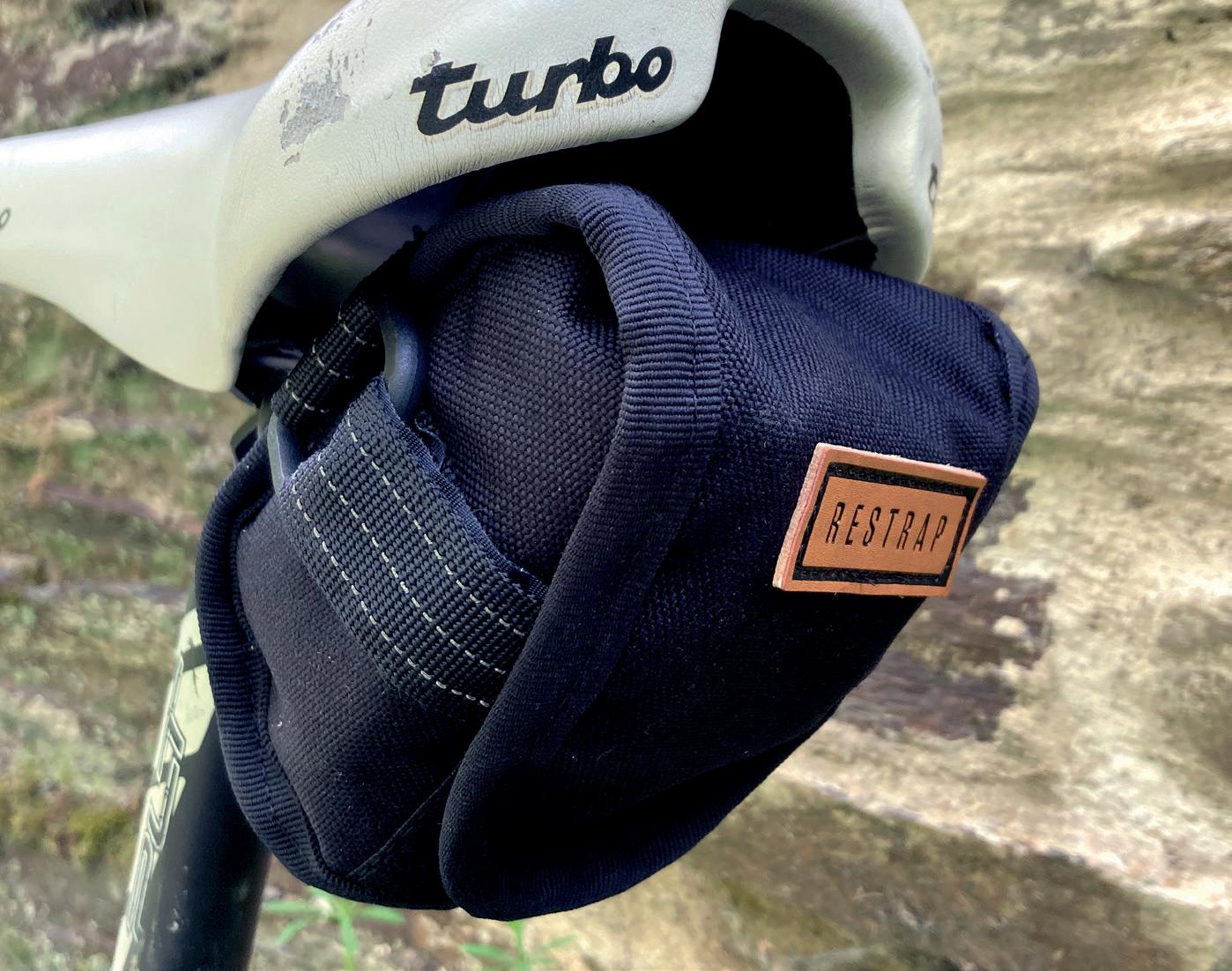
£15
Waxed cotton, fabric roll-bag with deep, flapcovered pockets. Has reflective detailing and a Hypalon strap. altura.co.uk
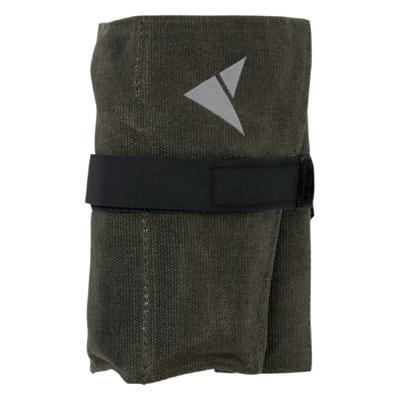
TOPEAK AERO WEDGE – STRAP MOUNT £17.99
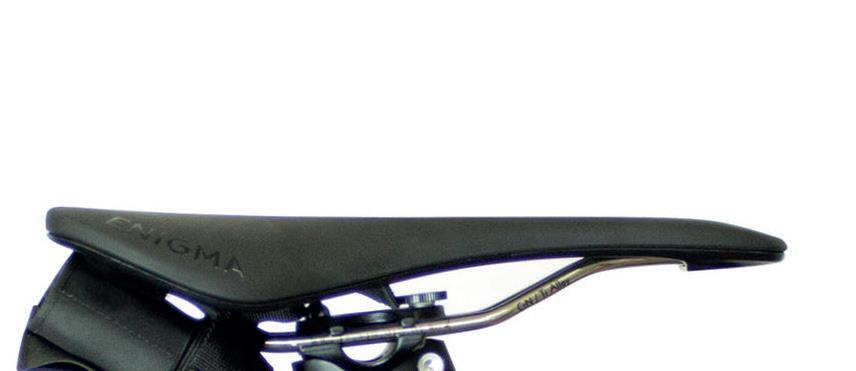
Offered in four sizes, from 0.41L to 1.97L, the larger sizes (M and L) are expandable and also have a mini-pump mount. topeak.com
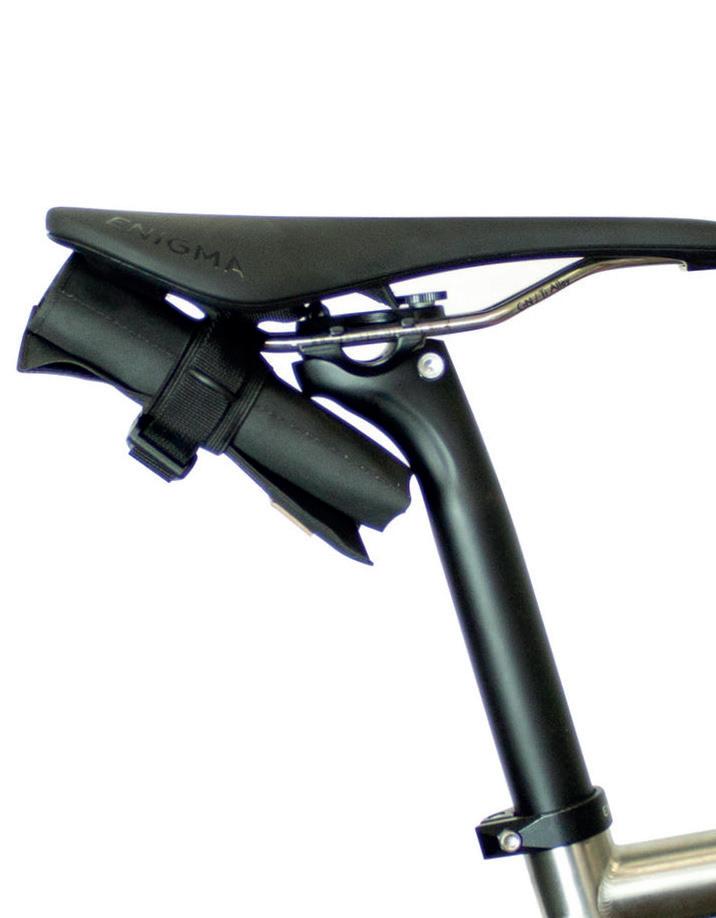

Halfords
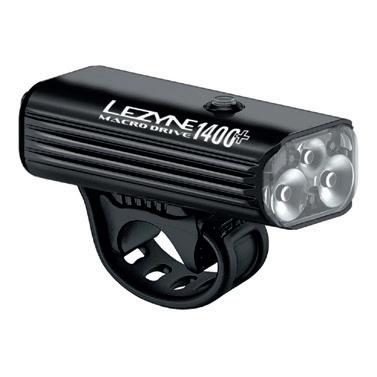

Powerful
£60 halfords.com
Halfords’ most powerful own-brand light is designed to be used on road and off. To that end it has two high-power LEDs with different lenses. The right-hand one has a wider, flatter beam to prevent dazzling drivers, while the left has a torch-like beam with a strong central spot to show the way off road.
The three lowest settings –Eco (28 lumens), Low (270) and Medium (500) – use only the right-hand LED and lens. High (1,170) and Max (1,800) use both lenses, as do the three flashing settings. While you could run the light in High or Max on an unlit road, then switch to a
RAVEMEN PR1600
£139.99
Dual-beam 1,600-lumen light with a better ‘dipped’ option for roads and a remote switch. Review online: cyclinguk.org/cycle-magazine/ review-ravemen-pr1600. ravemen.com
lower setting on seeing another road user approaching, this is complicated by the lighting mode sequence: it’s a loop that goes one way. So to get to Low from High, you have to go through Max, the three flashing settings and Eco. You can’t just shut off the brighter lens, as you can with the Ravemen (below). But that’s this light’s only real weakness. It’s still effective on road and, more especially, off. It’s easy to swap between bikes as multiple brackets are supplied. These all use a Garmin-compatible quarter-turn mount and comprise: a rubber strap mount (only useful on road); a bolt-on out-front mount;
A versatile and wellmade front light that belies its £60 price tag. Its strongest features are its punchy off-road performance, the selection of sturdy brackets supplied and the swappable batteries that you can also use as a powerbank for your phone.

a Go-Pro-style mount for fitting the light upside down to an outfront mount; and a bolt-on strap mount (pictured). Attachment brackets are usually the bane of budget lights. Not here.
The light itself is also well made. The body is CNCmachined aluminium and is waterproof to IPX5. A rubber cover hides the USB-C port used for charging. This port can also be used as an outlet, with the light’s batteries acting as a powerbank for your phone.
The batteries are separates – a couple of 3,200mAh li-ions that are easily accessible. This has a couple of advantages over an integral battery: you don’t have to bin the light when the batteries die for good; and you can carry spare batteries and switch them on a longer ride.
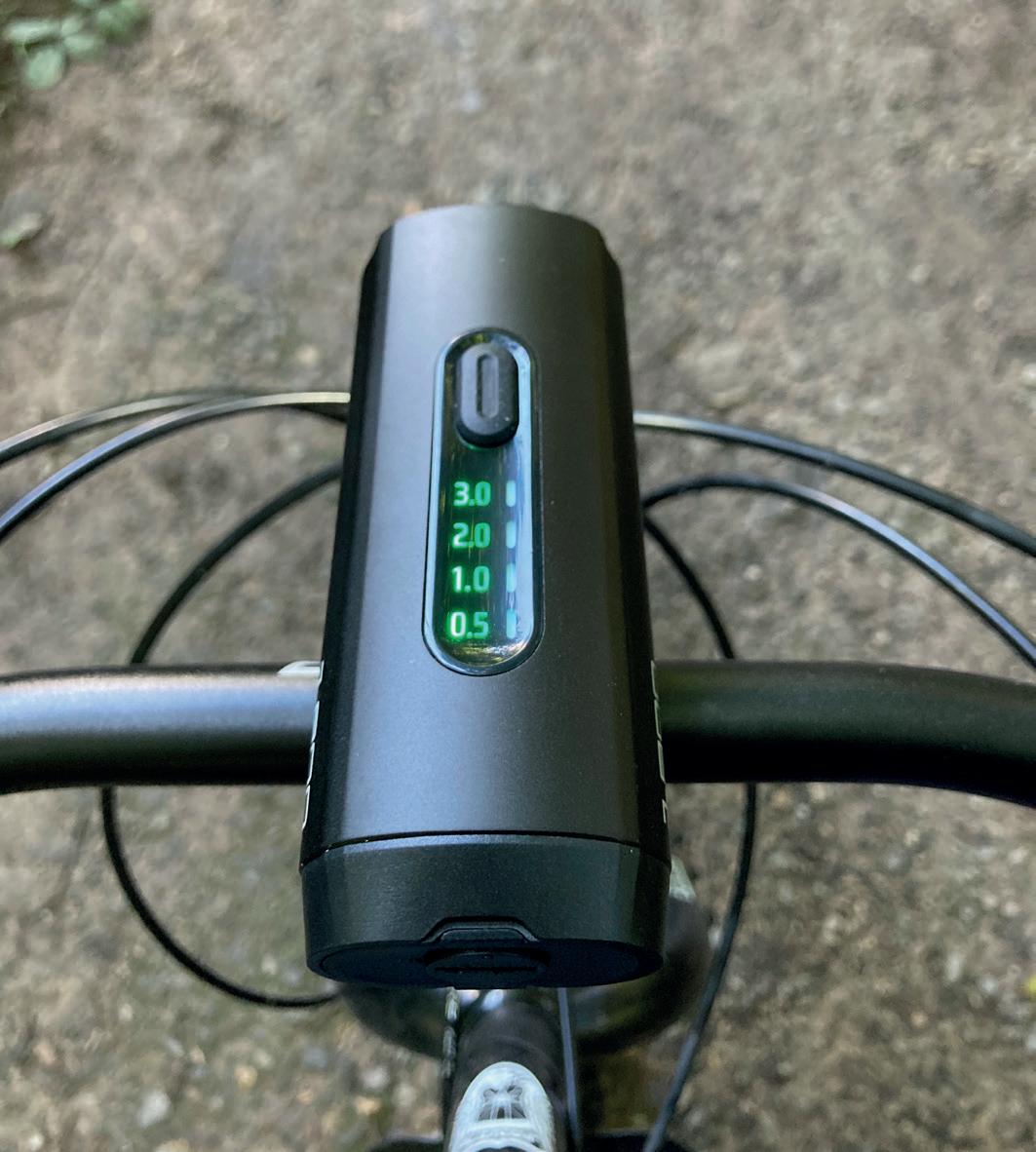
(A pair of Halfords Adv 1800Lm Spare Batteries costs £15.)
The light weighs 256g with batteries installed. Run times for the more useful settings are: Low, 6hr 30min; Medium, 4hr; High, 2hr; Max, 1hr 30min.
Dan Joyce
LEZYNE MACRO DRIVE 1400+ £100
Runs for an impressive three hours in 1,400-lumen max setting or 25 hours at 200 lumens. Rubber strap mounting. GoPro mount option and charging cable cost extra. lezyne.com

Details
By: Markus StitzPublisher: Vertebrate
I DELVED INTO Bikepacking Scotland seeking to find inspiration for future adventures far from home – and there are plenty here. For starters, the breathtaking scenery of the Cateran Gran Fondo and, more ambitiously, the 420-mile Wild About Argyll Trail have both been added to my to-do list. However, it also reminded me of the opportunities on my doorstep, with the familyfriendly Go East Lothian Trail and coast-to-coast John Muir Way both passing just 300m from my front door. The perfect opportunity, then, to test out Markus Stitz’s route guidance.
Details
By: various authors
Publisher: Lonely Planet
Price: £29
ISBN: 9781838695019
Cycle doesn’t feature all books received. Reviewers pick the ones they think you need to know about from the editor’s list. Send books to: Cycle, Cycling UK, Parklands, Railton Rd, Guildford, GU2 9JX

A FEAST FOR the eyes, this hefty coffee table book is bursting with beautiful full-page images that will fill your head with daydreams of adventures near and far. There’s lots of information about difficulty levels, the best time of year to visit, how to get to the start point and whether camping is compatible with the local wildlife. I was pleased to see Cycling UK’s King Alfred’s Way and West Kernow Way in here alongside some pretty epic routes.
Sophie GordonDetails
By: Kate Rawles
Publisher: Icon Books
Price: £18.99
Publishing
Price: £20
ISBN: 9781839811937
I found the punchy descriptions to have a good level of detail – identifying the key landmarks and points of interest without the forensic detail that I’ve found overwhelming in some other guides. I was glad to see listings of local eateries and accommodation options for each route, alongside bike shops and cycle hire locations.
The ‘route conditions’ section is simple yet invaluable, giving you an exact percentage breakdown of singletrack, path, cycle path and road to aid with bike choice and trip planning. The wee route profiles are also a nice touch, providing an at-a-glance idea of where the bulk of the climbing will be found, and there’s a GPX file for each route.
Alongside the 20 inspiring and varied routes (who doesn’t read ‘Ayrshire Alps, Coast & Castles’ and want to immediately jump on their bike?)
Cycling UK members save £5 if they buy any two of the following titles and £10 if they buy any three: Bikepacking Scotland, Great British Gravel Rides, Big Rides Great Britain and Ireland. Use the code CYCLINGUK at cyclinguk.org/ bikepacking-scotland-discount
there’s a detailed introductory section that will be particularly handy for newer bikepackers, and profiles on Scottish adventure cycling luminaries such as Jenny Graham and Mark Beaumont. Allied with some beautiful photography, this is a guide I can wholeheartedly recommend.
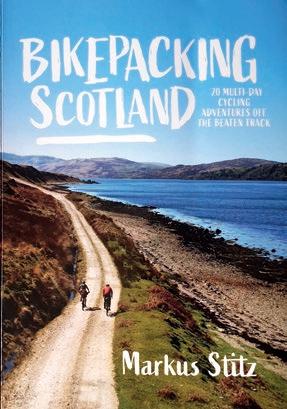
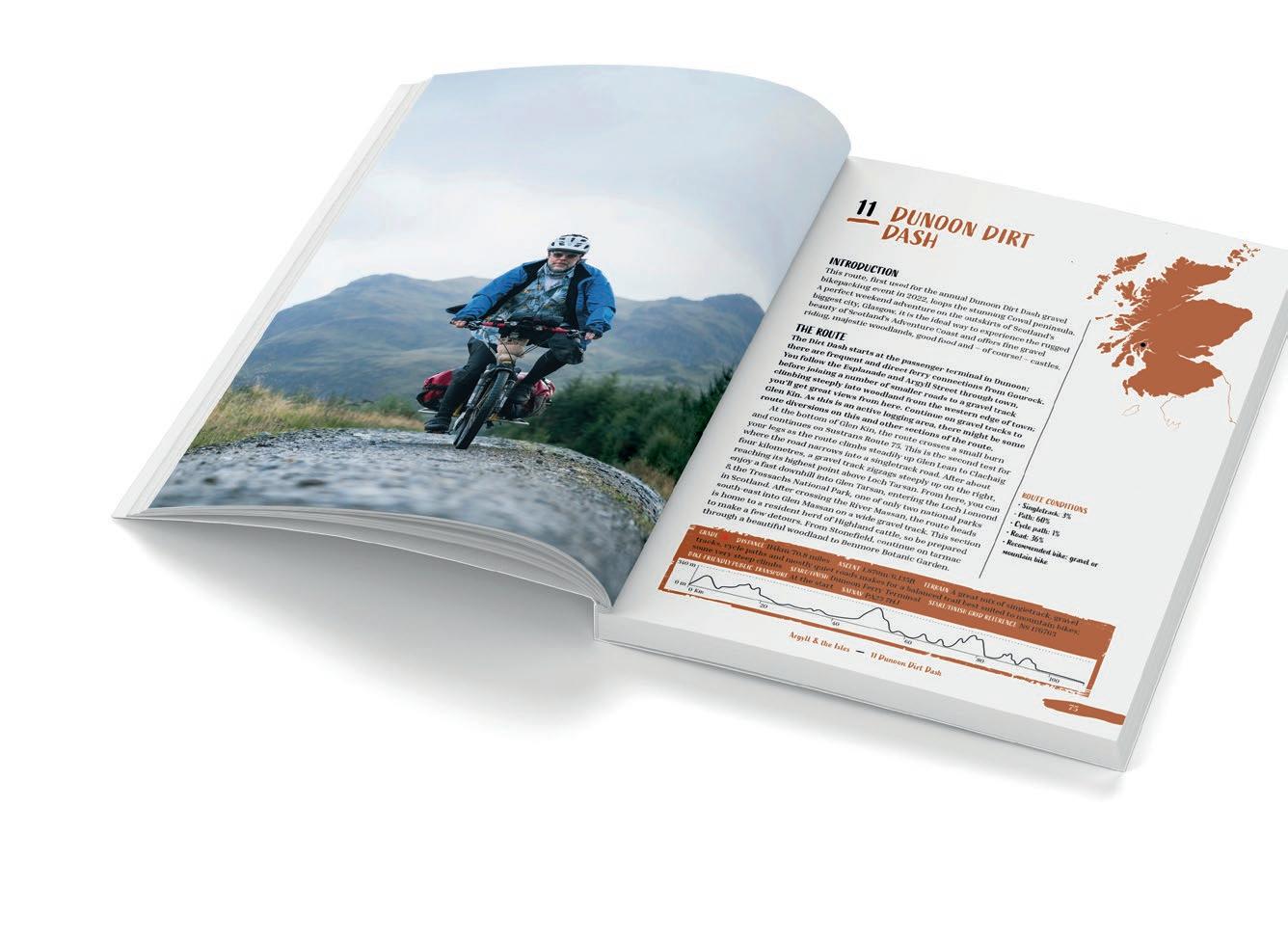 Sam Waller
Sam Waller
ISBN: 9781785787874
BY TURNS DEPRESSING and inspiring, Kate Rawles’s second book details her 8,000-mile trip through South America by bamboo bicycle. She looks at the rich biodiversity of the region, the ways in which it is under threat and the innovative schemes being devised to prevent its loss. Kate travels as sustainably as possible, searching out projects to visit to try to understand what can be done to prevent the catastrophic loss of the habitats and species on which humanity’s existence depends. A fascinating and enjoyable book.
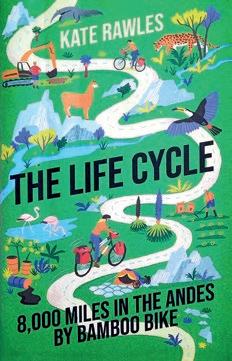 Julie Rand
Julie Rand
Details
By: Denis Pye
Publisher: National
Clarion 1895 pub.
Price: £12.50 inc p&p from cgoode@ yorkshire.net
ISBN: 9780952507130
AS A TEENAGER I was riding with Bury CTC when we were passed by a group of cyclists described as “the other lot”: the Bury Clarion. Half an hour later, the politics and history were still being explained to me, though Denis Pye’s account is undoubtedly far more balanced! The Clarion Clubs thought that socialism could only come through cycling. In the 1930s they attacked CTC, saying “it glorifies capitalism and religion by electing kings and landowners as its patrons and presidents”. If anyone tells you cycling isn’t political, point them to this historical gem.
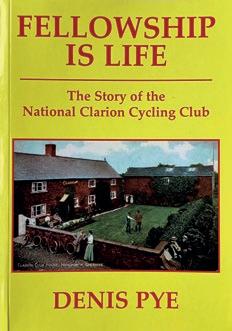 Duncan Dollimore
Duncan Dollimore
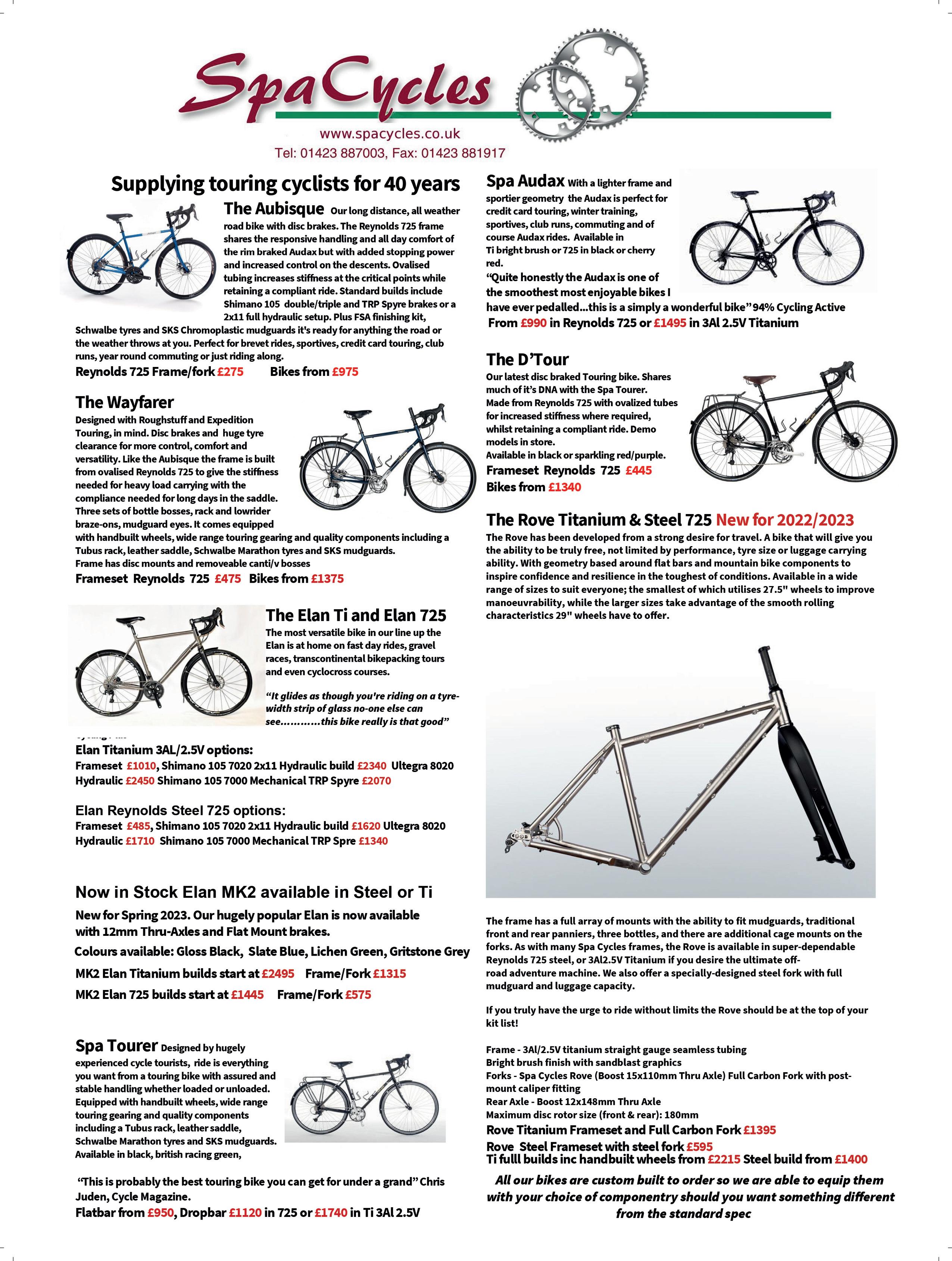
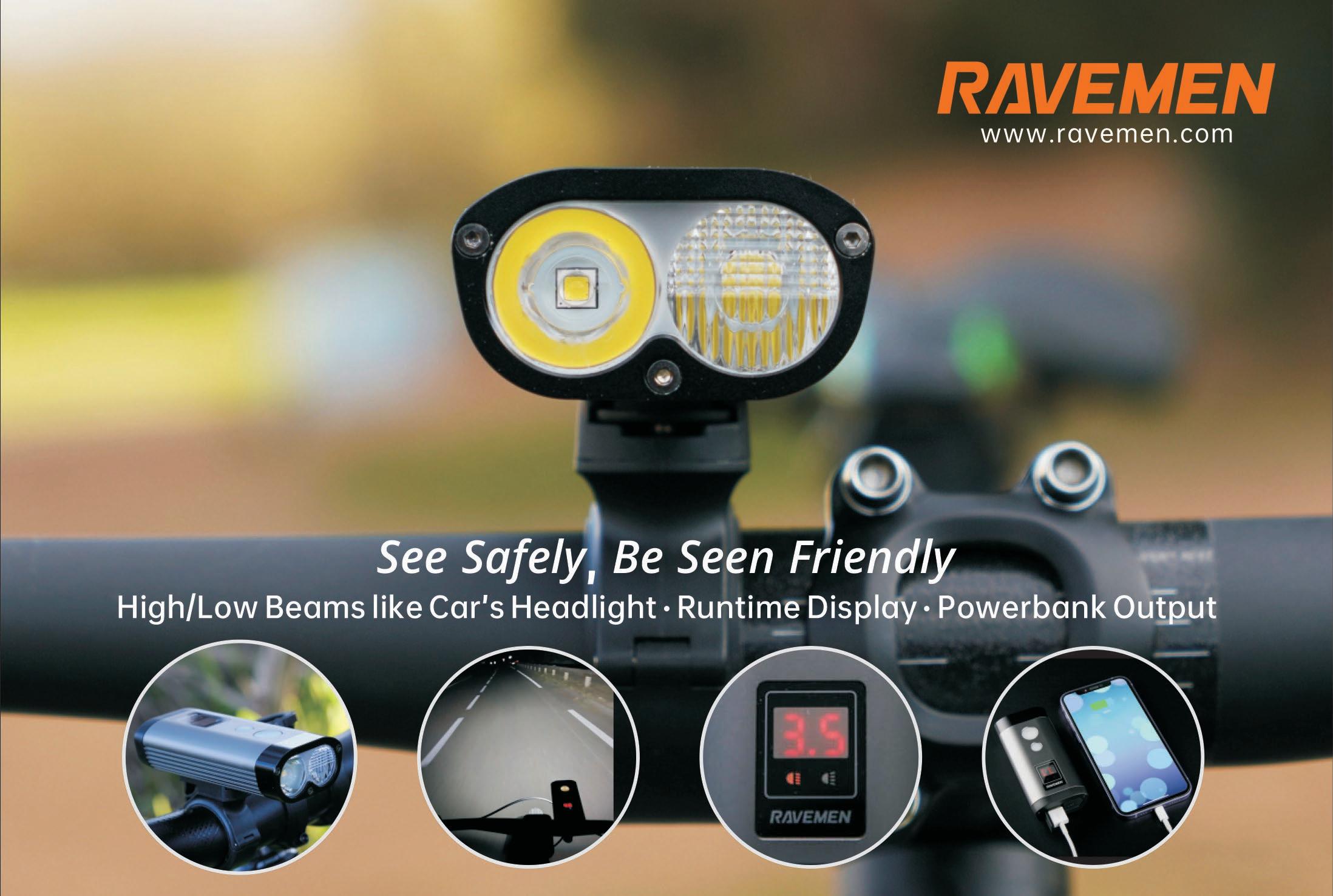
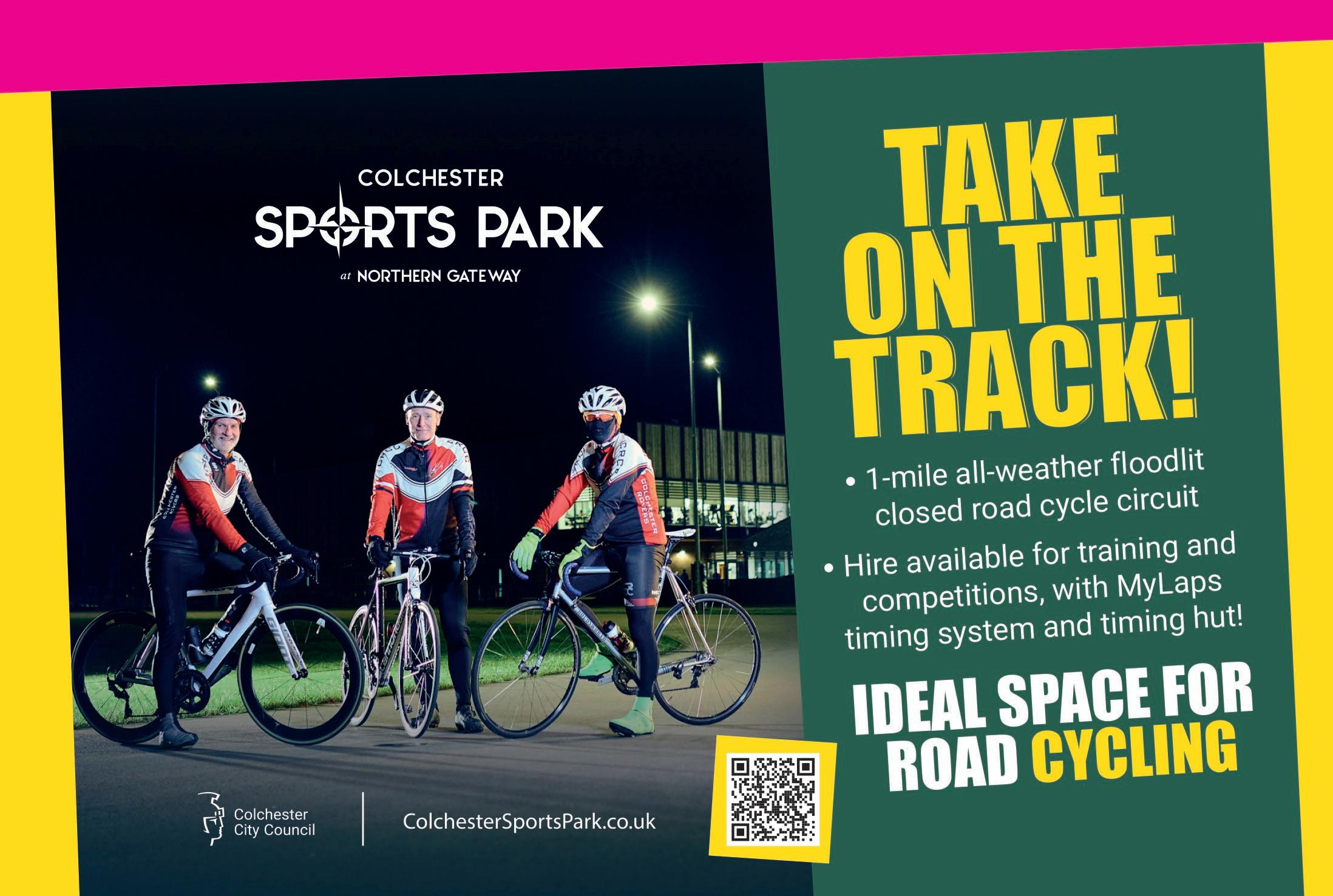
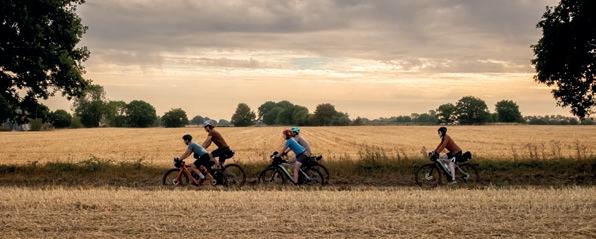
LETTERS are edited for space, clarity and, if necessary, legality. The editor reads and automatically acknowledges all letters but publishes only a selection. Feedback for the next issue must arrive by 31 October. Please include your membership number.
WRITE TO: Letters, Cycle, Cycling UK, Parklands, Railton Rd, Guildford, GU2 9JX or email editor@cyclinguk.org
With the return of the Gower and Swansea Cycling Festival this August, member volunteers were busy beforehand getting the word out to encourage new riders and old to join in. Lorraine was one of our would-be festival cyclists, but at just under five feet tall she was struggling to find a decent bike that didn’t look like a child’s.
So the review of the small Islabikes Luath by Pip Munday in the latest issue was really useful to us.
The letter of the month wins a set of Trace and Tracer Mk2 DayBright lights, courtesy of Exposure Lights. These small (35g), rechargeable lights are ideal for urban riders or any cyclist wanting to be seen easily: the front emits up to 125 lumens, the rear up to 75. Conspicuity is boosted by excellent side visibility and an optional DayBright pulse pattern. The casing is durably made from CNC’d aluminium and is waterproof to IP65. For details, or to purchase Exposure lights, visit exposure-use.com/ Brands/Exposure-Lights

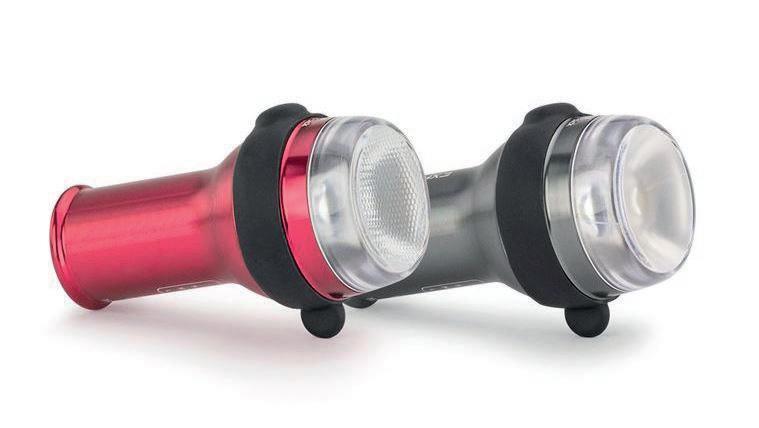
What a great route! I’m one of eight members of Huddersfield CTC who have just completed the tour over five days. I have two observations. Firstly, I was pleased how patient, tolerant and unhurried the vast majority of motorists were. My other observation is the economic impact.
We were a group aged 65-70, neither rich nor poor but prepared to pay for a comfortable bed at night, a shower and a meal. We visited hotels, pubs, B&Bs and cafés along the route, bought ice creams and ate in and out. All told, over the time we were in Norfolk, we put over £3k into the local economy, nearer £4k. Several businesses confirmed they are feeling the benefit of Rebellion Way visitor numbers adding to their turnover.
We need to be spreading this message: cycling is good for everyone, including businesses. Thanks for developing the route. It was fabulous.
Stephen KennedyArmed with the technical information we needed, we decided to have a road trip from Swansea up to Ludlow, where Islabikes is based, so that Lorraine could have a test ride of different models. The Islabikes unit is a modern building, light and airy, with everything you need (including loos) to comfortably spend some time getting the right bike.
We were greeted by MD Tim Goodall. Lorraine explained her needs, and also her fears about getting back on a bike. Tim was so chilled. He explained the benefits of two step-through bikes and suggested a test ride outside the building. There was a straight and flat tarmac path, which was perfect for testing the bikes. Lorraine had not been on a bike for two years after a serious accident with another cyclist.
Tim was encouraging and patient and got her confidently riding and dismounting safely within minutes. The bike was easy to ride and looked great. Most importantly, it fitted perfectly. Lorraine bought it there and then. The whole experience was a joy.
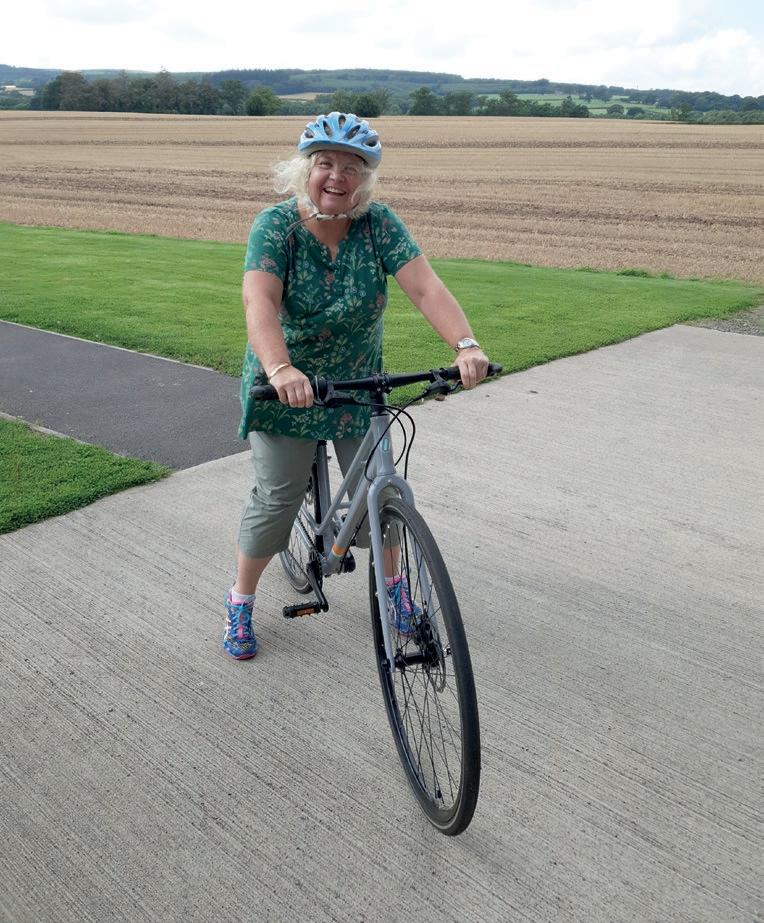 Adele Stuart
Adele Stuart
Regarding page five of the Aug/ Sep issue: it’s not ‘Croeso i Cymru’ but rather ‘Croeso i Gymru’. The C of Cymru mutates to G after i. Maybe check with a Welsh speaker in future, or just copy the road signs seen on entering Wales?
Antony GordonRegarding Sophie’s interesting article on the Traws Eryri: she was looking at the Irish Sea not the North Sea, unless she had made a navigational error and was descending from the Cheviot and looking at the Farne Islands! It made me smile, anyway.
Adam HaynesMy husband and I recently took a short trip to the Netherlands to test out our ageing bodies after missing out on cycling holidays for a number of years. I would very much recommend such a venture to those who may doubt their capacity to cycle all day and enjoy it.
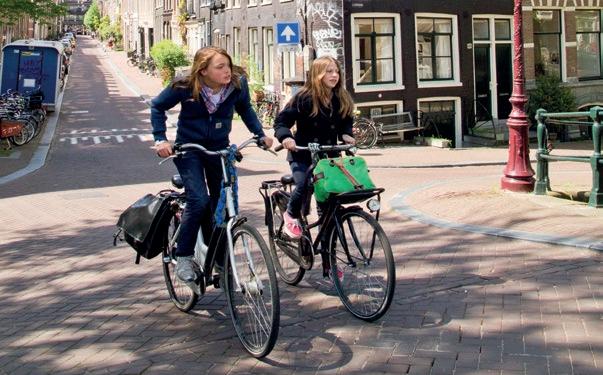
Rolling along smooth-surfaced, dedicated paths, through the dunes up the sandy North Sea coast was splendidly relaxing and almost totally traffic free. In the towns, motorised vehicles give way to cyclists at drives and junctions. In a country with more bikes than people, even cool teenagers cycle, elderly ladies chat as they pedal along, racing cyclists time trial and slick business types rush to their meetings.
The only hazards for us as tourists were the rapid streams of city riders, manoeuvring with speedy and practised ease. But we also picked up a bike parking ticket in The Hague for innocently and illicitly locking our bikes round a tree! That probably wouldn’t happen in the UK.
Clare HawkinsMany thanks for the new membership card you sent me. It’s probably the 31st that you’ve sent to me. I write because I wonder at the value of plastic membership cards of this kind? I have never presented my card anywhere, although, for reasons that defy quick explanation, I do carry it in my wallet.
Why not transition to an electronic membership card that I can install on my phone? It would cost a bit of money to develop, but would then save a considerable sum because of all the cards and postage that would no longer be needed. You needn’t make it compulsory. No doubt you have a few members who are older than me who don’t care for smartphones.
It would have other advantages, too. If you created a card around an
app with the ability to send push notifications, it could be the start of a whole new connectedness between Cycling UK and its membership.

 Tim Dawson
Tim Dawson
It’s a bit late but I just wanted to say thanks to Paul Darlington for the useful article in the June/July issue, Crash Course. I’ve been fortunate not to have been involved in many ‘accidents’, despite cycling for many years for both leisure and commuting, but the article contains a lot of great and practical advice. And as Paul advised, I grabbed my phone straightaway and put in the Cycling UK incident line number into my phone.
One further tip with regards to road defects: if the road defect has been there for some time, there is the chance it will show up on Google Street View, and the image will be date stamped. It helped me on one occasion; and to be fair to the council, they paid for the damage without any quibbling.
Neil ScarseIt was heartwarming to read about the inspiring volunteers promoting cycling. Here’s a twist on this: volunteers on bikes. The Botley Bikers deliver food, toiletries and smiles to people experiencing homelessness in Oxford. We use all kinds of bikes, from fancy e-bikes to bangers, and carry the food in backpacks, panniers and trailers. Riki Therivel, foodforcharities.com


Get immediate feedback from other members at forum.cyclinguk.org. Here’s an abridged extract from a recent thread: cyclinguk.org/ kirkpatrick-C2C
KIRKPATRICK C2C
TrevA: I believe it’s been mentioned before but there’s a new C2C route in southern Scotland, from Stranraer to Eyemouth: scotlandstartshere.com/ kirkpatrickc2c/.
I just received the first issue of your magazine since joining and enjoyed it immensely. I don’t identify as a cyclist but I do care about taking a radically long-term stance towards life – and cycling happens to support that agenda. It was only after reading the book Copenhagenize recently that I came to appreciate the potential of the cycling community beyond promoting close-fitting sports clothing.
As a Canadian living in the UK, the ways in which this country is ahead of North America in active and public transport amaze me – and it is a source of continual frustration that it never seems to take the steps needed to capitalise on its lead. I look forward to seeing more constructive inspiration in your future issues.
Andrew DunningMrsHJ: Looks promising as a nice break for a week or so, at 250 miles with a bit of travelling to get there and back. That’s where the buttnumbing CrossCountry train from Penzance to various Scottish cities comes in useful.
honesty: I was looking at this earlier today.
Eyemouth seems easy to get to (train to Berwick), but for me the easiest way to Stranraer is flight to Belfast and then catch the ferry…
Paulatic: There is no easy way to get to Stranraer for most people.
AlanInBangor: Train to Glasgow then GlasgowAyr-Stranraer or train to Carlisle and CarlisleKilmarnock-Stranraer.
Return on the East Coast
Main Line from Berwick. Main issue is getting three bikes on the trains. geomannie: We have just completed the first 100-mile stretch from Stranraer to Dumfries before heading north up to Sanquhar. Some lovely and varied scenery, quiet roads and lots of interesting wildlife.
irc: I did a coast-to-coast in this area in 2007, Stranraer to Dunbar. Keeping close to the line of the Southern Upland Way. Lovely tour. Trains either end. Over four days using two hostels and a B&B.
PM999: An alternative [overnight’s accommodation] for Castle Douglas: ernespiehouse.com. Just outside of town and very quiet. Decent rooms, good food and safe cycle storage.
Richard Fairhurst: I misread that as Ernie’s Pie House and thought that sounded like a good place to stay…
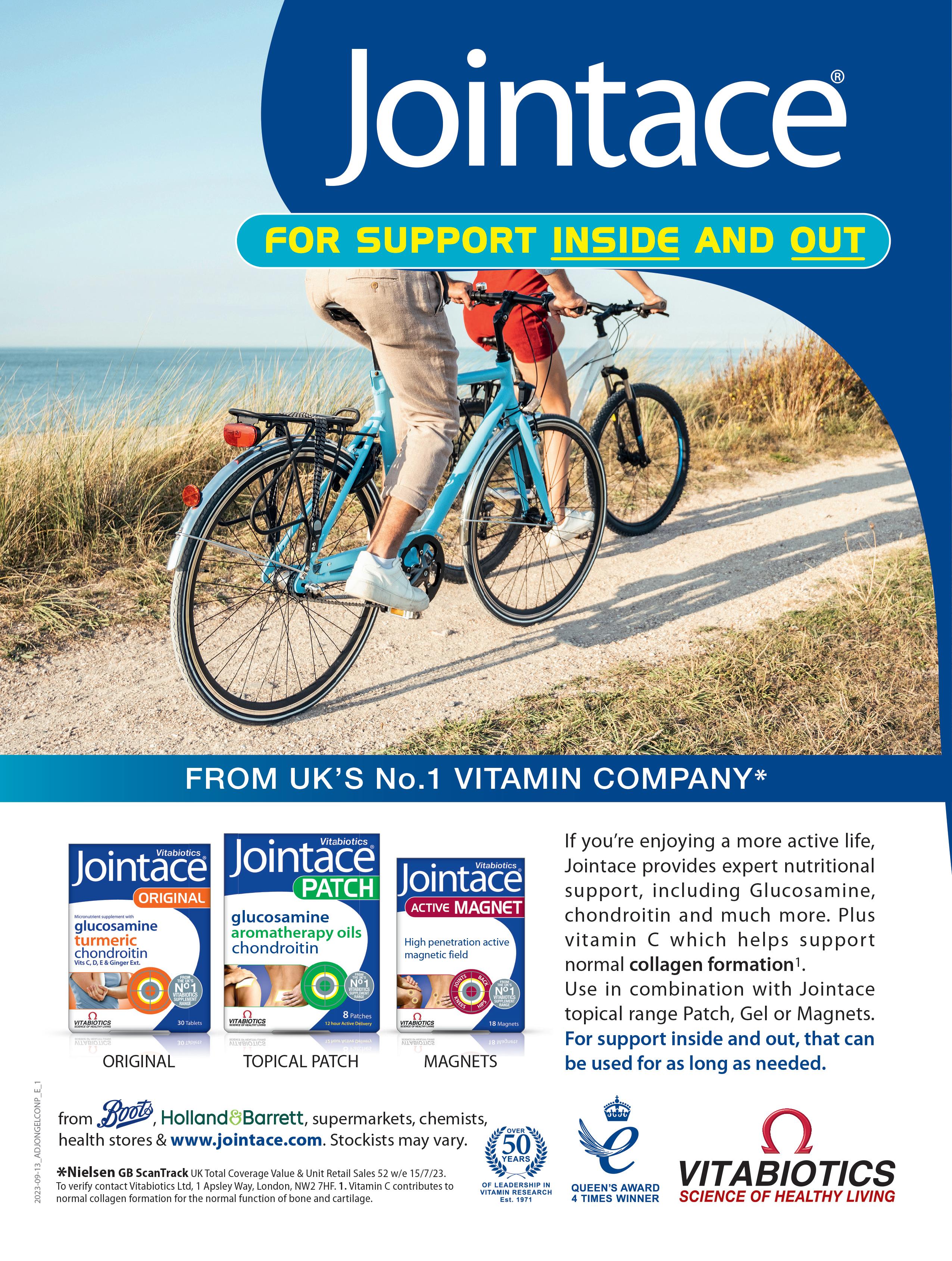
Their US holiday postponed, Harry Lyons and Celia Parker spent two weeks touring along the northern coast of France on customised Bromptons
Details
Where: France
Start/finish: Roscoff to Sourdeval

Distance: 400 miles/640km
 Photos: Harry Lyons & Celia Parker
Overlooking the Anse du Diben
Photos: Harry Lyons & Celia Parker
Overlooking the Anse du Diben
Cycling UK members whose tours have included North and South America, Europe, and Asia





Bikes folded nearby, we sat in the mid-morning sunshine at a café in Roscoff, Brittany. Behind us was a group of animated young people with cabin cases, who were smoking and drinking. It was only when one of them gave a cheery “Hello” that I realised that they were the crew from the overnight ferry we’d caught from Plymouth. Having arrived at 6.30am, we’d already explored the town centre and a local beauty spot before settling down to a beer and brunch ourselves.
My partner Celia and I were on a new adventure, aiming to cycle the small roads of the Brittany coastline from Roscoff to Saint-Malo, across Normandy to Caen, then take a train to Paris and the Eurostar home. The pandemic had disrupted our plans to cycle Route 66 from Los Angeles to Albuquerque so we’d used our holiday money to buy customised Bromptons with Rohloff hubs and disc brakes. They were certainly special but how would they cope with a two-week tour?
We felt pretty smug cycling to our local station, folding the bikes and shouldering our two pieces of luggage for a journey on the Elizabeth Line to Paddington. We were even more smug when we did the same thing to board a GWR train to Plymouth, avoiding the need to reserve one of the (maximum) four bike spaces available on its intercity trains.
Our luggage was minimal. We each had a front bag, plus a trunk bag for the rear carrier. Celia seemed to carry more in her 14-litre front bag than I managed
in my 25-litre one. But our limited luggage capacity meant no camping gear. We were taking a chance on early-season hotel availability.
Check-in at the Brittany Ferries terminal was straightforward, and we boarded with foot passengers, the bus dropping us next to a lift on the car deck. On board, the bikes were safely stored in the ship’s luggage locker.

The ferry’s dawn approach to Roscoff was lovely. As the medieval town was still asleep, we decided to explore a little. We cycled along deserted roads to the Pointe de Perharidy, a peninsula with beautiful wild beaches and great views across the bay to the distant town.
Back in Roscoff, after an early check-in at our hotel, we were ready for a beer and a sandwich. The café favoured by the Brittany Ferries crew was a good choice, facing a harbour from which small ferries (vedettes) ran boat trips to the nearby Île de Batz. It was €10 return, dogs free and bikes €16. It was worth taking our bikes with us to explore the island… and get lost, despite its small size. There’s a spectacular botanic garden on the Île de Batz – and another on the mainland, just up the road from the ferry terminal.
Before we left Roscoff we had somewhere we had to see: the Maison des Johnnies & de l’Oignon de Roscoff, a small museum telling the story of the bikeriding ‘Onion Johnnies’, with their strings of onions that they delivered to British households. It brought tears to our eyes.
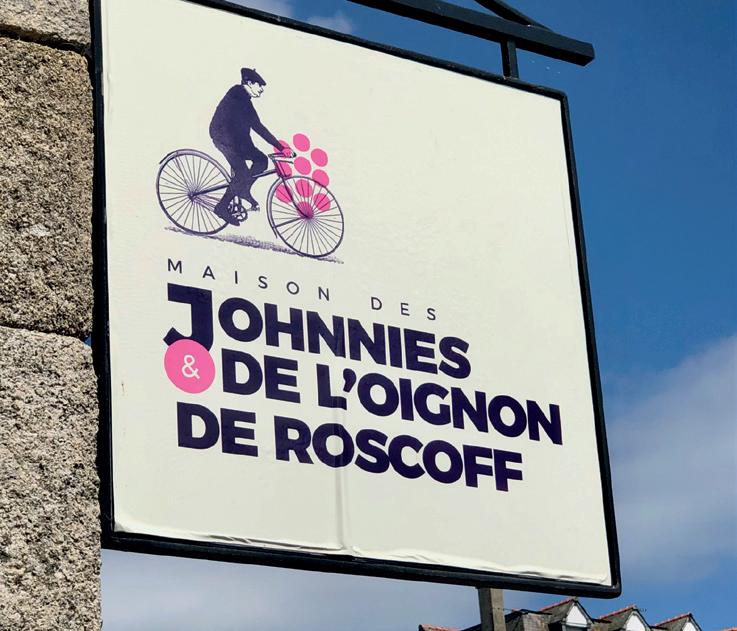
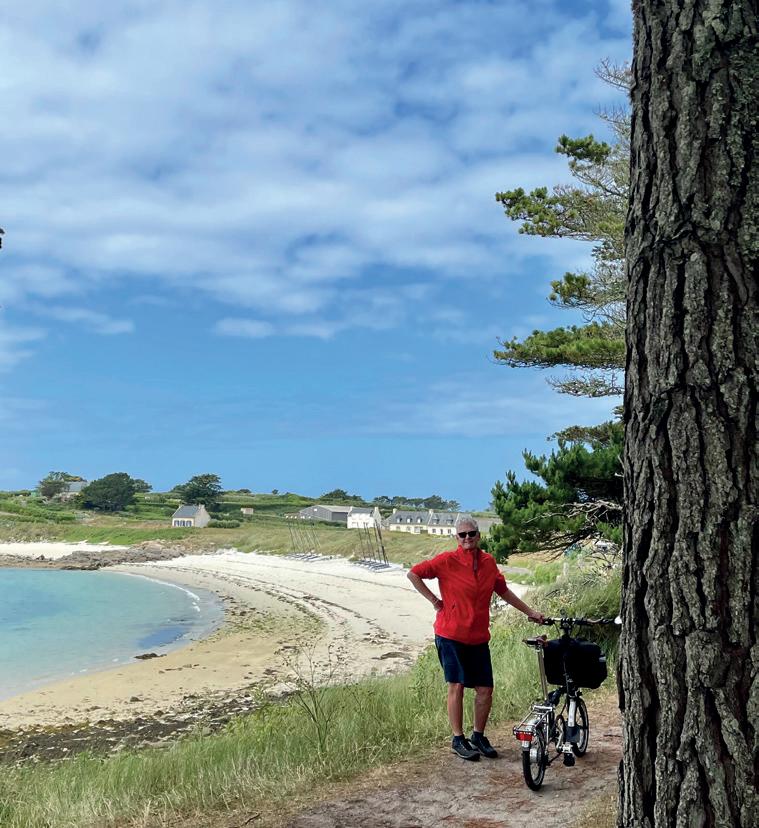
Next day we set out on small lanes for Morlaix, keeping the sea in view where possible. It was a pleasant ride past fields spiky with artichokes, and we arrived at the port in time for lunch. The approach along the river was scenic, as was Morlaix itself, located in a

We were lucky to obtain singlespeed Bromptons during the pandemic bike drought. They were delivered directly to Ben Cooper at Kinetics in Glasgow for modification, getting new forks and rear triangles to accept disc brakes, Rohloff hubs and Gates belt drives. Tyres are 50-305 Schwalbe Big Apples.
The bikes coped with some rough terrain and, complemented by Ergon Comfort handlebar grips, were comfortable on tarmac. I went for a SON hub dynamo. Celia didn’t due to the extra weight and (admittedly minimal) drag. Supply chain problems meant that we ended up with Magura hydraulic disc brakes, which I don’t like. There’s virtually no adjustment and they’re less easy to repair roadside than cable discs. kineticsonline.co.uk


deep ravine spanned by a majestic railway viaduct. Unfortunately, cars dominated the town. Fumes and parked vehicles spoiled our search for historic halftimbered houses. We were forced to take refuge in a bar.

Our hotel, like many places we visited, had bikes for hire, mainly electric assist. In the hotel, Celia, an inveterate investigator of tourist leaflets, spotted some about bicycle routes in the area. We realised that my hours poring over Google Maps had been unnecessary. We could simply take EuroVelo 4, La Vélomaritime, which followed the French coast from Roscoff to Dunkirk.
We downloaded the route to our phones but also picked up paper copies wherever we could, usually from tourist offices. We both like a paper map. The route maps showed which sections were on road and which were off road, and whether they were suitable for families or challenging for all. Also signalled were ‘dénivelé important’ (tough hills). There were quite a few of these, which for me usually invoked another warning: ‘pied à terre’ (walk it)!
It was a good reminder that, in hilly terrain, fitness isn’t optional even with an 18in bottom gear. Those hills were presumably why we encountered so many happy, smiling cyclists riding electric bikes, looking just like they do in the adverts. I often felt envious. Yet a couple of times we did come across traditional, fully-loaded, grey-bearded cycle tourists struggling up long inclines. I wanted to cheer, in awe of their
strength and determination (and envious of their camping gear).
We booked our first two hotels but for the rest of the trip we estimated where we would be two days ahead and used Google Maps to identify places to stay. Sometimes hotels were scarce. Campsites were plentiful – and French campsites are great, aren’t they? – so we missed having a tent to fall back on.
Food was rarely a problem. We did most of our cycling in the morning, and Brittany is loaded with crêperies for a bite and a beer at lunchtime. The craft beer revolution hit France later than the UK but many places now have a local brewery offering hit-and-miss IPAs. In one hotel, catering largely for walkers doing the coastal trail, the menu’s prices looked promising but turned out to be for something pre-prepared in a jar, like big baby food. Fortunately, the beers and wine were fine.


We kept on moving around the coast – Paimpol, Saint-Brieuc, Val-André – on a mixture of quiet roads, farm tracks, dedicated cycle paths and overgrown trails. At Matignon I had the only puncture of the trip, a slow one that held air until we made it to our hotel. I fixed it with the hovering help of the hotelier, a man with a set of tools and a mechanical bent who nodded his approval as I sealed the hole in the tyre with superglue. A German cyclist staying at the same hotel, doing 100 miles or more every day on a lovely




A museum told the story of the bikeriding ‘Onion Johnnies’, with their strings of onions. It brought tears to our eyesClockwise from top left: Morlaix’s lovely half-timbered houses. And its less lovely cars. Pied à terre at SaintBrieuc. Passerelle Saint-François, near Tréguier. North of Saint-Samson, after leaving Morlaix
bike he’d built himself, tipped us off that we could divert to Dinard before the Vélomaritime crossed the Rance river. There we caught a ferry to Saint-Malo, arriving by boat at another spectacular French port.


We weren’t the only cyclists. The morning arrival of the Portsmouth ferry had deposited a phalanx of British cycle tourists, who were relaxing over coffees in the sunshine, keeping an eye on their steeds stacked against the ancient city walls. I was taken by an electrified Flying Gate, which was festooned with spare tyres, wing mirrors, multiple locks, a pump lock (!), bungees, a monkey mascot and a clothes peg on the brake cable. None of your lightweight bikepacking nonsense here. Every eventuality covered – a touring cyclist after my own heart.
The météo was forecasting a storm for the following day, accurately as it turned out. Leaving Saint-Malo we wore wet weather gear for the first and only time during our trip. The rain eased pretty quickly, and by mid morning we were cycling past the Cançale oyster huts under a cloudy sky punctuated by the kites of happy windsurfers. MontSaint-Michel was a blip on the horizon.
We gave Mont-Saint-Michel a miss. Magnificent from afar, up close it’s an expensive tourist trap selling expensive tourist tat. Instead we spent Sunday afternoon in Pontorson,
which was cheap but not cheerful. The hotel had the nerve to add an extra €10 to our bill for storing the bikes overnight in an outhouse. In retrospect, the magnificent tourist trap might actually have been a better bet.
At least we had a decent meal, whereas the following day we fell foul of French Mondays. After the Sée estuary at Pontaubault, the Vélomaritime climbs steadily into the Normandy countryside on a greenway. Part of this is a small engineering miracle: the former Fougères to Vire railway, which winds its way upwards (2,700ft in two days for us) through a very hilly region without bridges or tunnels.
A scrappy breakfast at our hotel (another €10 each) left us desperate for lunch so we dropped off into Saint-Hilaire-du-Harcouët and were lucky to find a boulangerie open. They happily made us sandwiches – in wraps, the only bread they had left. In the evening at Mortain-Bocage not a single restaurant was open. Fortunately, a small épicerie provided the essential victuals: wine, cheese, crisps and a plastic sandwich. French Mondays! We left the Vélomaritime at Sourdeval, heading back across country to the coast at Caen, where we boarded a train to Paris. From Gare SaintLazare we had a thrilling ride across to Gare du Nord, where, folding the bikes again, we caught the Eurostar home. Yippee for the folders!
Getting there: We travelled by train to Plymouth and then by cross-Channel ferry to Roscoff. Our compact folders were no problem on GWR (gwr.com) but its trains carry only two or four full-size bikes, with reservations essential on intercities. Brittany Ferries (brittanyferries. com) accepted our Bromptons as luggage with no charge made. Getting home: French regional trains (TER) have designated spaces for bikes and nobody seems to check the number being carried. There’s no charge. Bicycle carriage on Eurostar, on the other hand, feels almost impossible. They will carry 20in-wheel (or smaller) folding bikes for free as long as they’re covered. But if you’re planning to travel with a full-size bike, check availability with Eurostar well in advance.
Distance: 400 miles over two weeks.
Route: EuroVelo 4 (La Vélomaritime) from Roscoff to Sourdeval.
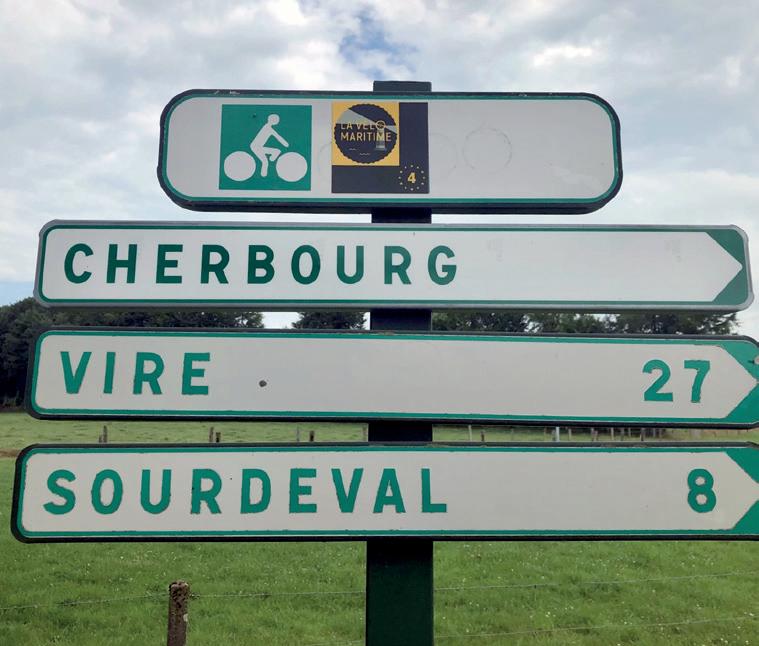

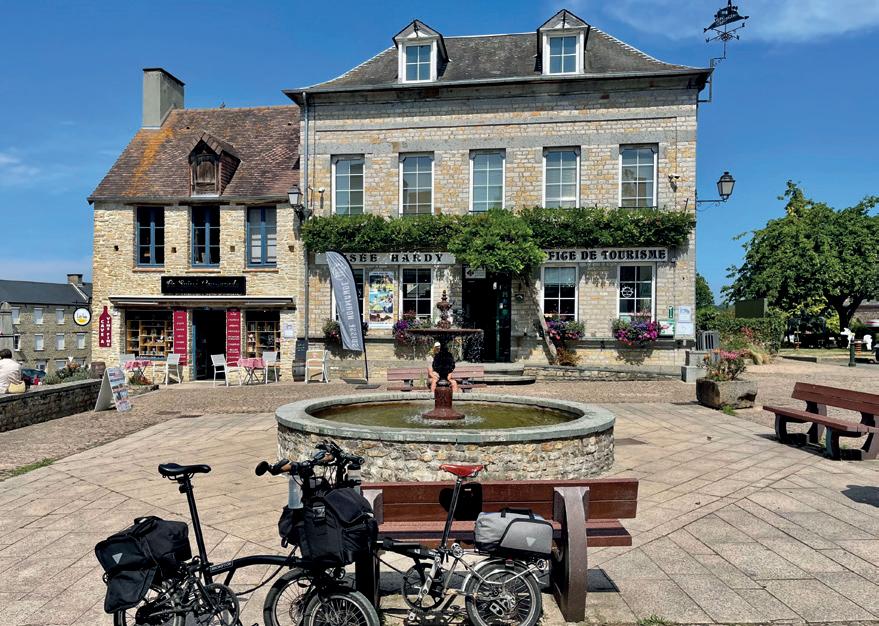
Conditions: Varied from overgrown tracks to smooth, quiet roads. Not all sections were family/trailer/ tandem/trike friendly; consult the maps. Mid-June weather was pretty much perfect. I’m glad I had: A toe strap to ‘lock’ my folded Brompton when lifting it around (a sudden unfolding at baggage check-in is embarrassing).
I wish I had: Filed down the sharp corners of my Aceoffix QR pedals. Blood on the hotel bedsheets is awkward…
More information: lavelomaritime.com


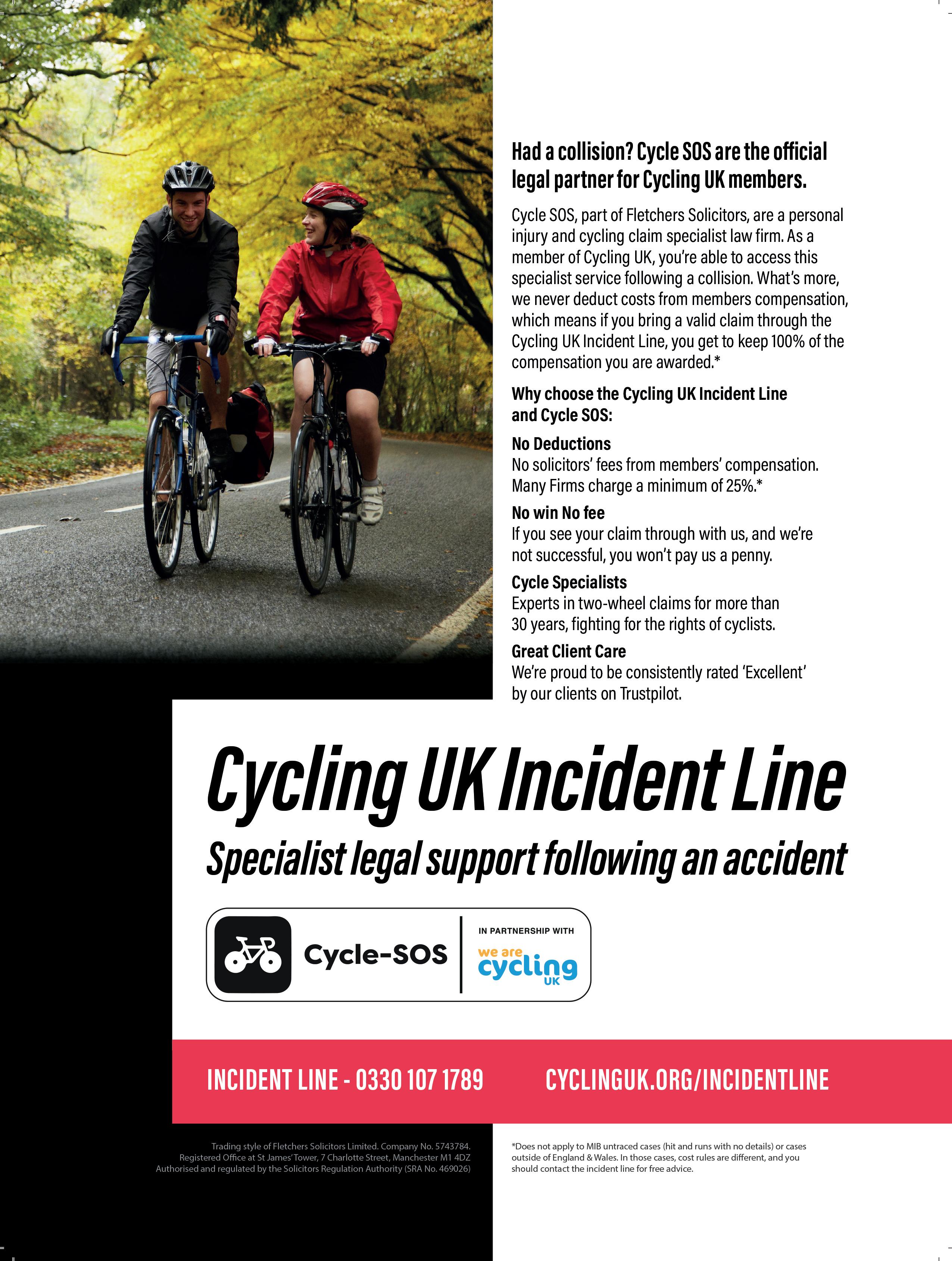






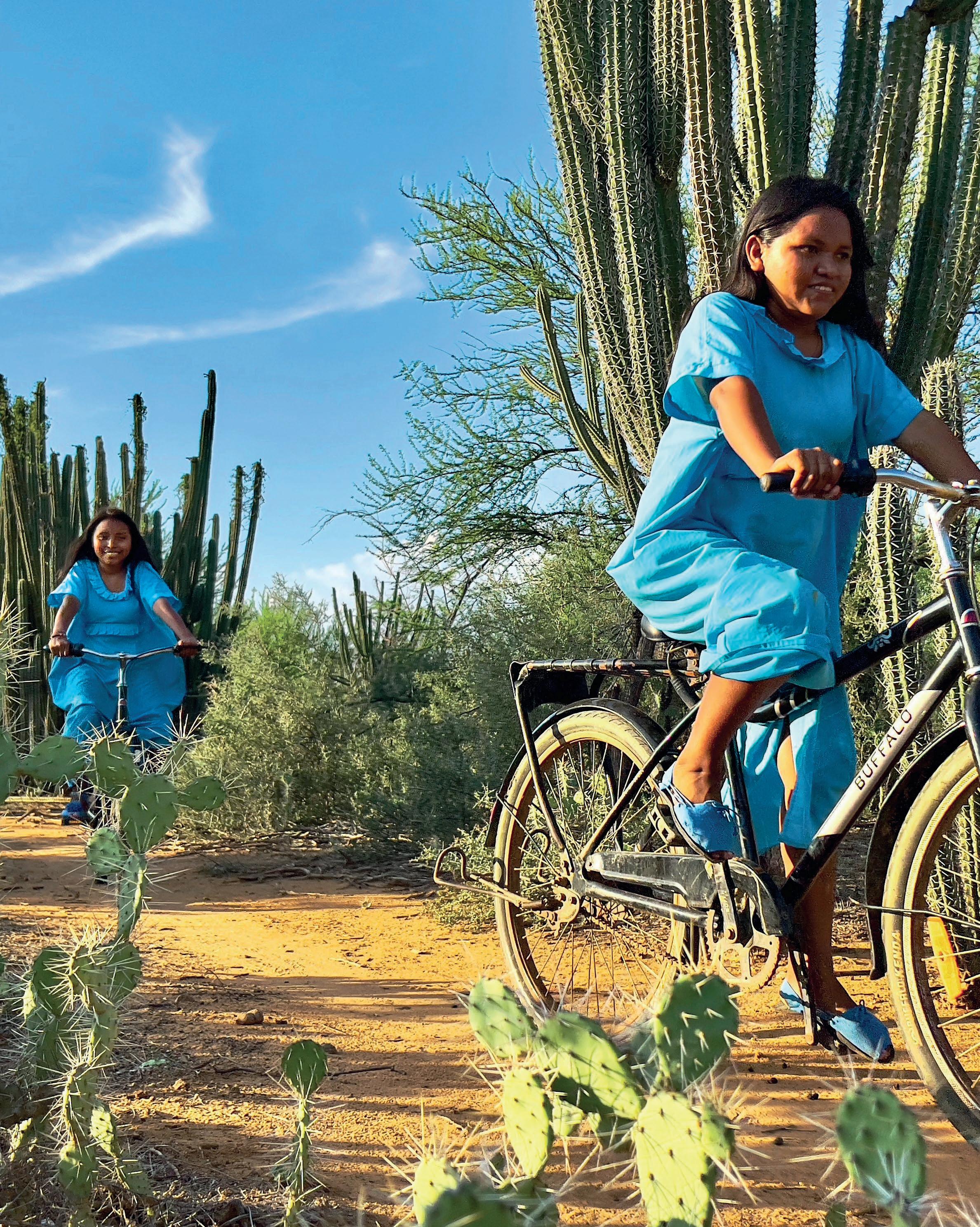
RICHARD SCRASE
Richard combines a love of cycling with a deep passion for the environment

BIKES ARE SOLD ON PRICE AND/OR PERFORMANCE. LONGEVITY? NOT SO MUCH. RICHARD SCRASE ASKS HOW, WHY AND WHEN WE SHOULD DESIGN FOR DURABILITY
Building a bicycle requires raw materials, sophisticated machinery, skilled labour and energy. A typical bike burns up between a quarter and a third of a ton of carbon as it’s made. So it’s a great shame, as well as a terrible waste, if the lovely, shiny new bike displayed for sale fails to give years of service. Lots of bikes end up breaking down sooner than they should, and many are abandoned altogether as a result.
Bike recycling projects such as Cycling UK’s Big Bike Revival can get some of these bikes back into circulation. I experienced this during the Covid period. During lockdown, I was one of a dozen or so Cyclox volunteers in Oxford repairing donated bikes for key workers. Between us we put more than 450 bikes back on the road.
It could have been many more but for a few frequent faults that were too expensive for us to repair. One of the worst of these were worn bottom brackets. Punctures, corroded cables and worn-out chains were also pretty common but these were easy to fix. Even when worn bottom brackets could be repaired, the cost in time and resources usually exceeded our budget.
So how could bikes be designed to stand up better to usage, neglect and

weather? My colleagues at Cyclox and I had some ideas, but I decided to ask some experts – bike makers who are aiming to make bikes that last.
Richard Delacour of Oxford Bike Works (oxfordbikeworks.co.uk) sets out to make bikes that can be used – and have been used – to cycle around the world. I asked him about his choice of components and how he’d arrived at them.
“A lot of it is trial and error,” he said, “learning from the feedback given by customers. Shimano is a dominant force in the gears and transmission market, and by and large, makes very reliable components. When I set up in business I took advice from seasoned cycle tourists who had tested components exhaustively.
“Nowadays, I have a reliable network of customers who let me know how they are getting on. I have a principle that if a component fails unexpectedly, I substitute it for something else straight away, so that I don’t end up knowingly fitting a component that has recently failed to another bike.
“Steel frames are much more resistant to fatigue than aluminium and carbon, and should last 20-30 years if looked after. Steel also has a certain springiness and the ability to absorb shocks, whereas other frame materials are stiffer and so
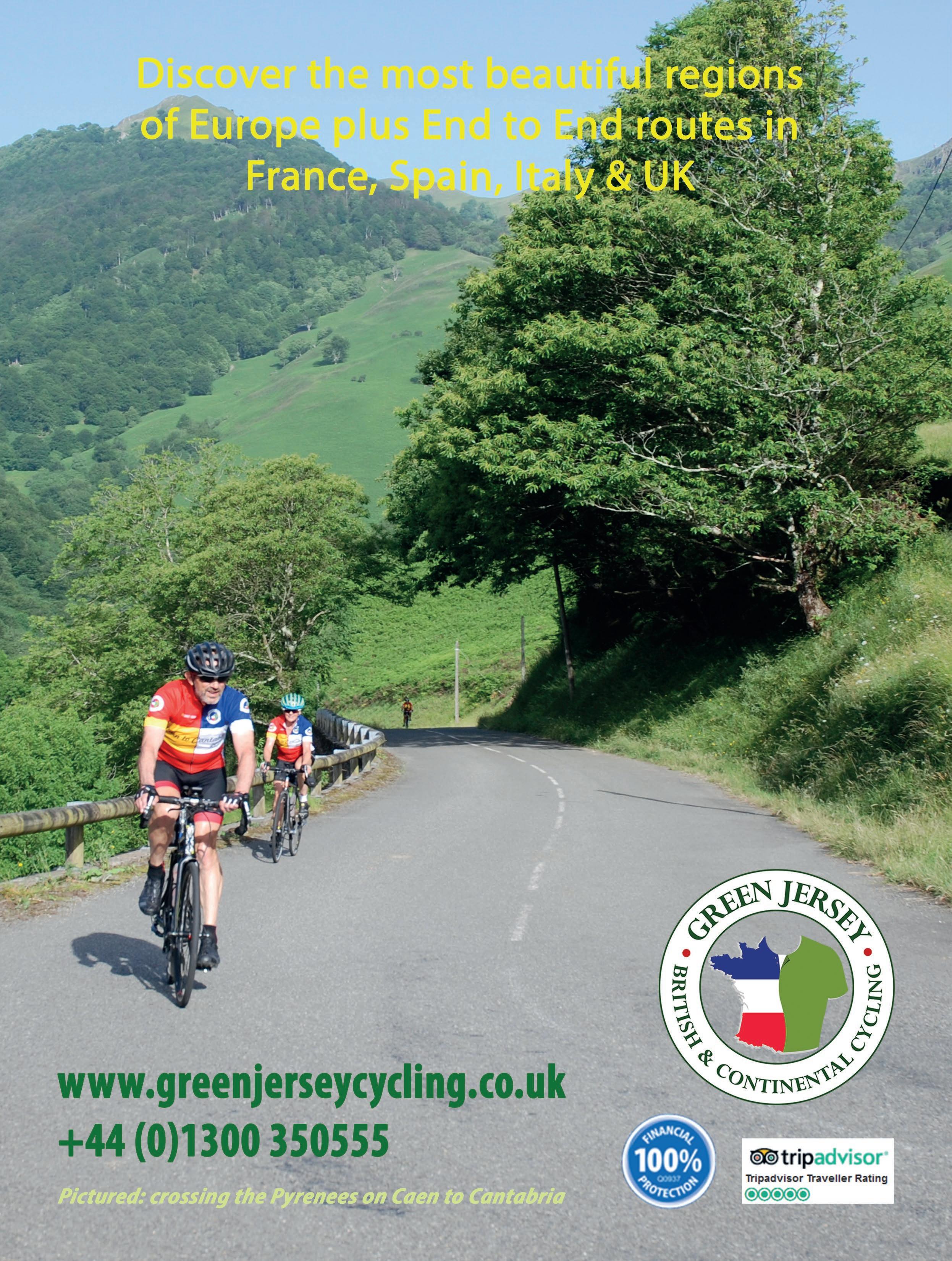
riders are more likely to feel ‘road buzz’.”
Components wear at different rates, he said. “Chains and brake pads are the key items that wear out soonest. Shimano hubs last well. Cheap pedals often need replacing after a few thousand miles. Tyres can last a very long time – I had a customer cycle 14,000 miles from Singapore back to the UK on one set of Schwalbe Marathon Plus Tour tyres without any punctures. To date I have built 600 wheels and had only one spoke snap (that I know of).”
I asked him what he’d specify for a ‘forever bike’, capable of being ridden for thousands and thousands of miles with little or no maintenance. “My Expedition bike,” he said, “with a Rohloff hub, Magura rim brakes and a chain tensioner (so that I never had to re-tension the chain). A few pairs of brake blocks and some chain oil would be all that I needed.”
The next bike could hardly be more different. The Buffalo Bicycle (you can read more about it at worldbicyclerelief. org) is designed to serve the needs of
people who travel long distances over rugged terrain with heavy cargo. It’s a very strong bicycle – the rack alone can take 100kg – built to withstand harsh rural conditions at a low cost. It’s designed for local maintenance and to use locally available spare parts. It’s made of steel, has a back-pedal coaster brake, a singlespeed gear and a stand that would not look out of place on a motorbike.
“Steel frames still provide the most value in terms of strength, cost and longevity,” World Bicycle Relief’s Lena Kleine-Kalmer told me. “A good steel frame will more or less last indefinitely in that it has a very good fatigue resistance and can be easily welded should it ever need a repair or modification. Steel welding capability is relatively common in the parts of the world where we operate, whereas aluminum welding is not. Threaded interfaces, such as the bottom bracket shell, are much easier to damage on an aluminum frame than a steel frame. As such, steel is a better choice for bikes with a very long life that will be serviced many times.”
Hub gears are usually thought of as long lasting and reliable but the Buffalo is a singlespeed. “No commercially available gear hub lasts very long in our markets,” said Kleine-Kalmer. “We have experimented with hub gears but while they provide good function, at least initially, they are very difficult to service and most of them rely on cables for shifting and require adjustments to maintain functionality. Internal
Some of your suggestions from the Cycling UK Forum. You can read the full thread here: cyclinguk.org/bikesto-last
● BARROWMAN: Oil-bath chaincase/shaft drive/Gates belt drive. Fixed wheel. Solid tyres.
● RAREPOSTER: For me an absolute minimal maintenance bike would be a flat-bar hybrid bike with rigid forks, a beltdrive hub gear and hydraulic disc brakes with 700C wheels (for ease of spares).
● CARLTON GREEN: Chains wear and so do sprockets. Part of that is due to muck picked up from the road so fitting mudflaps seems worthwhile.

● RE_CYCLER: Singlespeed, hub brakes, belt drive, mudguards, yearly service.
● SLOWSTER: … e-bikes increasingly look like being a game changer in this regard. The hard service conditions that e-bike parts are often subject to are forcing manufacturers to design stronger – and consequently longer lasting – parts for them.
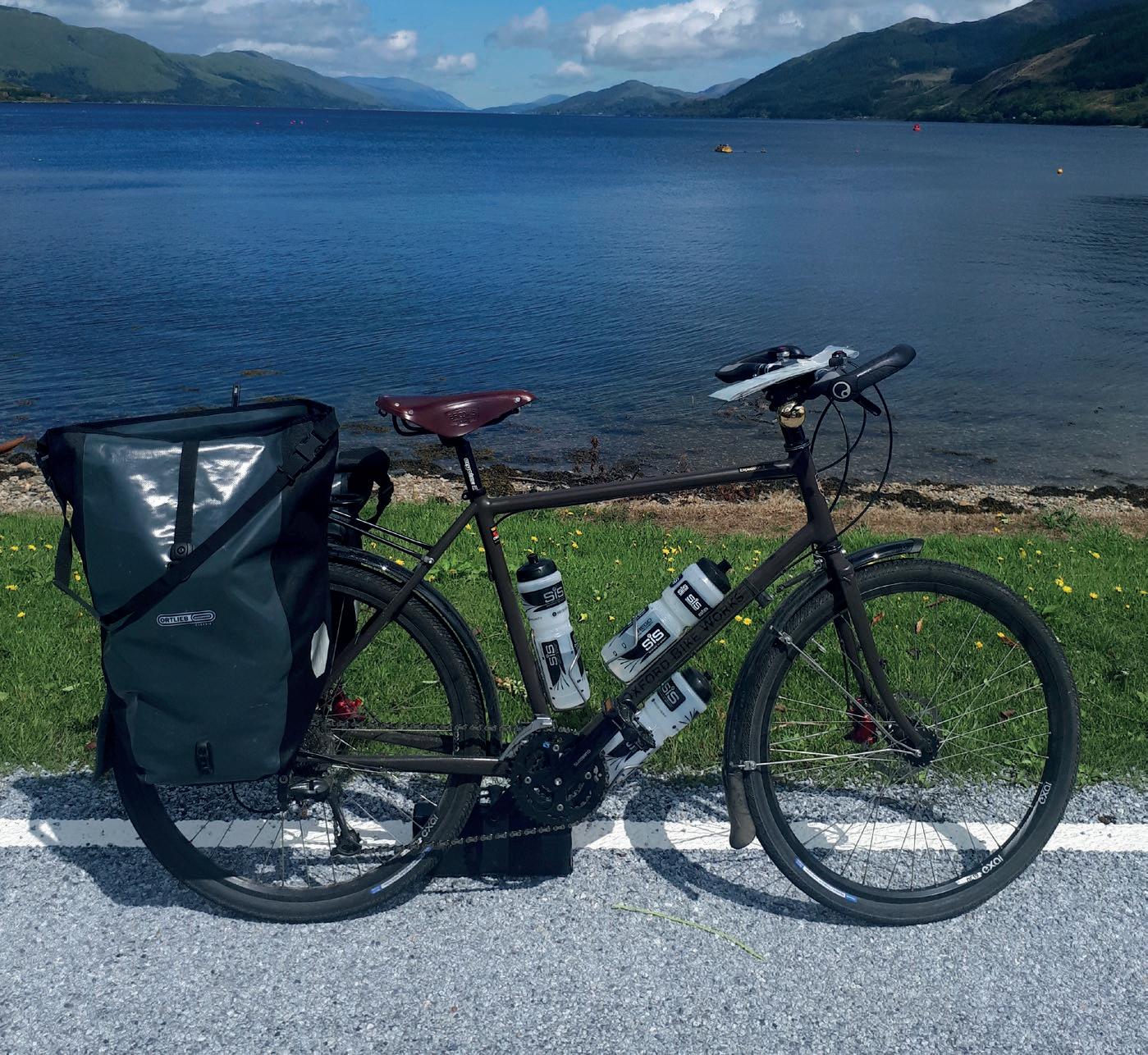
● RAREPOSTER: Shimano
Linkglide uses much heavierduty cassettes, originally developed for the extra torque of e-bikes but actually super durable and slick on normal bikes too, reckoned to be easily double the life of current cassettes.
● PWA: I rate STI controls as some of the least durable or reliable parts of a bike. I haven’t used them on my bikes for the last 15 years or more, much preferring the better longevity and smoother cable run of Shimano bar-end levers.
● STRADAGEEK: I’ve just dismantled a shed-find, a 1954 SA 3-speed used as a daily commuter for 20+ years. I have never seen an SA rear cog so worn, and the internals were dry of oil and grease. Despite this the hub functions perfectly – with pitted cones and a broken pawl spring. That’s what I call ‘built to last’!
I HAD A CUSTOMER CYCLE 14,000 MILES FROM SINGAPORE TO THE UK ON ONE SET OF SCHWALBE MARATHON PLUSESOxford Bike Works tourer Left: Oxford Bike Works

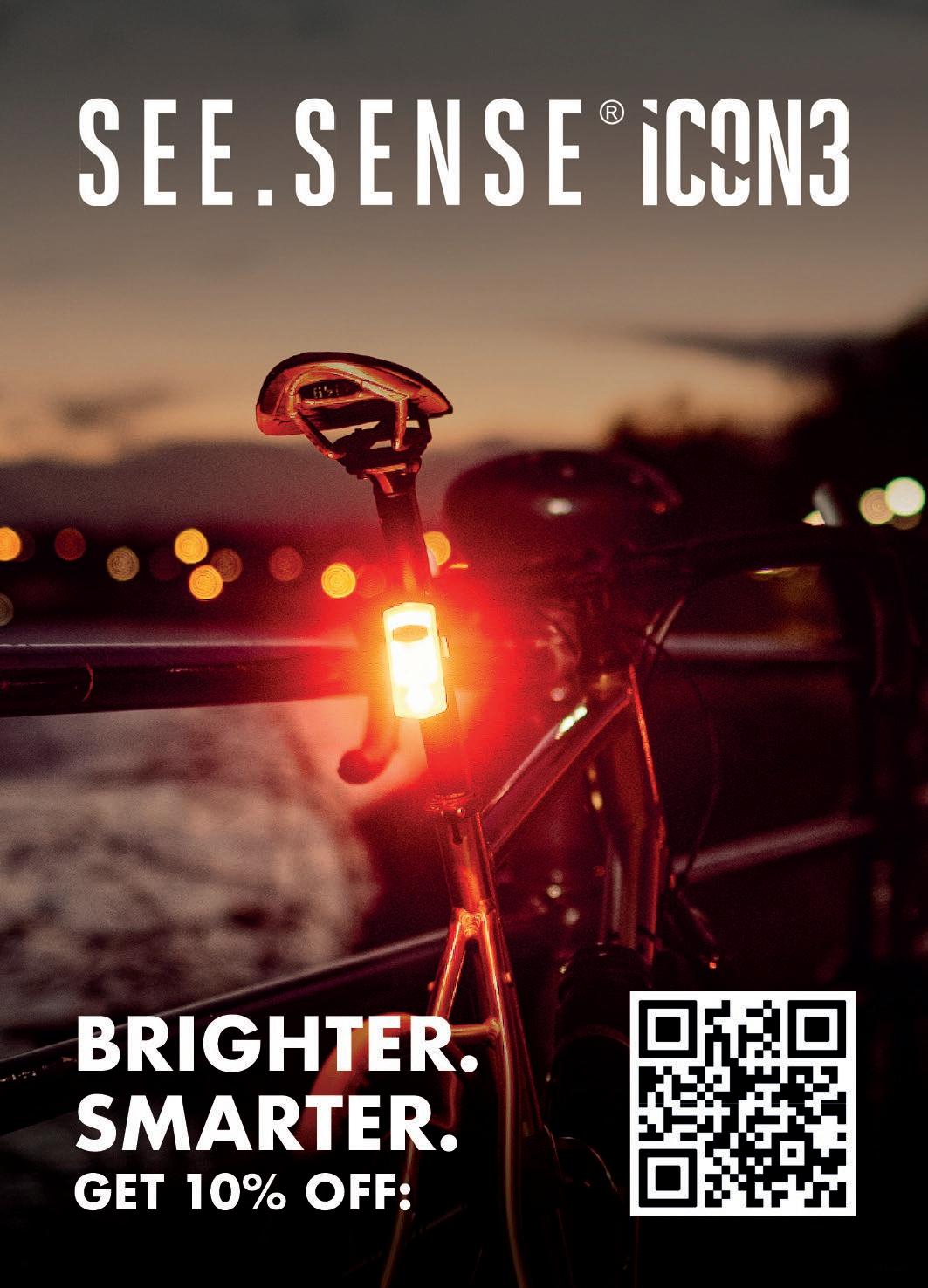

gear hubs (IGH) need higher precision manufacturing processes, cost more and may not be robust and durable for heavyduty usage.

“Many of our riders are using their bikes all day, every day for many years, often carrying very heavy loads. What generally doesn’t need attention are the frames, forks and carriers. The primary source of failure is with rotational components under load: hubs, drivetrain and bottom brackets. Basically, anything with a bearing. The Buffalo uses a mixture of sealed bearings (bottom bracket) and serviceable bearings in the hubs.
“Sealed bearings can be a doubleedged sword in that unless they are perfect seals (which they often aren’t) they can often retain water and contamination that inevitably works its way in over time. We have found that in many cases a shielded bearing that can keep out most of the contamination but allows water to drain out works well. In some cases, we have upgraded the bearings, either in quantity of balls used or in the hardness of the bearing races.”
As well as providing bikes, World Bicycle Relief works to improve the infrastructure. They train mechanics and, where the available spare parts are inadequate, they seek to improve distribution and access through their network of trained mechanics and a growing network of local shops.
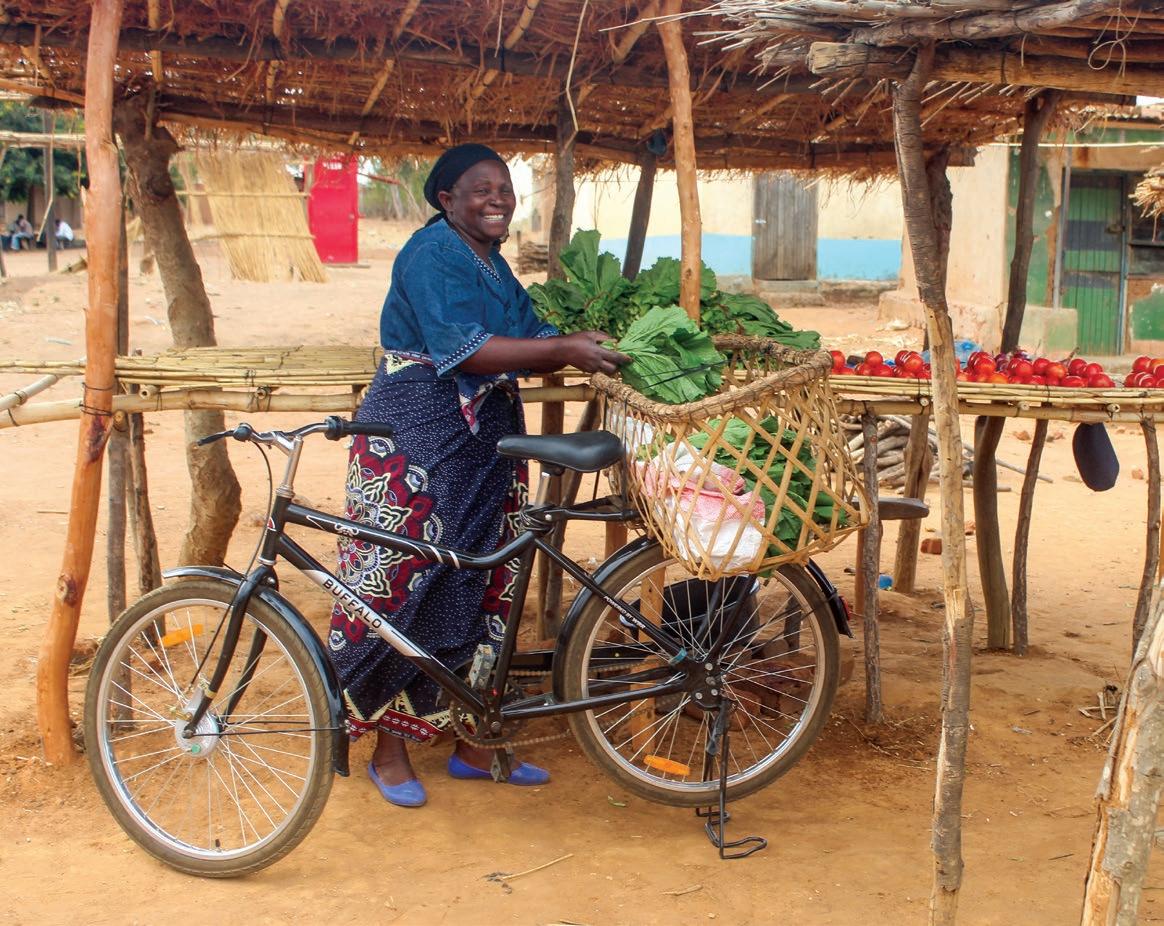




It is perhaps too much to ask for a bicycle to last forever, but it does seem possible for bikes to be designed with
repair and refurbishment in mind, so that bicycles can last for decades and their use can be far more sustainable than it is currently.
Four years ago Islabikes had just this possibility in mind when it set out on its Imagine Project. The project’s plan is to make a bicycle that can be manufactured in the UK, ridden to school and back for 50 years by as many children as possible and, at the end of the bike’s life, separated into usable materials. You can read more on the Cycling UK website: cyclinguk.org/article/islabikesimagine-project-childrens-bikes-builtlast
Islabikes’ MD, Tim Goodall, told me that even the company’s ‘ordinary’ bikes were enjoying a long use-life. “When 15-plus years is considered long lasting, our bikes are long lasting,” he said. “I put it that way because 15 years is and was considered long lasting for children’s bikes. We’re in our 17th year now and many of our first bikes are still going strong, and many will likely be around in another 17 years if they are maintained. However, we still look for ways to make the bikes more durable without compromising performance, because 15 years is still nano seconds when we’re

Britain has dozens of bike recycling centres. If you are in the North-East you could try Recyke y’bike. They have shops in Byker and Chesterle-Street, as well as selling online. In Oxford the Broken Spoke Bike Co-op can help you fix your own bike and also sells recycled bikes. To find a bike recycling centre in your area, whether you want to buy a bike or donate one, visit cyclinguk.org/

In addition to locating Big Bike Revival partners across England, the map shows bike recycling centres in Scotland, Wales and Northern Ireland. It’s worth contacting any recycling centre before you visit, either to check what they’ve got in stock if you’re planning to buy or to make sure they want your bike if you’re donating one. Contact details are on the website.
THE BUFFALO IS A SINGLESPEED. ‘NO COMMERCIALLY AVAILABLE GEAR HUB LASTS LONG IN OUR MARKETS’BBR brings bikes back into use Buffalo bikes being used for fetching water, visiting a farmers’ market and as a taxi. World Bicycle Relief is a charity that gives these durable bikes to people in low-income regions. It costs £120 to donate a bike. Find out more: worldbicyclerelief.org Left: World Bicycle Relief
considering the longevity of our planet.”
Unlike the previous examples, Islabikes are usually made of aluminium. “All our frames are made from aluminium, and our forks are made of aluminium, chromoly or carbon fibre. The main reason for choosing aluminium is its light weight, although it’s also more resistant to corrosion than comparably priced steels. The weight increase of the bike would be significant if frames were made of steel, especially for children. We’ve avoided carbon in any volume (a few of our forks are made of it) in part because of the difficulties in recycling it, and there are still many improvements we can make to aluminium frames to make them lighter and improve the ride characteristics.”
Because Islabikes are designed for children, many components are nonstandard. “We design many of our components from the ground up, so what might appear to be just another bicycle pedal on a child’s bike has in fact been the result of a year-long development process. To make the design decisions – dimensions, materials, features – we combine available data on body sizing with our own observations and expertise.
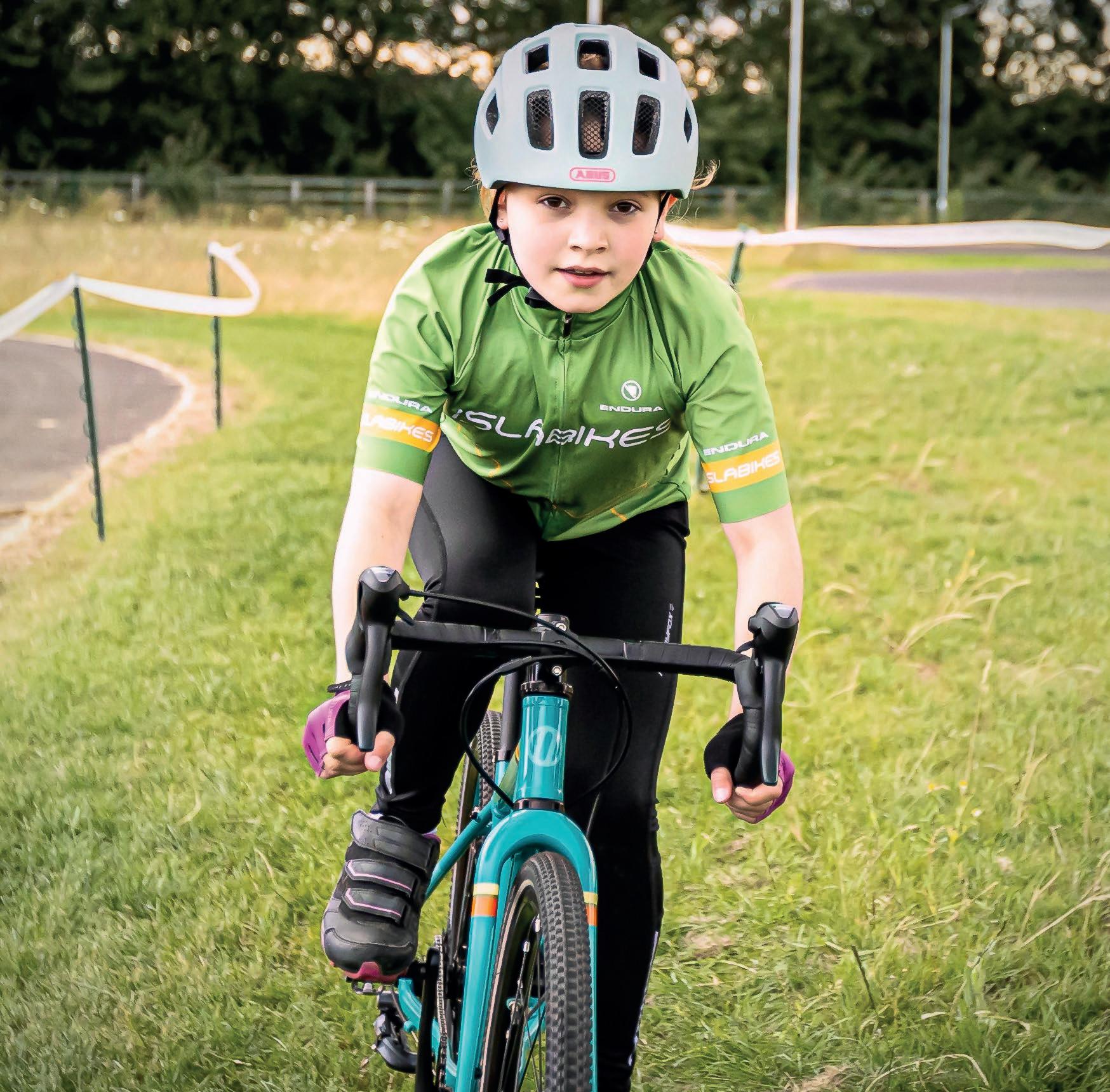
“All components not designed by us are chosen with performance and longevity in mind, not what is fashionable. For example, fewer gears often means reduced weight and longer life at similar price points. We also fit sealed loose ball bearing hubs where possible, as with regular serving these will easily last the life of the bike.”
But even with bespoke design and choosing for longevity, parts do wear out. “Handlebar grips are among the first parts to wear, or chains. In the case of chains, they’ve usually not worn out,
they’ve just gone rusty because they are not being oiled.”
When I asked him about building a ‘forever bike’, Goodall stressed the importance of serviceability and the availability of spares. “Keeping weight down would still be a high priority… It would be quite easy to create a bike that can go 10,000-20,000km between services but it would not be very efficient or fun to ride!
“Adding additional rubber to tyres to get more miles out of them before they needed changing, for example, is possible but then the increased weight will create a bike that is slow to accelerate and climb hills on. Increasing chain width and sprocket thickness will extend the life of the drivetrain but increases weight and reduces the efficiency.
“It’s the same effect as how a car will go 10,000-20,000km between service but a lorry will do 80,000km. The lorry is

expensive, inefficient and not very fun to drive… but you can rack up a lot of miles without having it serviced!”
So where does all this leave us? If we want bikes that are a joy to ride, that are light and that have variable gears, we have to accept the need for maintenance. But bikes can be made to be robust and long lasting if good-quality materials are used in the critical points such as the bottom bracket.
While manufacturers might not build ‘ordinary’ bikes as well as we would like, the higher demands that e-bikes make of transmission systems and brakes are already resulting in manufacturers being forced to equip these bikes with tougher components. Some of these parts can be used on a conventional bike when it’s time to replace gears and chains – those parts we expect to wear out – extending the time between services.
IT WOULD BE QUITE EASY TO CREATE A BIKE THAT CAN GO 10,000-20,000KM BETWEEN SERVICES BUT IT WOULD NOT BE VERY EFFICIENT OR FUN TO RIDE




Coast-to-coasts don’t come easier. The 60-ish miles of canal towpath from Bowling, west of Glasgow, to the centre of Edinburgh is all flat, mostly tarmac, car free and well signed – Britain’s longest such bike route. (Sustrans says that this route, NCN 754, is 99.3% traffic free and 68.9% asphalt.) It can be ridden either way but west-to-east follows the prevailing wind. There are a few short stony bits through tunnels and across lofty viaducts, but essentially it’s a smooth, stress-free, family-friendly delight.
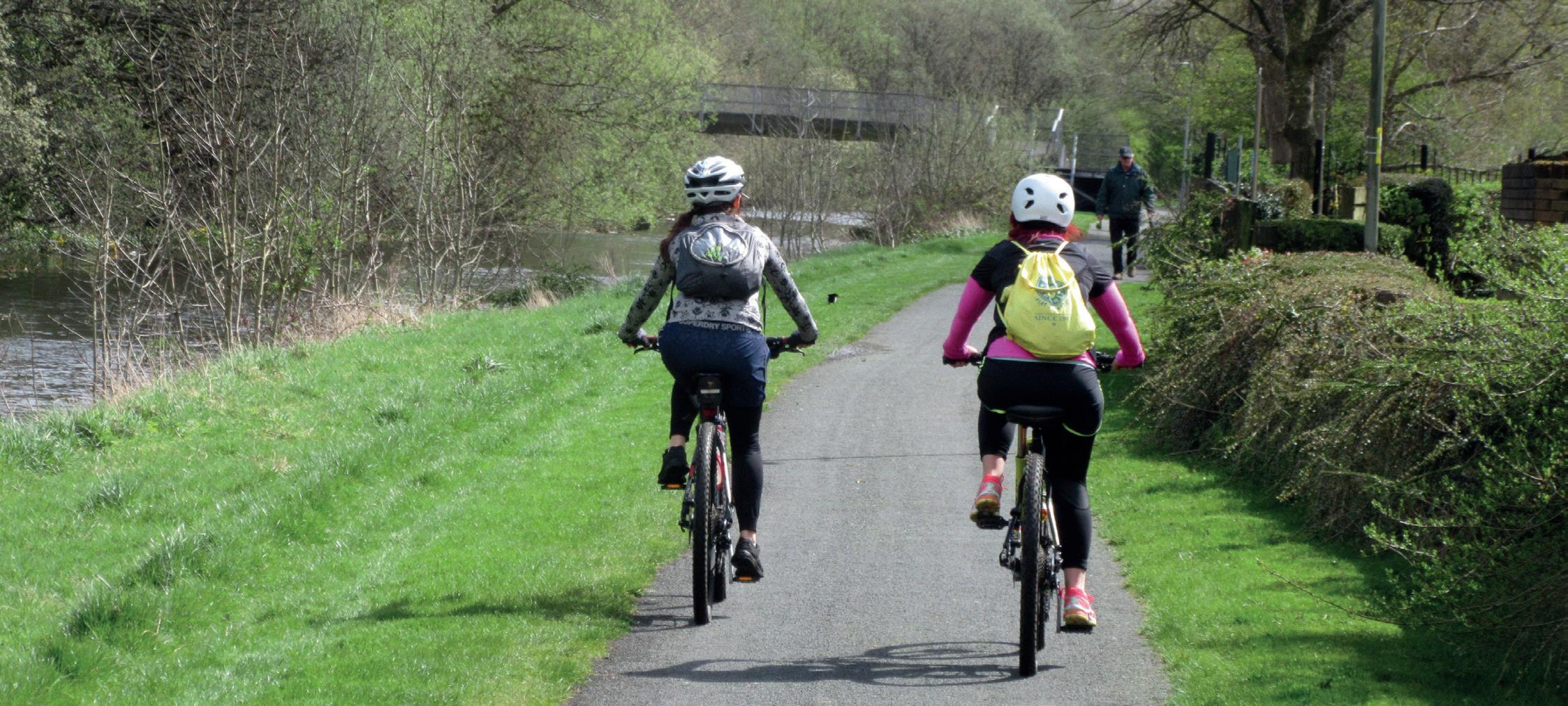
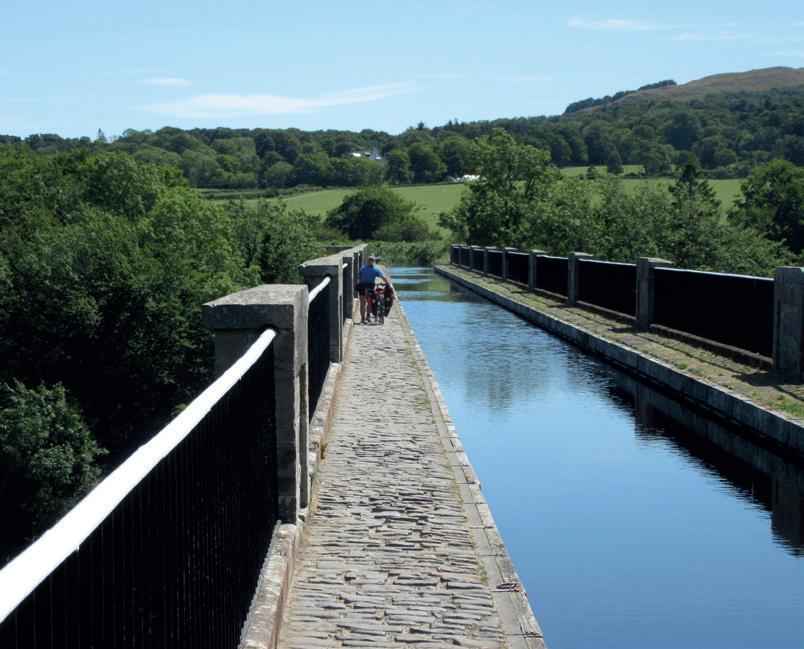

Train access is great, thanks to mainline stations in Glasgow and Edinburgh connecting you to the rest of Britain. Regular bike-friendly Scotrail services run parallel to the route, giving lots of bailout opportunities if the weather turns.
You can blast the route in a day or do it at leisure in two. Falkirk is halfway, with plenty of accommodation choice, and you ride right past a modern wonder of the canal network: the Falkirk Wheel’s unique canal-liftcarousel hybrid. (There’s also the Antonine Wall, a smaller version of Hadrian’s.) A short side trip away is the Kelpies’ pair of horse head sculptures, and a glimpse of the sea.
Scenery isn’t mountainous but it’s all easy on the eye and camera – from the open calm east of Glasgow, through Falkirk’s engineering and sculptures, past elegant, waterside Linlithgow, to the sense of urban climax as you burrow into Edinburgh’s handsome centre. Cafés and shops are never far away, and you start and finish right in the middle of two very visitable, very different cities.

The canal towpath route from Glasgow to Edinburgh is Britain’s longest car-free C2C. Rob Ainsley rode itTop to bottom: East of Bowling. The Falkirk Wheel. Irn-Bru inventor Robert Barr, (in top hat) in Falkirk. Viaduct beyond Ratho More C2Cs Rob wrote an article for Cycle on UK coastto-coasts a while ago: cyclinguk.org/ cycle/coast-coastalternatives
Weekend ride
• Start/finish: start Bowling (NS 451 735), finish Edinburgh (NT 246 728) • Maps: OS Landranger 63, 64, 65, 66 • Ride length: 101km (63 miles) • Climbing: essentially none – it’s flat


• Bike type: any • Ride level: any • GPX file: cyclinguk.org/weekender-scotland-on-flat
1Bowli ng
From Bowling Station, half an hour’s train journey from Glasgow Queen St, follow signs along the brief rail path to join the canal. There’s a bike shop (no hire) and café. A smooth gravel path follows the canal past a giant bike sculpture in Clydebank and then painlessly into, round, and out of Glasgow.
4
2 Lambhill
At the edge of Glasgow, stop off at Lambhill Stables, a friendly – and award-winning – community café. From here to Falkirk it’s a long, open stretch of canalside trundling, with low, gentle hills either side. In the town you brush past en route are several signed opportunities for cafés, snacks and so on.
LINLITHGOW
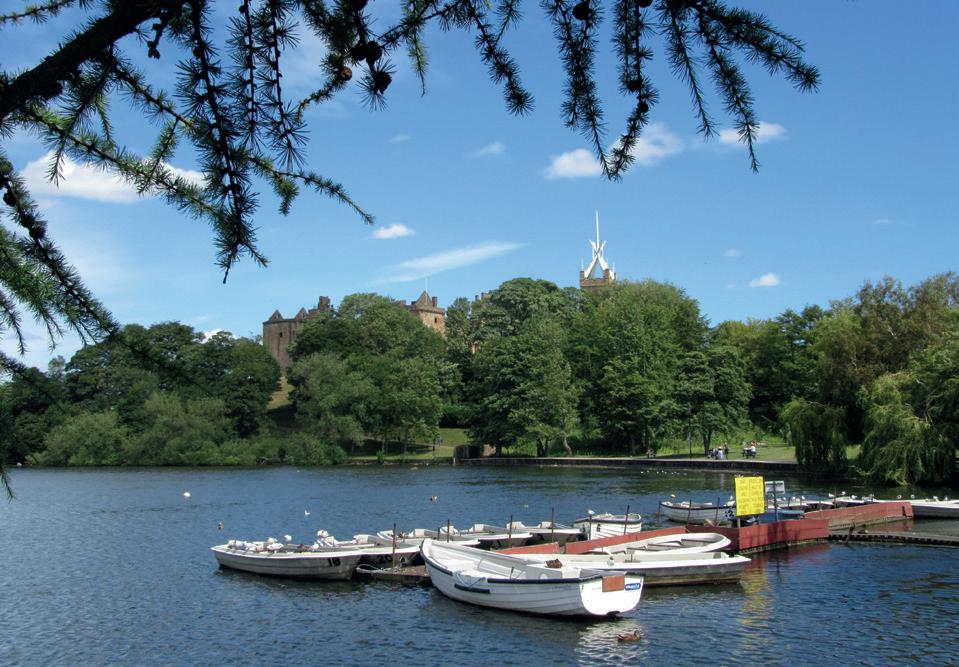
Stop off at this charming lochside town, whose nowroofless but largely complete medieval palace was the birthplace of Mary, Queen of Scots. Plenty more refreshment opportunities here (and another train station if you need it).
3FALKIRK
You’ll see the swanlike form of the Falkirk Wheel appear in the canal basin to your right. Carry straight on and you soon get to the Kelpies (pictured above). Or turn right past the Wheel to leave the Forth & Clyde Canal to step up to the Union Canal, which takes you Edinburgh. On your way out are some funspooky tunnels, as well as a train station.
5 Broxburn
The canal zigzags slowly through a post-industrial landscape of spoil heaps and more towns. A few miles of backwater-feeling riding take you through Ratho and along some giddy, narrowpathed, cobbled viaducts – best walked!
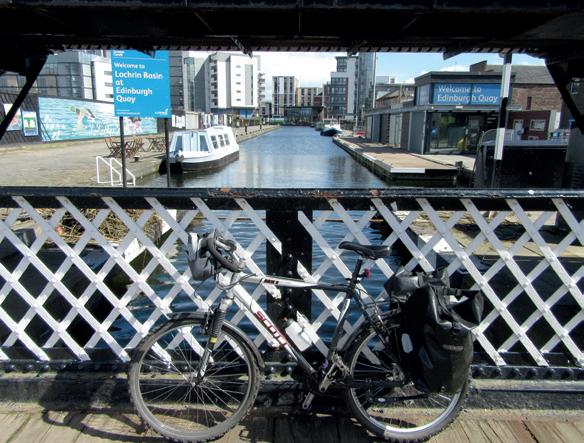
6
EDINBURGH
The towpath goes steadily from outskirts to suburbs to centre, past pleasant parks near the final basin. Maybe savour a picnic? After the end basin, follow signs a mile or two across another park to the Old Town and Waverley Station. Or you can round off the ride in stunning style by cycling down Edinburgh’s Royal Mile, past Holyrood, then clockwise round Arthur’s Seat.
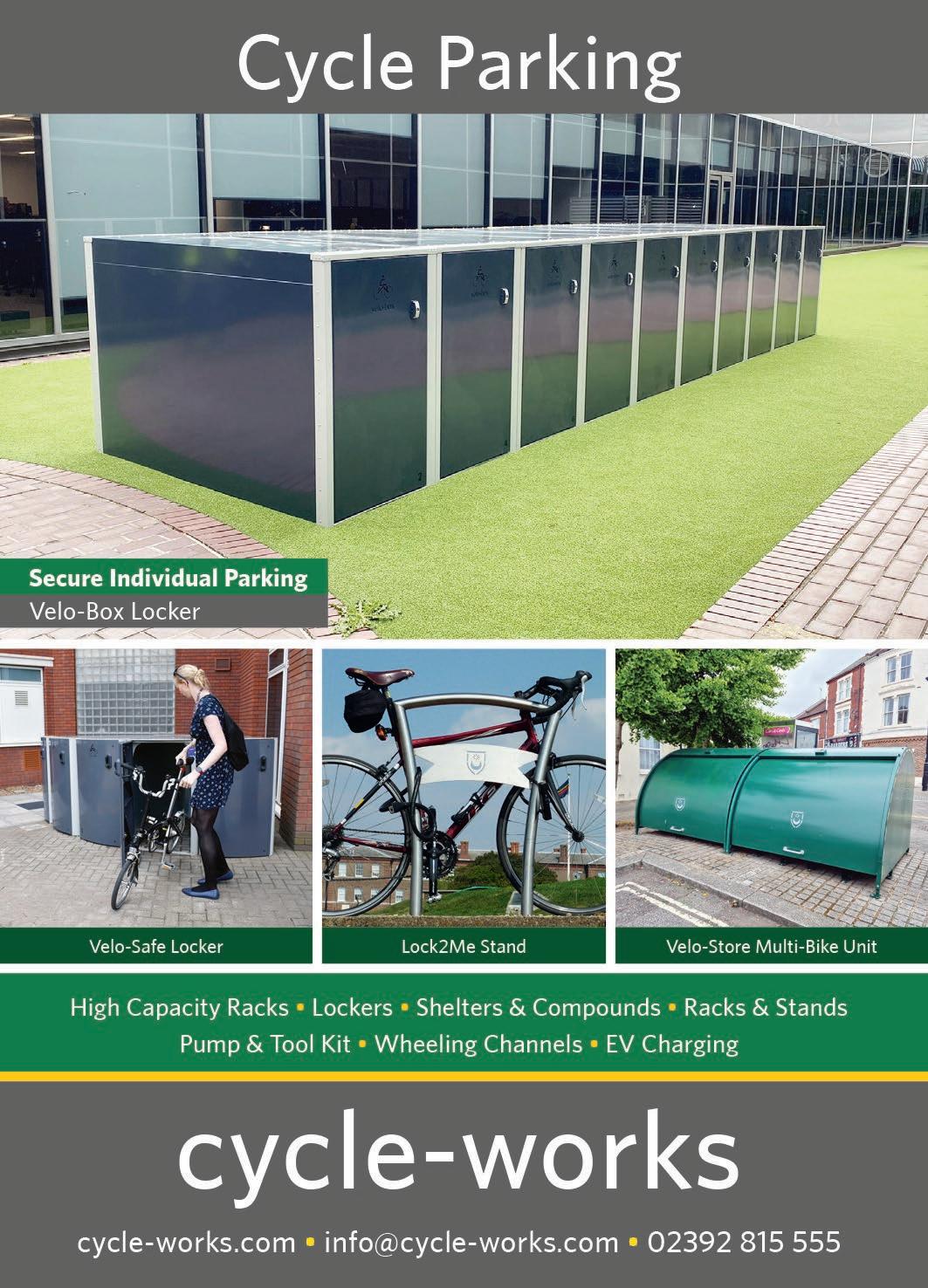
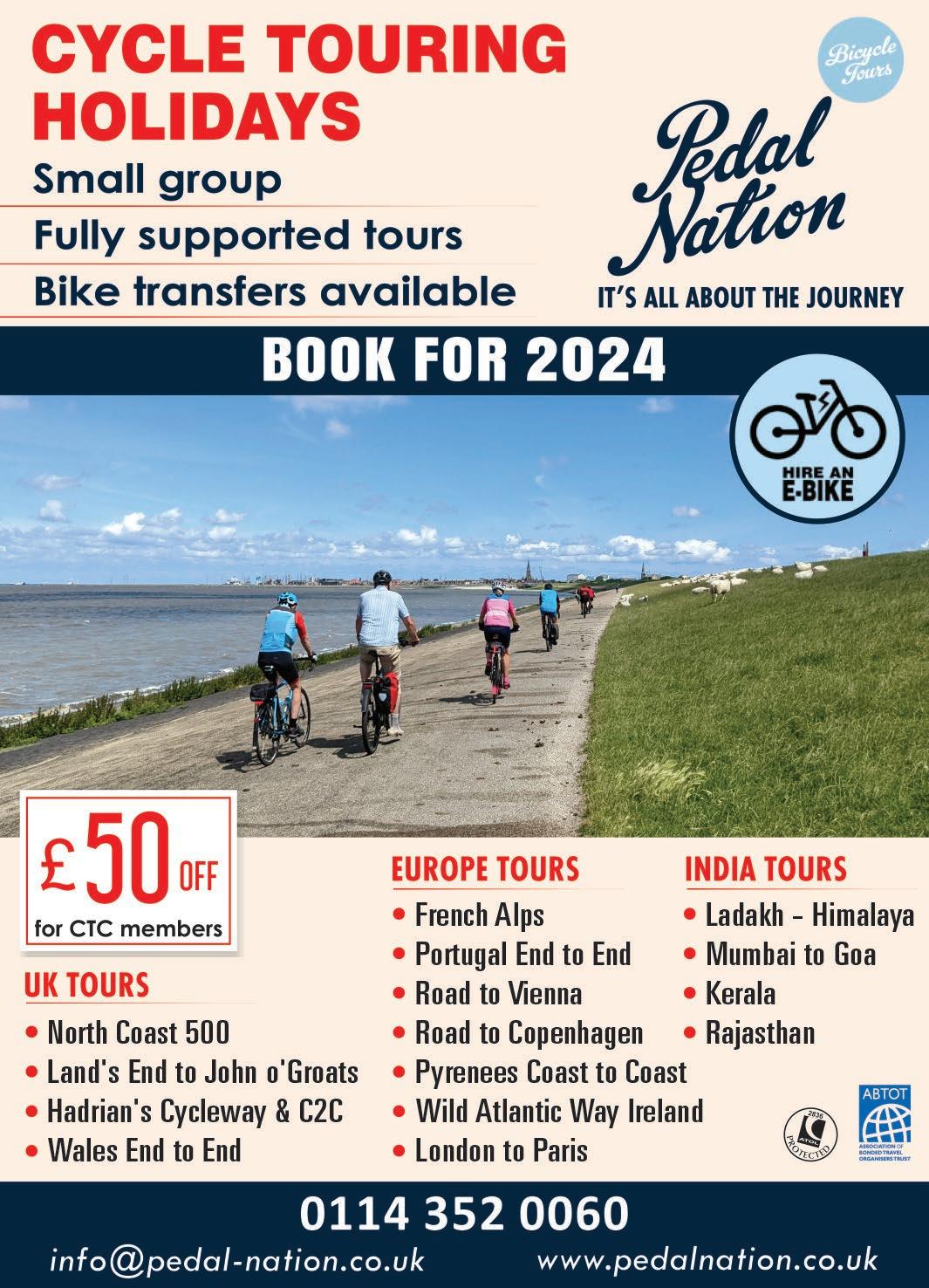
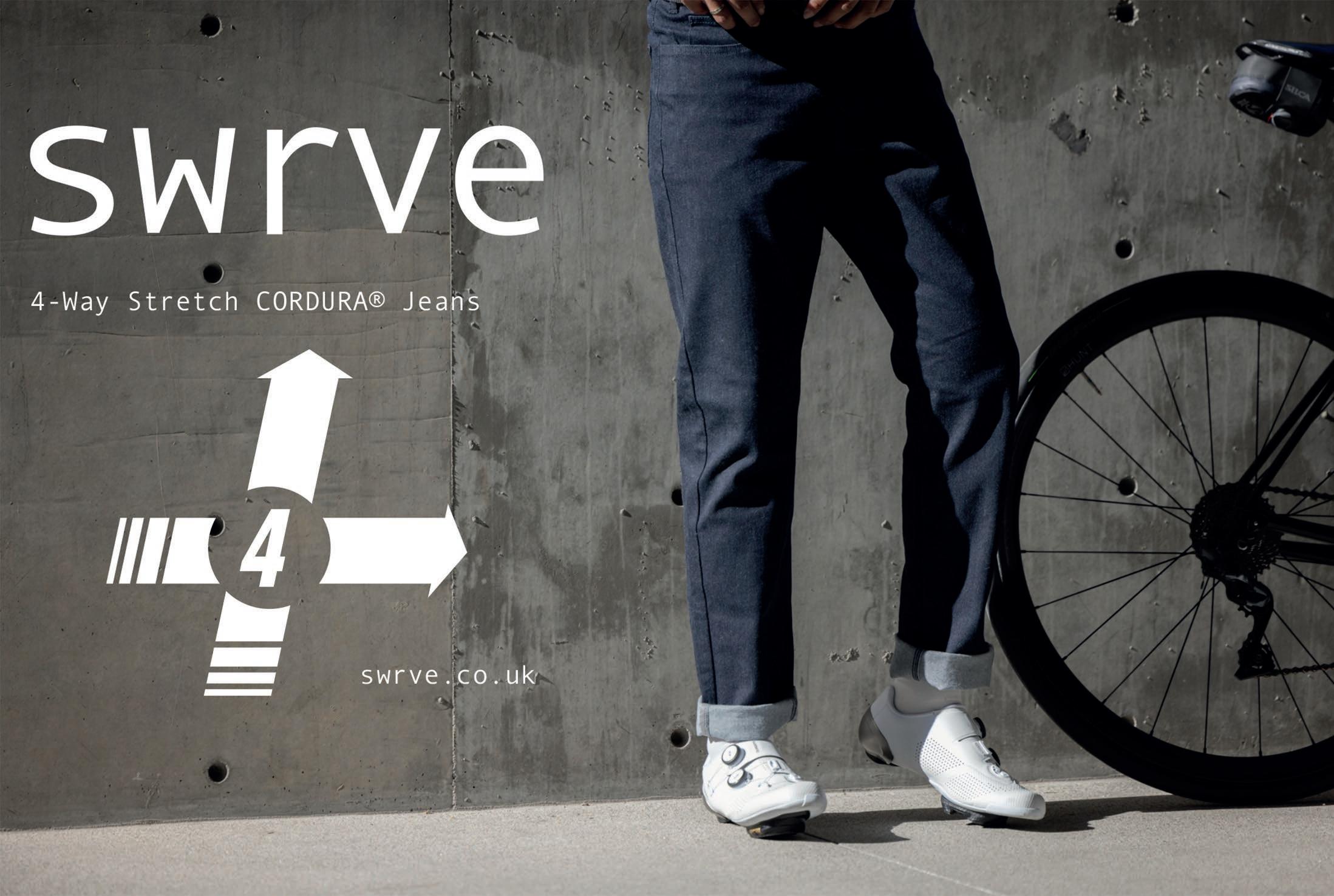
Many people lack the opportunity to ride a bike. Cycling UK community groups across the country are providing it, as Jennifer Young explains


Cycling UK believes that cycling is an activity that everyone should be able to enjoy. You might think that a bike is all that’s needed to open up almost limitless opportunities to improve health and fitness, save money on transport and have fun. In practice, however, if you’re not an ablebodied, heterosexual white man, you are much less likely to cycle.
The reasons for this are many and varied, but Cycling UK has a number of Community Cycle Clubs and affiliated groups that are making cycling more accessible in their local areas. I spoke to three of them to find out what they are doing to increase the number of people from underrepresented groups in cycling.
St Augustine’s Centre works with asylum seekers and refugees in Halifax, West Yorkshire. Last year its Community Cycle Club was born, offering bike repair and maintenance workshops as well as led rides to support members into cycling and to enable them to embrace active travel. Initially, it also repaired donated bikes to give to members, but changing to a bike library setup has allowed it
to create a community of new cyclists.
Premises manager Paul Clarke told me: “It’s easy to give a bike away but harder to create a regular cyclist who feels part of a community. Before, we didn’t know how people were using the bikes, or even if they were using the bikes at all. Due to the transient nature of the sector, sometimes people are told to move quickly, without enough time to return the bike. Or it may be that they get a puncture and don’t know how or can’t afford to fix it. Some people may not have cycled since childhood and need a helping hand to work the gears, or they may not be confident to ride much in an unfamiliar area. We can help with all of that.”
Since moving to a scheme that provides shortterm bike loans for free this year, Paul and his team have been able to build relationships with members who are repeat visitors, to offer them further support with cycling as well as introducing them to suitable activities taking place there.
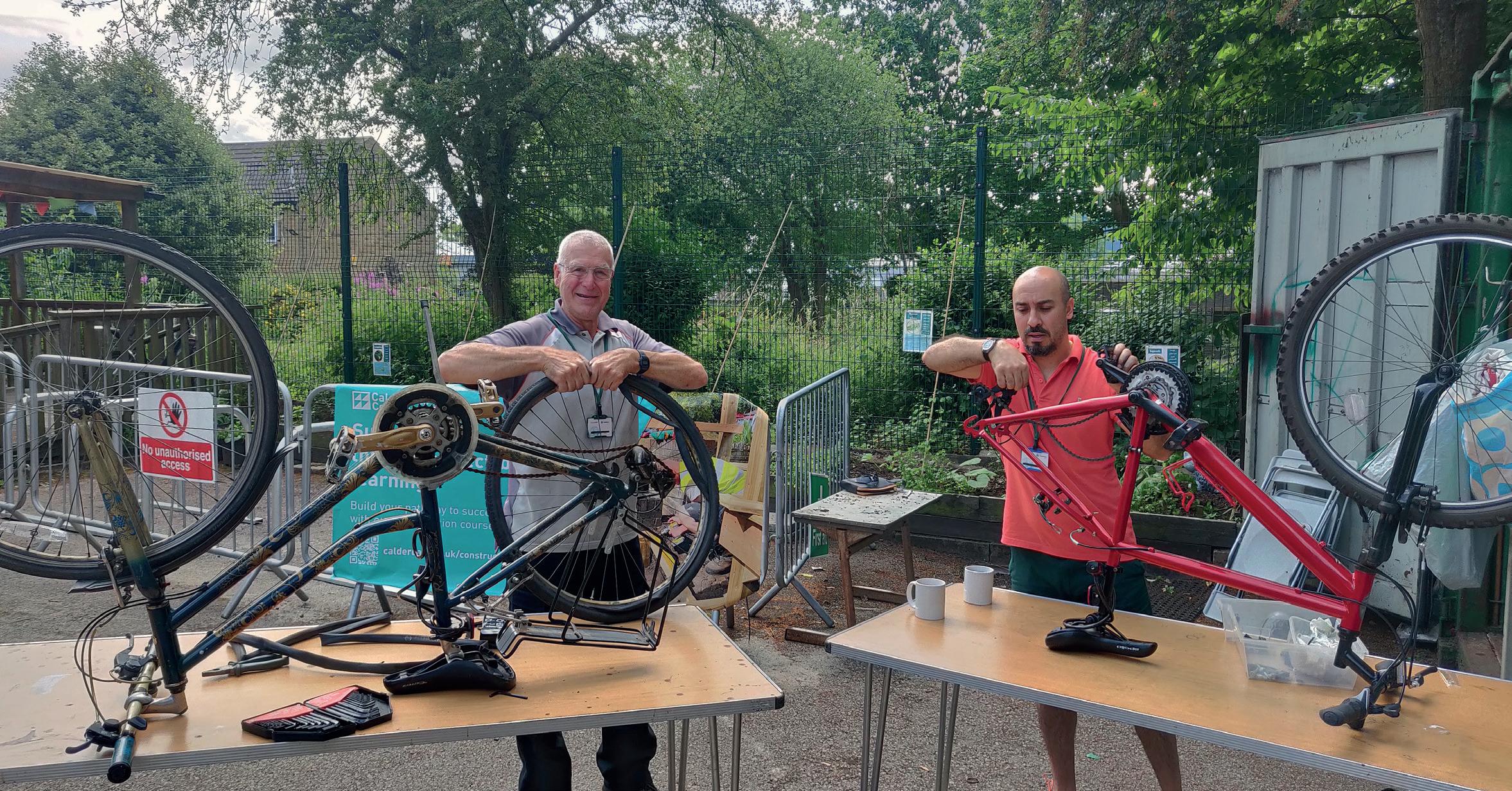
“We don’t want people to just come and get a bike then wave goodbye to them. We want to encourage them to take part in music, football, dancing, boxing, art or one of the many other activities we offer, to give them a chance to socialise with others and enjoy themselves.”
And, of course, cycling is a big part of that, with weekly led rides and repair sessions attracting healthy numbers. These activities are possible thanks to the efforts of dedicated volunteers, some of whom took part in training courses offered by Cycling UK through the Community Cycle Clubs programme.
St Augustine’s has also delivered events funded by Cycling UK’s Big Bike Revival and Active Calderdale. Its involvement with Cycling UK extends to referring a number of community
members to West Yorkshire’s Cycle for Health programme, which is run jointly by the charity and West Yorkshire Combined Authority to engage people with long-term health conditions in cycling lessons.



With 705 people in the area seeking asylum, Paul feels there is a real need for what St Augustine’s is providing. “Just as important as ensuring our community members are safe is the need to engage them in meaningful activities like cycling, which helps their health, offers free transport and means they aren’t sitting alone in a hotel room,” he said.
It was a chance encounter that led Rob Brown into inclusive cycling. He had taken an accessible approach to delivering Bikeability in schools in the Scarborough area by providing bikes to enable children who didn’t own one, or couldn’t transport it to school, to take part. When it became clear that some children who initially refused to take part were interested but unable to ride, Rob started doing learn-to-ride sessions. Then one day, a teacher mentioned that one boy wouldn’t be taking part as he was a wheelchair user. Rob was determined to find a way to include the boy, even though he had no idea what that would be.
Rob said: “It seemed so unfair that this boy would be left out while all his classmates were going out on bikes. I found a tag-along trike, which I attached to my bike, and that worked well as it helped him with balance while allowing him to pedal. I told him that I would just be the engine and would follow his commands. He loved it, and I realised that one simple thing like that could make a big difference.”
Word spread and soon Rob was asked to provide cycling sessions for other children in the area with mobility impairments, gradually building a fleet of non-standard cycles and gaining experience. Around five years ago, he joined forces with local bike shop Big Bear Bikes to take on the cycle hire business at Dalby Forest, enabling visitors to the forest to hire regular or non-standard cycles to explore the miles of trails and fire roads.
“The high purchase cost of non-standard cycles means that they are unaffordable to many, so we think it’s really important to offer them for hire alongside the regular mountain bikes for much the same cost. We don’t know of anywhere else that does that, but it’s only right to open up the forest to everyone, as everyone has the right to enjoy it.”
Dalby Forest Cycle Hub CIC, which is an affiliate member of Cycling UK, now boasts an impressive fleet, with recumbent e-trikes, an e-handcycle, side-by-side tandems, a wheelchair transporter and more. As well as individuals, the adaptive cycles are open to use by groups.
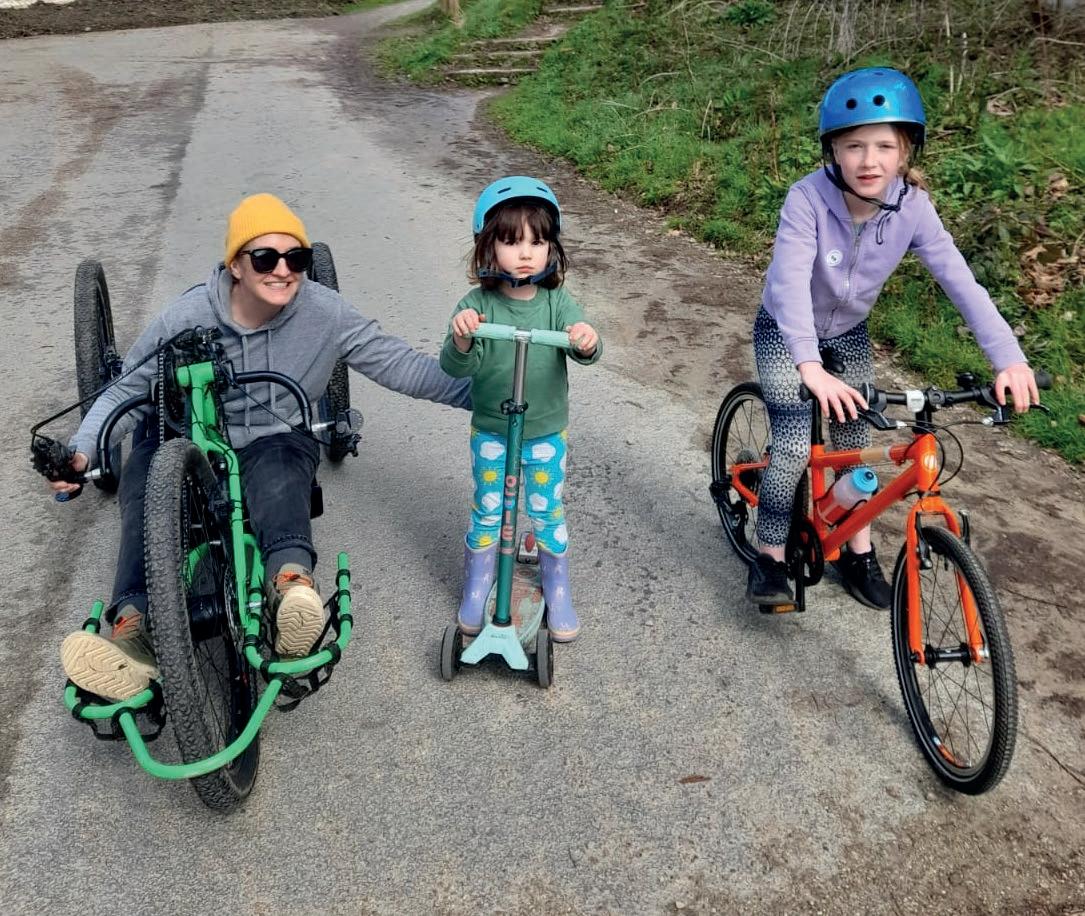

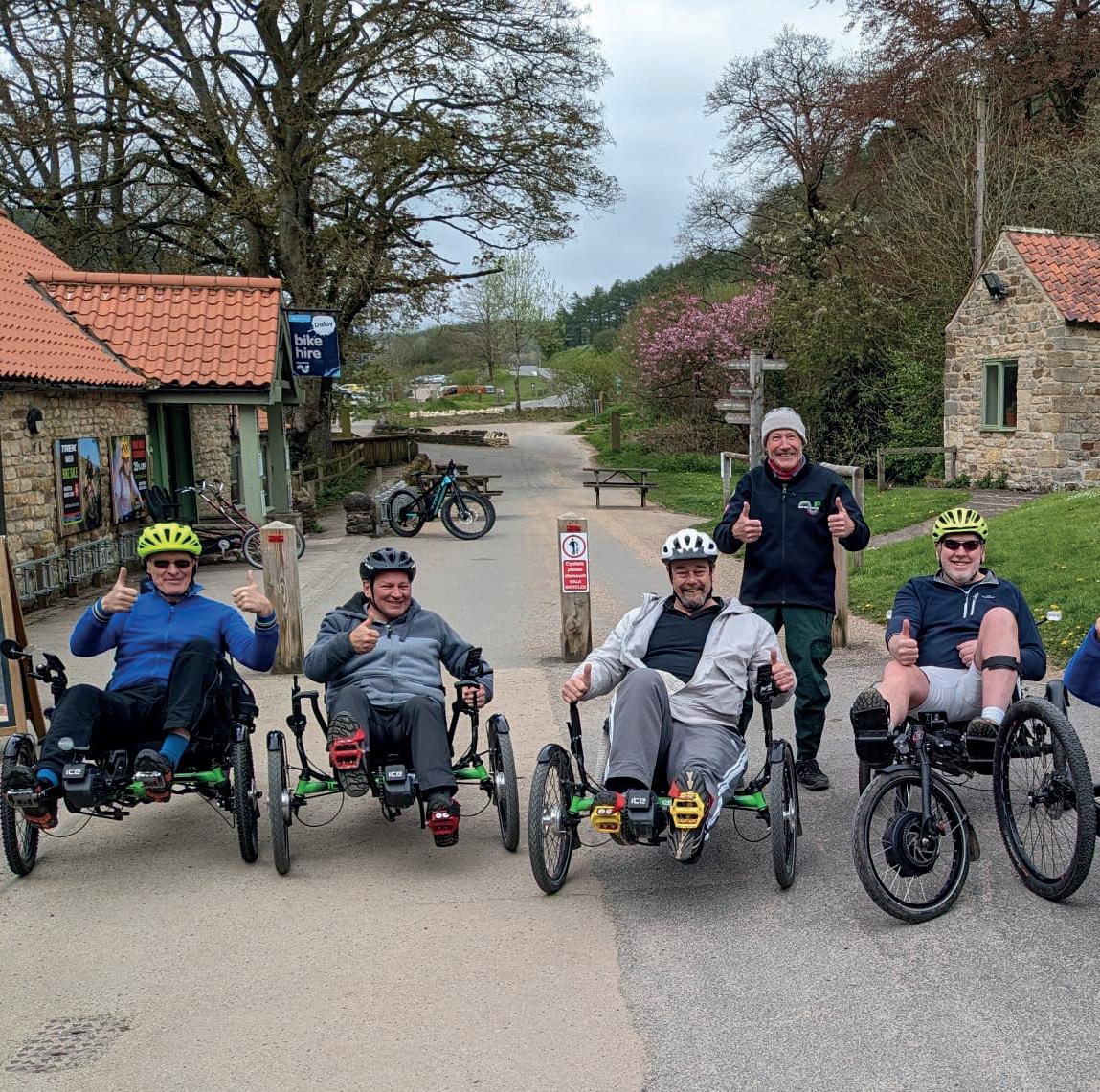
“We have volunteers who take groups into the forest on the network of fire roads, as the singletrack trails are too narrow for them. It’s great for social interaction, in fact we call the side-byside tandems ‘talking bikes’ as they are so good for that. People love riding together and it also means they don’t get lost in the forest!”
Sam Henry’s parents couldn’t afford to buy him a bike but when he was given one by a friend at age 13, it changed his life. With that in mind, many years later in 2020, he founded No Limits to Health after a career in youth work demonstrated the difference that engaging people with the outdoors can make.
He vowed to spend the rest of his life enabling others to experience the joys and benefits of cycling for physical health and mental wellbeing: “Since we’ve been going, people’s lives have been changed.”
No Limits To Health CIC now has two hubs in Wolverhampton, which offer cycling activities to everyone and also support young people from disadvantaged backgrounds into competitive cycling. As well as being one of Cycling UK’s Community Cycle Clubs, No Limits To Health has been funded by Cycling UK to run Big Bike Revival events, with the focus this summer on learn-to-ride sessions and led rides, along with some Dr Bike sessions. Sam has seen for himself how these events widen access to cycling.
“I can tell you that Big Bike Revival works.
In my opinion it’s one of the best things that Cycling UK has done as you’re putting money where it’s making an impact. The Cycling UK development officers I have worked with have been so wonderful and helpful – I wouldn’t be where I am today without their support.”
These events form part of the social enterprise’s Summer of Cycling, which also includes weekend rides and longer tours across Wolverhampton and the Black Country. Events run in spring and autumn.
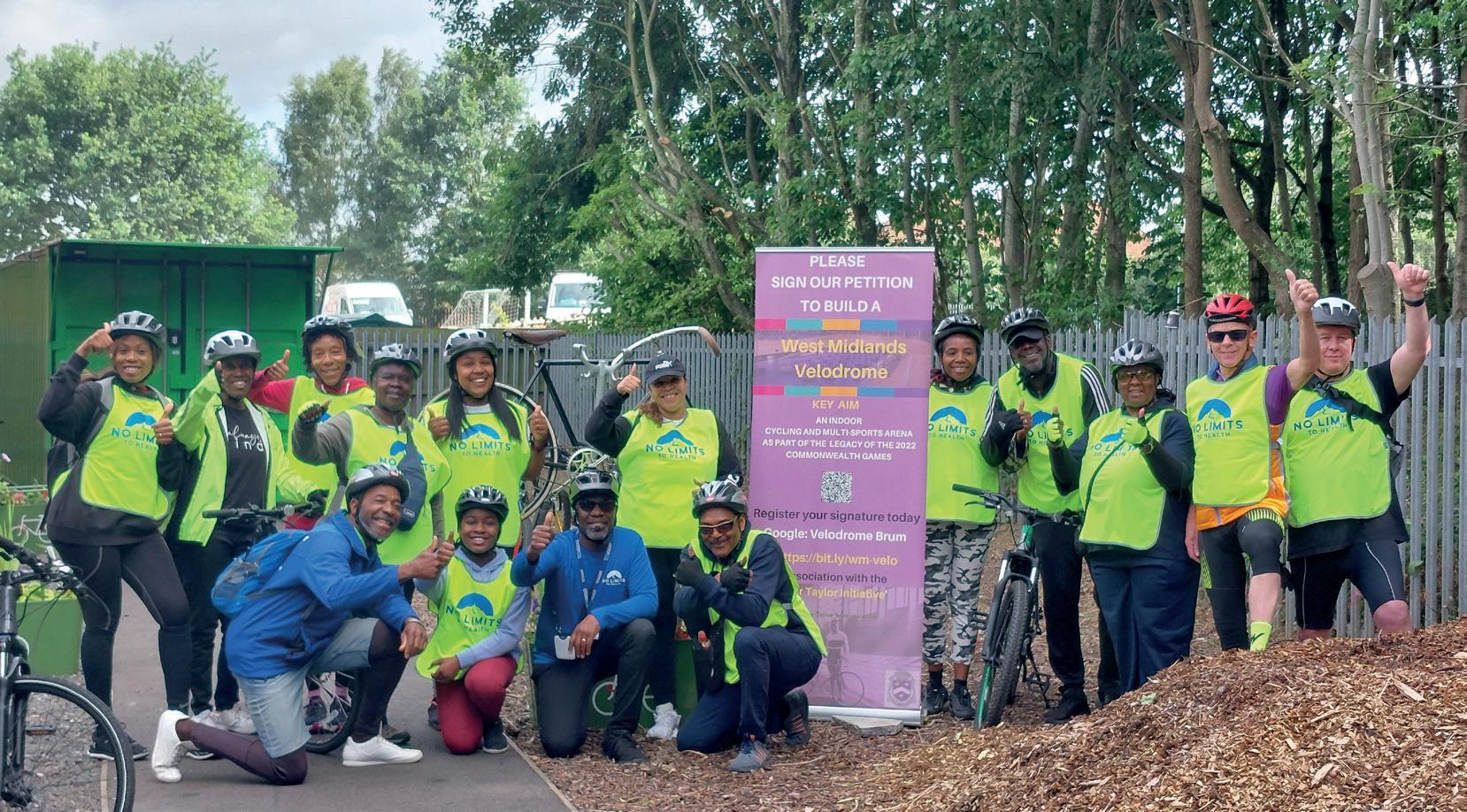
“The tours give us a chance to show local people that right where you live are paths which will lead to beautiful places that you didn’t know existed, and you wouldn’t know from driving past; you only discover them on foot or by bike. There are some amazingly green routes in the heart of the West Midlands – canals which are teeming with nature. You don’t have to travel to Spain or Portugal or anywhere else to see beautiful places. We have them right here!”
Sam is now in a position to advocate for more and improved cycle routes in the area, in his role as bicycle mayor for Wolverhampton. “Thanks to the work of Cycling UK and others, the UK Government is now realising that if we’re going to get more people on bikes, we have to improve the cycling infrastructure. And more and more UK councils are getting on board with the idea of a bicycle mayor.”
As a spiritual person, the humble bicycle wheel has special meaning for Sam. “People don’t realise how spiritual the wheels on a bicycle are. If you read the Bible, Ezekiel chapter one talks about the wheel within the wheel. The wheel is eternal – as long as it has bearings inside, it will keep rolling forever.”

As well as supporting Community Cycle Clubs and affiliated organisations, Cycling UK runs innovative and award-winning projects that make cycling more accessible.
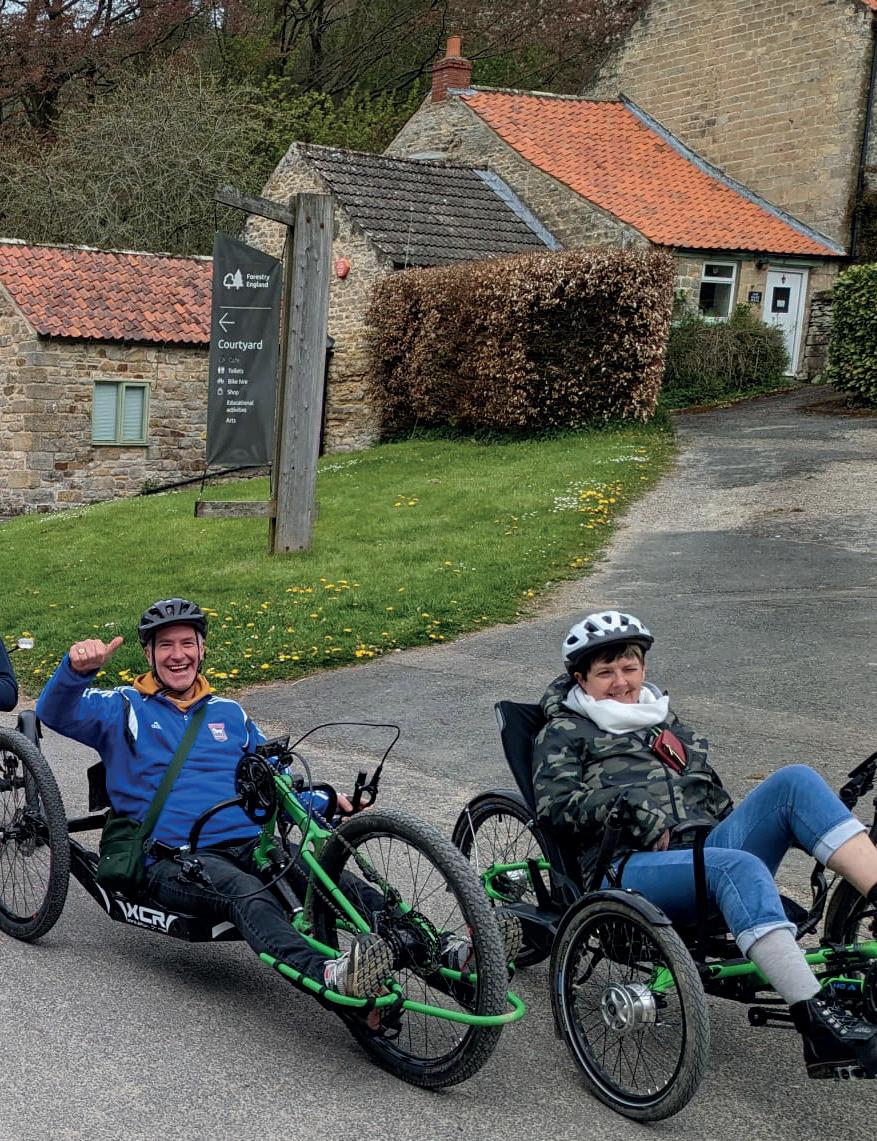
In England, the Big Bike Revival funds local delivery partners to offer free ‘fix, learn and ride’ events for beginners or those returning to cycling. The Community Cycle Clubs programme offers funding to community groups to run cycling-based activities, including led rides and training for instructors and mechanics. Making cycling e-asier provides free one month e-bike loans and skills training.
In Scotland, Bothies offer walking and cycling activities aimed at beginners in four locations, while Play Together on Pedals teaches pre-school children cycling skills. Access Bikes and the new Cycle Share Fund provide funding to community organisations to enable people on low incomes and those for whom cycle ownership is not the best option to experience the benefits of cycling. Rural Connections supports people to cycle, wheel and walk in Scotland’s remote and rural communities. cyclinguk.org/ community-cyclingprojects
Caroline is a poet, writer, teacher, performer and one of Cycling UK’s 100 Women in Cycling 2022. Find her on social media

@VerseCycle, with links to her work at https://linktr.ee/ versecycle
Maybe there’s a medieval bard in my genealogy. That’s my theory why I toured my poetry show ‘Turning Pedals into Poems’ from Bristol to Berwick-upon-Tweed over seven weeks in 2022. I performed in arts and community centres, bicycle shops, libraries, book shops, record shops and ethical shops.
I’d trialled a tour the year before, after being chosen for mentorship by The Handlebards, the Shakespeare Theatre Cycling Company. In 2022, they helped me make a funding application and a venue spreadsheet, a word usually avoided by poets. Tour planning began at the year’s start, juggling routes, venues, accommodation, publicity images, promotion and rehearsing.
In retrospect, it was perhaps too much for one cycle-poet to manage. In March I got Covid, followed by post-viral heart inflammation, making cycling across England seem far-fetched. Then the funding application came back as unsuccessful. I put my stuff in storage and rode on with the show.
Travelling with a lower-carbon footprint involves not only taking the road less travelled, as Robert Frost’s
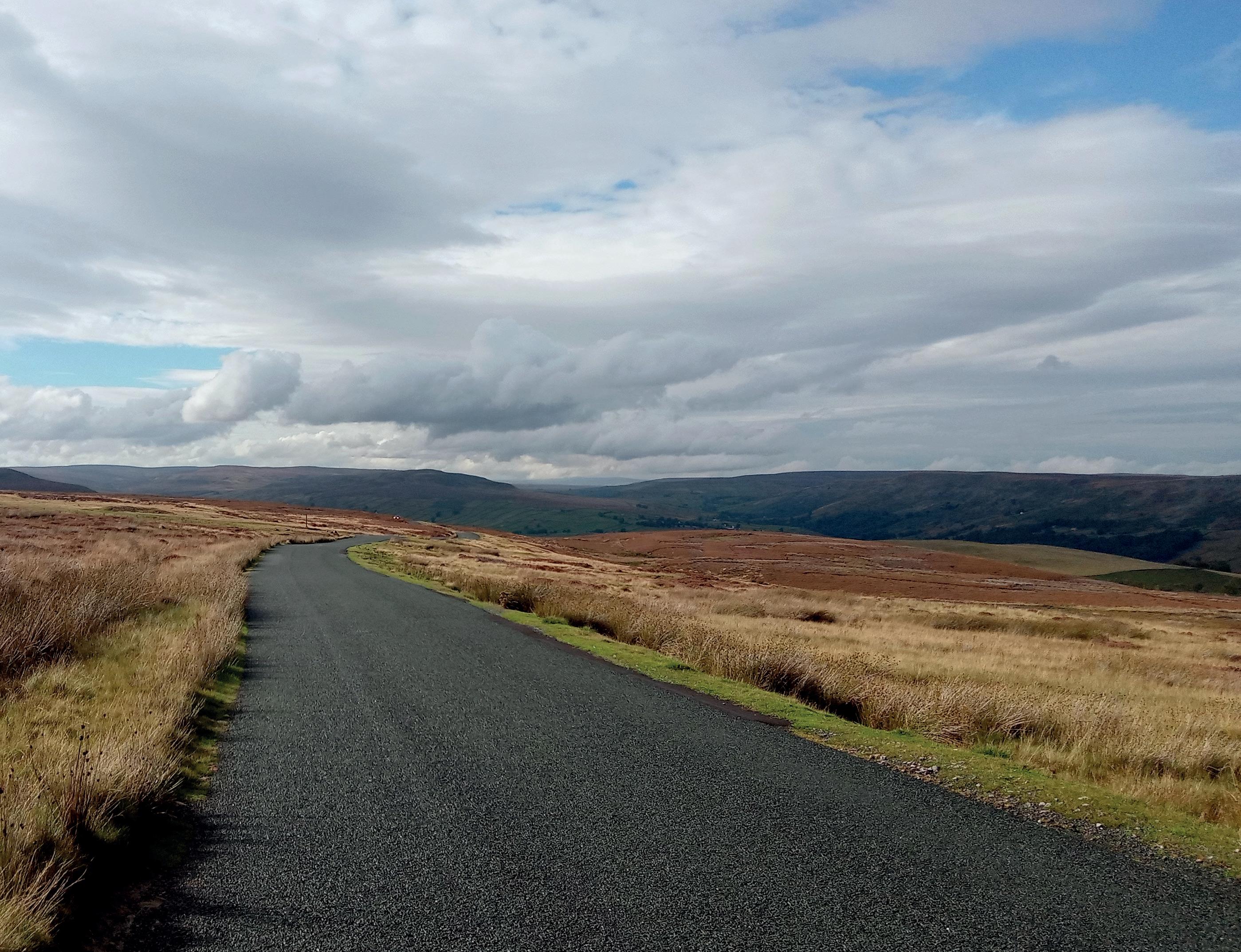
poem goes, but also taking the bike less lightweight, packing the bags most bulky, and, compared with driving, spending the time much lengthier.
I’ve had my Dawes Horizon, Bikey, for about 18 years. Others have come, fallen apart, and one even lost an argument with a Volvo, but Bikey has remained a constant. I considered adding a dynamo to reduce how often I plugged my electronics into the mains, but was concerned that my average speed of 8mph wouldn’t generate sufficient power. Instead, I took solar panels that folded like an A4 hardback. I set off in August’s heatwave, with solar power and then some, but it was worrying seeing the roadsides of the South-West and the Midlands lined with bleached grass and frazzled willowherb looking like fish skeletons. Later, during rainy days, I did charge indoors.
I filled a quarter of a pannier with prescription meds for niggling chronic conditions. An underactive thyroid makes me intolerant to cold, so I also packed my dad’s 1968 Norwegian woolly jumper. Its age was showing, so I repaired one elbow with a Cycle Touring Festival patch, and sewed a cuff from an old glove around the jumper’s unravelling one.
One piece of advice I’d give for planning a tour
Touring a show around the country usually means driving. For cycle-poet Caroline Burrows , it meant living out of her Dawes Horizon’s panniers
is to calculate the climbing. Cycling the flat Bristolto-Bath cycle path is very different from riding in the Peak District, and changes again factoring in camping gear. My limit was a maximum of 1,500ft a day, regardless of mileage.

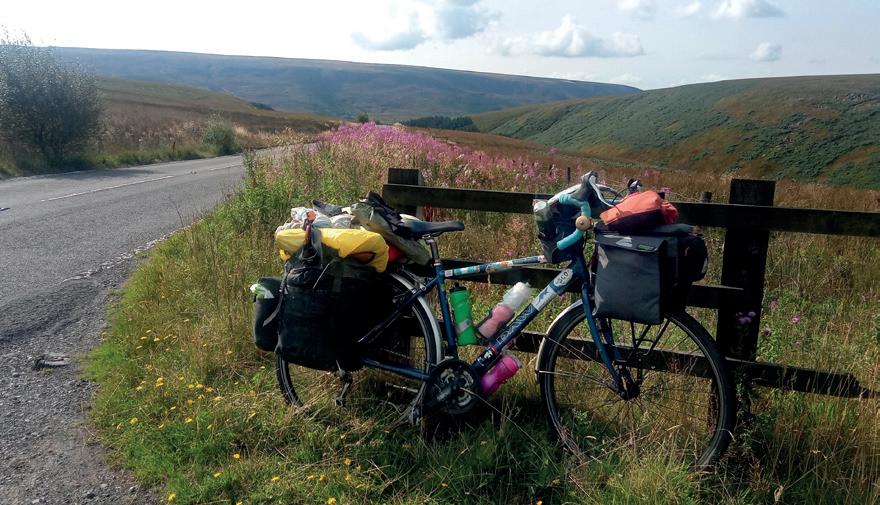


However, advice is often ignored, often by the person giving it. For one unnecessarily arduous day of only 15 miles, but over 1,500ft of climbing, I blame another poet. Peter was shocked I’d be missing out Winnats Pass in the Peak District. I told him not to be ridiculous. I’d spent hours engaged in obsessive hillreduction planning. Why would I include one of the UK’s best-known climbs?
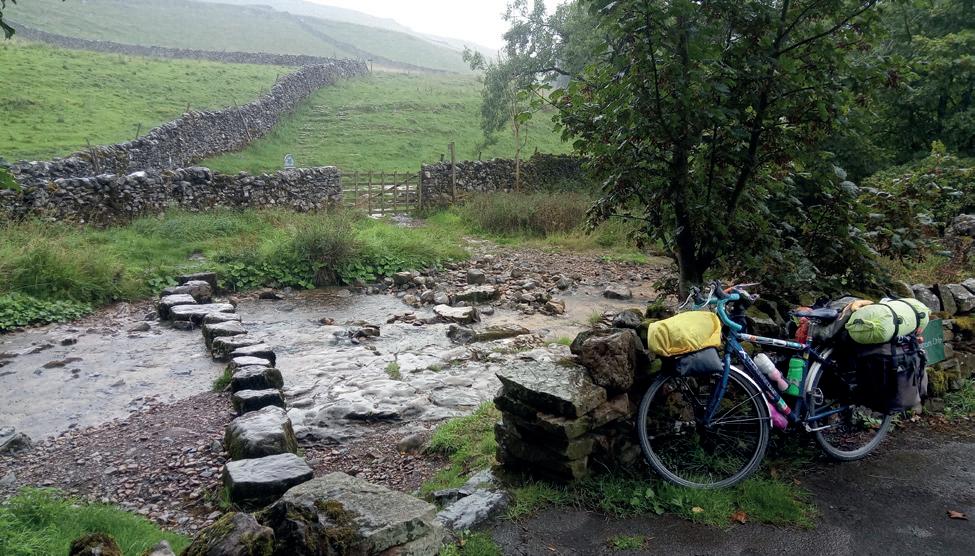
The next day, like a frayed-merino-clad Sisyphus, I pushed Bikey over the pass. I couldn’t even turn round to enjoy the view in case I lost my grip and Bikey hurtled back downwards. Head bowed, I spied a furry caterpillar on the verge making slow progress. We shared a moment.
Entering the Yorkshire Dales and Pennines, I rotated suncream and waterproofs. The campsite near Leyburn was waterlogged so I cycled north to Grinton Lodge YHA. The scenery was outstanding, interspersed with military signs that ordered no stopping, and forbade going off road where army shooting practice boards were visible. At my speed, I would have barely been a moving target.
At the YHA I received an email cancelling my next gig at short notice. I phoned alternatives. No joy. So I




put a call out on social media and someone got in touch. Allie was part of what I now call the Angels of Barnard Castle. Between them, a pop-up gig and accommodation were arranged for the following day. All I had to do was get there.
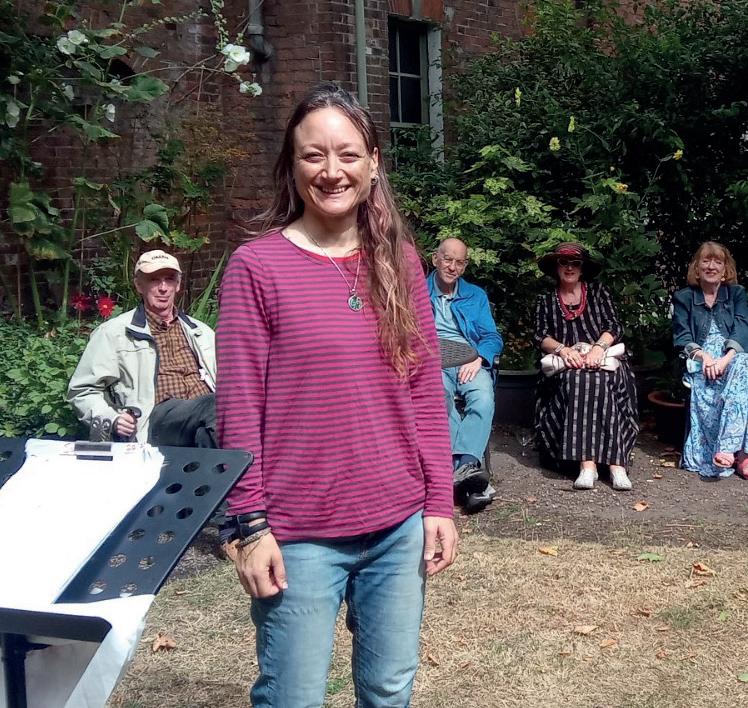
My friend Brenda phoned. I’d first seen her teaching how to make your own tarp at the Cycle Touring Festival. She warned me against going over the Stang, which she’d struggled with on an e-bike. Komoot showed a kinder route further west. I set off in sunshine, popping into a bike shop to tell them about the gig, and in Reeth bought bread rolls for lunch.
I was slower than usual and wondered if my thyroid was making me tired. A few miles on, I checked the front brake. It was locking on, the wheel barely spinning. I got it working but then the same thing occurred, and I was about to ride into sparsely populated hills, with no phone signal. Feeling dejected, I reached a pub and asked for help. They let me phone the bike shop I’d passed, and a man gave me a lift in his 4×4. One of my water bottles emptied across the back. I was very apologetic.
The shop mechanic couldn’t replace the brakes but made a temporary fix. Then I set off, along the same roads I’d cycled three hours before but now in heavy rain. At the turning, there wasn’t a road but a gravel path. Going back meant the Stang but carrying onwards lead to Tan Hill, Britain’s highest pub. I took the path most gravelly, which deteriorated into rocky, flooded potholes.
Apparently, there are two types of fun: type A and type B. I was having neither
I found out I was one of Cycling UK’s #100WomenInCycling while rolling out my sleeping mat in a very cold sports’ changing room in Bamburgh Pavilion. It was wonderful to be included among other women involved in genuinely meaningful endeavours such as leading community groups, campaigning, and promoting cycling. Naming 100 Women each year showcases the many different and marvellous ways cycling can be championed and celebrated in an inclusive way, and demonstrates there are styles of cycling activity to suit everyone. For more about #100WomenInCycling, visit cyclinguk. org/100women
when I reached a gate saying I was on the Pennine Bridleway. All I could see were hills and sheep. I’d forgotten to refill the spilled bottle and had drunk my other one. Maybe food would help? I got out the rolls and squeezy honey. The honey had set irretrievably solid at the bottom. Only the sheep could hear me scream.
I felt like the long-distance hikers I’d met camping at Crowden, all walking the Pennine Way. I sucked on my rain-infused bread and trudged the bike through puddles, knowing I’d get somewhere eventually. Never was I so happy to spot a distant road with lorries speeding down it. Farmhouses appeared. Another gate. Tarmac. A village. A bench. A phone signal. It hadn’t been that far but had felt it.
I arrived just in time to get changed and into my host’s car, with a bowl of pasta on my lap, to get to McNab's Books. It was a delight, with a cosy group discussing their own stories with my poems. An evening of heaven after the day from hell.
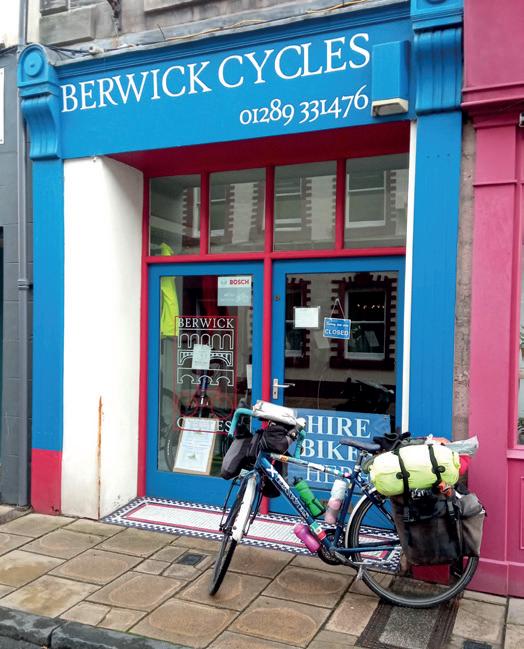
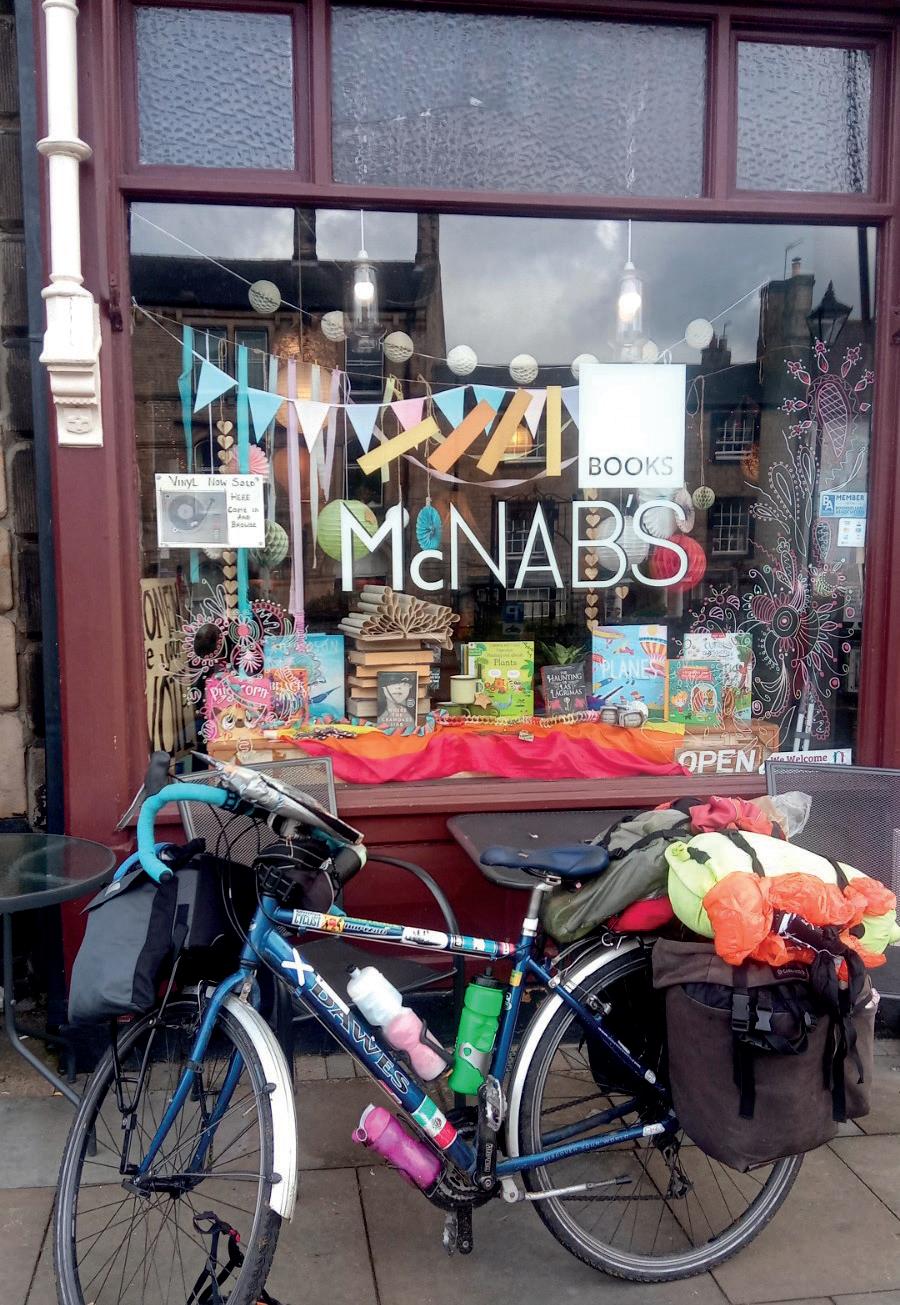
Other tour highlights included admiring wind turbines spinning while cycling towards Alnwick in an impossible headwind; recording a poem for the ethical bank Triodos on Hadrian’s Wall Path; being the support
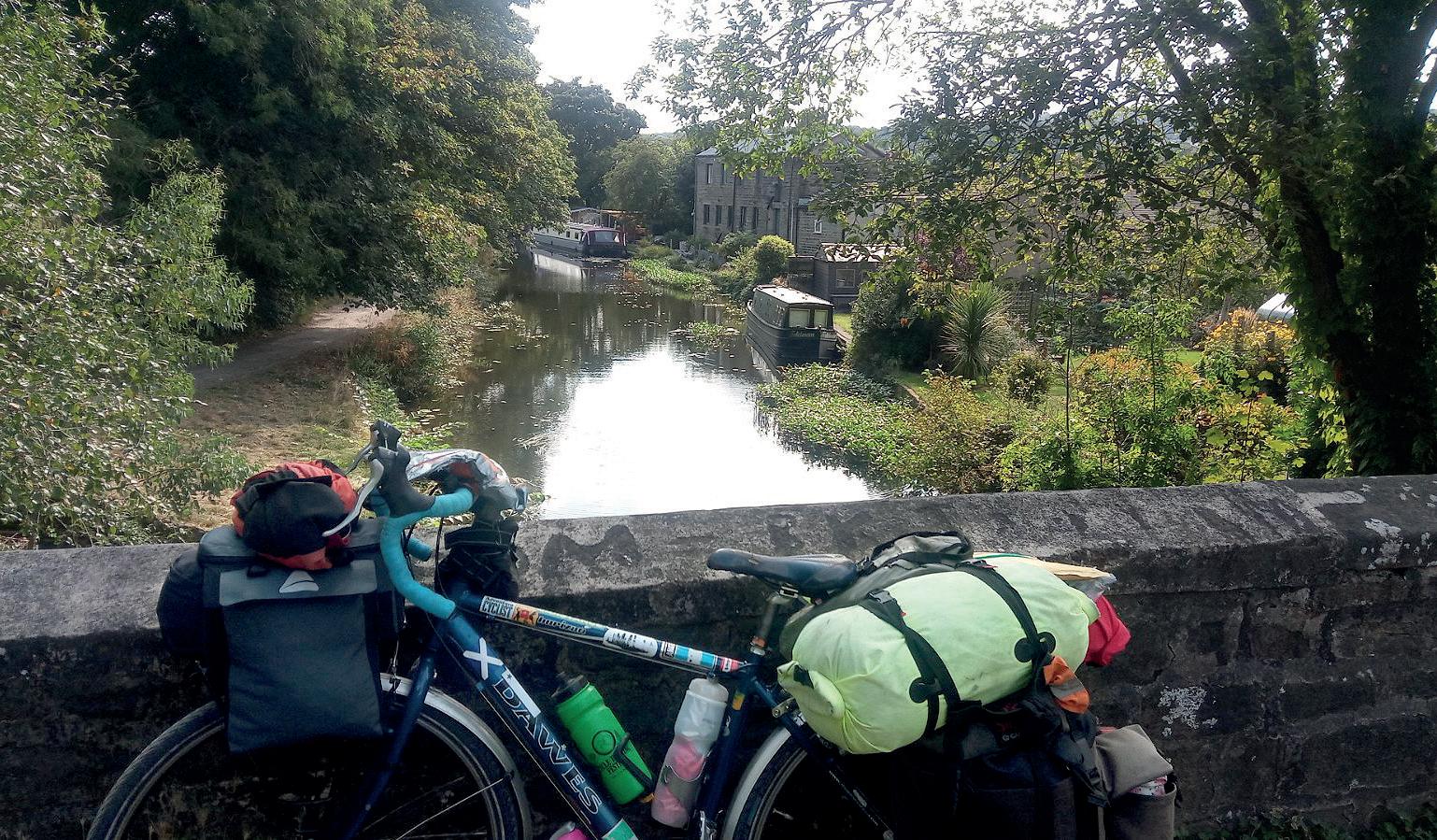

Distance: 580 miles.
Climbing: 24,500ft.
Route: Bristol to Stratford-upon-Avon, Cotesbach, Stamford, Nottingham, Matlock Bath, Holmfirth, Bradford, Barnard Castle, Hexham, Newcastle, Bamburgh, and Berwick-uponTweed. (I detoured to Middlesbrough for a train to Hexham due to front brake issues, and got a lift between Holmfirth and Keighley.)
act for a cycling stand-up comedian; performing under a willow tree in Shakespeareland (very Ophelia-esque); and getting lost on the moors with a friend in Brontë country, an authentic Wuthering Heights experience.

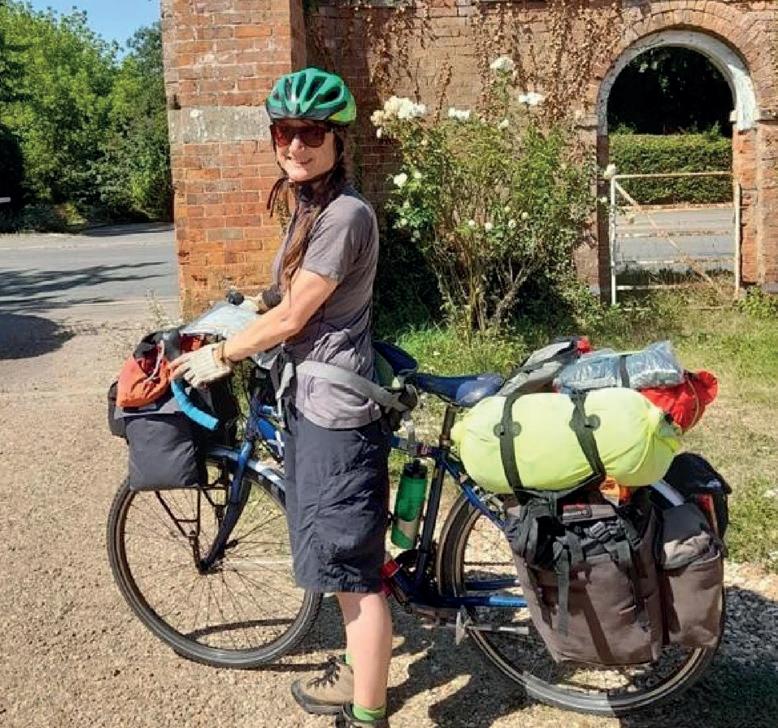
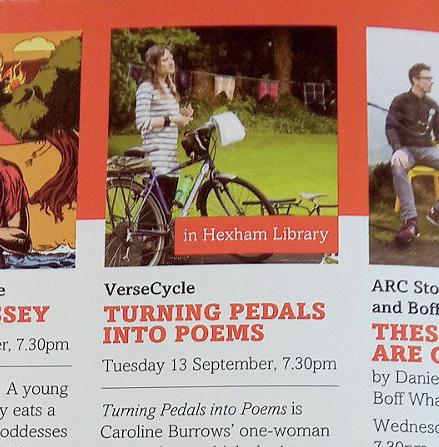
That’s how I’d have titled John Donne’s poem if I were writing it almost 400 years later. Help for my tour came in many forms. Some venues provided accommodation. I slept on a boat, in the attic room of a historic house and a sports’ changing room. I stayed with a Green councillor and an organiser of Berwick’s Great Big Green Week. When venues helped, I taught free poetry sessions before gigs. I also stayed with Warmshowers and Cycle Touring Friends hosts, including a penny-farthing rider and another of Cycling UK’s 2022’s 100 Women in Cycling.
Adam Crowther promoted the tour on BBC Radio and Cycling Minds, a Cycling UK 2023 Volunteer Award Group, spread the word in Hexham. Family, friends and friends of friends also provided moments of calm shelter. Quite a few local bike shops kept my temperamental front brake going until a new one was fitted in Newcastle. I cycled and performed solo, but couldn’t have done that without the help of so many people.
Conditions: A heatwave, heavy downpours, strong headwinds and some pleasant summer days.
Accommodation: Camping, YHA, Warmshowers, Cycle Touring Friends, family, friends and friends of friends.
Bike used: Dawes Horizon touring bike (Bikey, also known as Old Reliable).
Maps/guides:
Komoot. Pages from a road map of Britain. Local knowledge.
I’m glad I had: My dad’s woolly jumper. Shimano GoreTex cycling boots; overshoes are never waterproof enough. A Highlander camping chair/mat.
Next time I would: Buy honey in a glass jar. Plan a few days at the end at a spa to recover.
Further info: @VerseCycle on social media.




QI ruptured my Achilles tendon about a month ago and I’ve been wearing the VACOped boot for a week. Next hospital appointment is in three weeks and I’ve not yet had advice about exercises that might help the recovery. I’ve been doing upper body stuff with those resistance bands to help crutches use. Any advice would be very welcome. Or am I too soon?
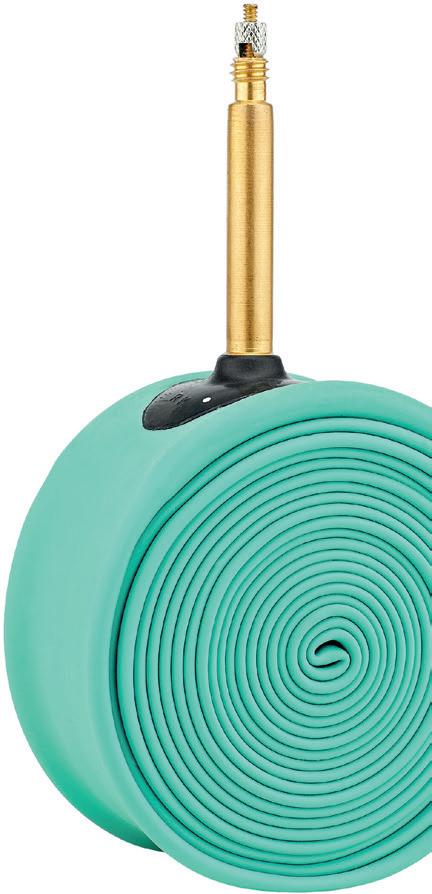

AOilyhands, on the Cycling UK Forum
AWith a ruptured Achilles tendon, patience is the watchword. Very few people get a surgical repair so most must wait for the tendon to heal. The first six weeks in a boot hold the foot in an extended (toes down) position to keep the tendon slack. As you get towards the end of boot wearing, the physio usually takes out the wedges that hold the foot extended and allow it to come back to a neutral position.
Clearly it is important to avoid sudden flexion of the ankle while it is healing so, along with mobilising exercises, using an exercise bike gently will be the first step in recovery. The physio will advise on when you can progress to road biking but it will be sudden dismounts that will threaten the tendon. For this reason mountain biking and off-road cycling pose more risk. Take it gently and you should be fully recovered by around six months.
Dr Kate Brodie
QRiding to the start of a time trial recently, one of my 700×23C Michelin AirComp latex innertubes failed. There was no puncture and the Presta valve was closed. The oval-shaped rubber pad around the base of the valve had an adhesive bond failure. I’ve had another fail in the same way, suggesting a manufacturing defect. Can I use a standard puncture repair rubber solution to fix it back in place? Or should I just give up and use butyl tubes? The reason for using a latex tube was to reduce the risk of punctures and provide a better ride quality.
Andrew PorterAThe fabled ride and punctureresistant qualities of latex innertubes have tempted many a performance-minded cyclist, often with the result you describe. Latex tubes are more elastic than butyl and will find and bulge into any small void inside the tyre and rim. They can also stretch non-uniformly, resulting in a thin, leaky section that loses air even more rapidly than a sound latex tube.
Your failed bonded joint is unusual, but it’s asking a lot of ordinary vulcanising solution to improve on the manufacturer’s adhesive technology. Lightweight butyl tubes are more reliable. If you want something more exotic, Tubolito tubes (Cycle Aug/Sep 2019) may fit the bill.
Richard Hallett

QThe right-hand pedal is stuck. I’ve damaged the bolt for the Allen key. You cannot loosen the pedal with
a spanner as it’s an Ergotec pedal. I’ve laid the bike on the side, sprayed WD40 over the bolt/axle and tapped the crank with a hammer to perhaps assist the fluid in penetrating into the thread. Any advice would be welcome. Otherwise I suppose it’s a trip to the bike shop.
Blackredgold1964, on the Cycling UK Forum
AIf you can’t get a decent grip of the axle via the damaged hex socket, you may be able to remove the pedal body and grip the axle in a vice, although this is likely to damage the axle beyond further use.
Stuck pedal axles are a common problem but really should not be. The axle thread must be greased before installation, and the axle done up snugly but not over-tightened. As someone once said: pedal spanners have long handles so you can undo the previous mechanic’s efforts. Unless greased, the pedal axle and crank threads will micro-weld themselves together thanks to the tiny movements in the same precession effect that keeps pedal axles from unscrewing, even when lightly done up.
Richard HallettQI was riding along a cycle path that runs adjacent to a single carriageway bypass with a 40mph speed limit when I was hit by a full 500ml plastic bottle from a car travelling in the opposite direction. The impact on my 73-year-old left knee was both a shock and very painful.
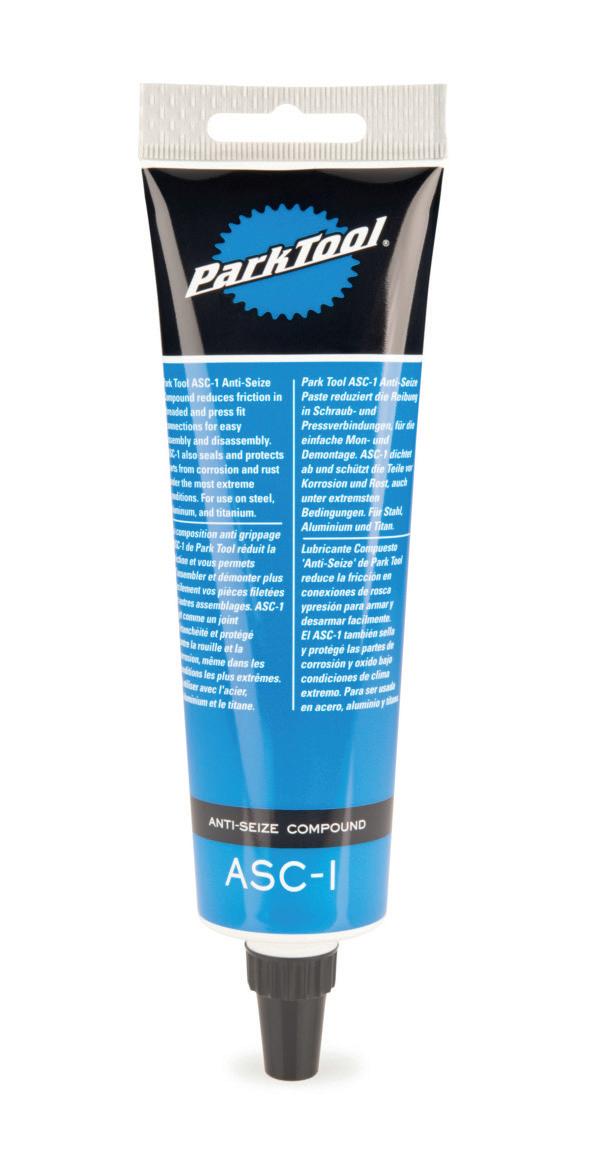
I am grateful that the bottle did not hit me in the face. I will now invest in a helmet-mounted camera! I wonder how frequent such incidents are and whether anyone been successfully prosecuted for assault in such cases?
Gerry DaviesAIf the bottle were deliberately thrown or released from a car, then that is an action which would carry a foreseeable risk of injury. It may have forgetfully been left on a bonnet, roof boot.
The relevant law is The Environmental Protection Act 1990, s87, on which Rule 147 of the Highway Code is based. The Highway Code says: “You MUST NOT throw anything out of a vehicle… this can endanger other road users, particularly motorcyclists and cyclists.”
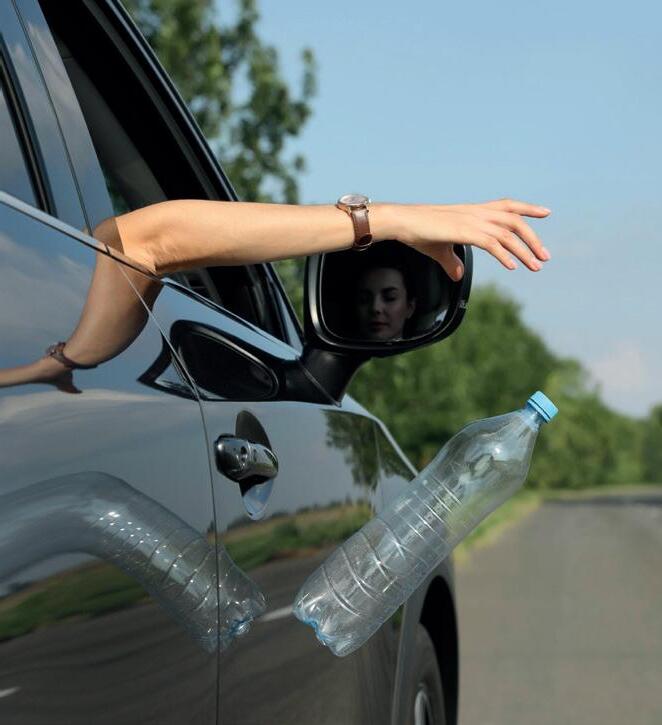
Had you, for example, been knocked off your bike and sustained a serious injury, there would have been a potential claim to the Motor Insurers’ Bureau under the Untraced Drivers Agreement, which doesn’t only cover ‘hit and runs’, ‘fail to stops’ and crashes resulting from diesel spills and lost loads. It is necessary to establish, on the balance of probabilities, the involvement of a motor vehicle and a negligent act by the driver or the occupants for whom the driver is responsible.
Paul DarlingtonQThe 1 1/8in Aheadset on my Viking tandem has had a hard life for the last few years. It gets ridden two or three times a week on potholed roads. The fork race looks worn out and brinelled to me. Although the balls are in good condition and the steering is surprisingly smooth, I feel a replacement of this 14-year-
old component is overdue. I was considering something chunky like the heavy FSA Pig but wondered if you had any recommendations? Ideally for something reasonably priced, robust and easily serviceable.
AThere are plenty of 1 1/8in pressedin headsets on the market at prices from around £10 to over £100. As ever with cycle components, a higher price indicates lighter weight. The lowest-cost headsets also use basic bearings, perhaps with caged balls that are shielded rather than sealed from the elements and cups pressed into their shells. More expensive headsets use angular-contact cartridge bearings.
Which is the more easily serviceable? Headset cartridge bearings are easily removed from their cups for replacement but can’t readily be ‘serviced’; replacement at a cost of around £10 to £15 per cartridge, depending on make and model, is the only option when they wear out. Caged bearings can be cleaned and greased as required but are more exposed to the elements.
Generally, if a budget headset wears out, the whole assembly must be replaced, which means removing the cups from the frame’s head tube. If you are happy doing this and servicing the bearings regularly, such a headset may be the preferred option. Otherwise, a mid-range offering with removable cartridge bearings will do the job, provided the bearings themselves are easily obtained.
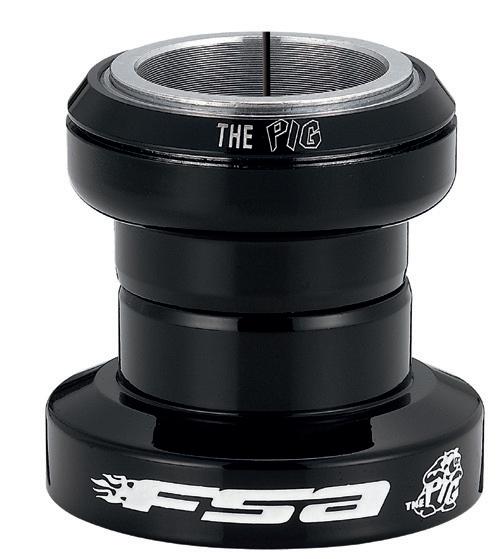 Richard Hallett
Richard Hallett
EMAIL your technical, health, or legal questions to editor@cyclinguk.org or write to Cyclopedia, Cycle, Cycling UK, Parklands, Railton Road, Guildford, GU2 9JX. Cycle magazine cannot answer unpublished queries. But don’t forget that Cycling UK operates a free-to-members advice line for personal injury claims, TEL: 0330 107 1789.
Ask us at cyclinguk.org/bikefinder

For: Jonny Blake, aged 25, from Central London Bike needs: Commuter bike for work in London Must haves: Straight handlebar. Easy maintenance. Space for mudguards Must not have: Nothing Budget: £500


 Simon Withers
Simon Withers

In an ideal world and for low maintenance I’d like to recommend a hub-gear bike, but price largely puts them out of the equation, though the Vitus Mach 1 Three (£519.99, vitusbikes.com) nearly hits your price point. But my final choice covers most of your requirements and even gives you a little change from your £500.
I’ve ridden a lot of Carrera Subways over the years and their performances far exceeded their quite modest prices. The Carrera Subway All-Weather Edition looks like being no exception (£485, halfords.com – but members can get an 8% discount on selected Halfords bikes, see cyclinguk.org/halfords) Not only does this aluminium-framed flat-bar bike come with full-length mudguards, the spec also includes automatic lights (I’d recommend an extra front light at least) and heated grips.
I’m not sure how crucial they are but, unusually and very impressively at this price, you also get hydraulic disc brakes, which will be a real boon in London’s traffic, as well as an exceptionally good gear range from the 2×9 Shimano Tourney setup. The low bottom gear from the 30/36 pairing – a wallclimbing 22in – will also go a long way to ameliorating the effects of the Subway’s 14.5kg weight.
The 27.5in tyres have a healthy 1.95in width that’ll put a big cushion of air between you and even the poorest city surfaces, so you won’t be battered by the road. Reflective frame and mudguard decals and reflective strips on the tyres will aid your visibility to other road users during night-time commutes.
Dan Joyce

Central London is flat enough that you can dispense with variable gears – and the need to maintain them. You see a fair number of fixie riders in the capital for those reasons. Skinny tyres aren’t optimal for London’s potholed and patched-up roads, however; wider rubber will give a safer, more comfortable ride.
The Vitus Mach 1 One City Bike SS (£399.99, vitusbikes. com) – a stablemate of the hub-gear model Simon mentions – is an urban mountain bike with 27.5×1.95in tyres. I tested its predecessor, the Vitus Dee 29, in the Feb/Mar 2017 issue of Cycle (cyclinguk.org/cycle/bike-test-vitus-dee-29), riding it on road and off. The Mach 1 One looks equally robust.
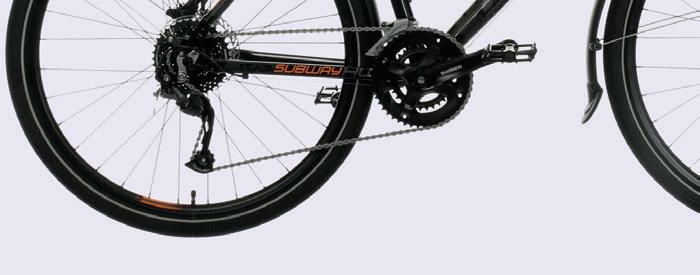
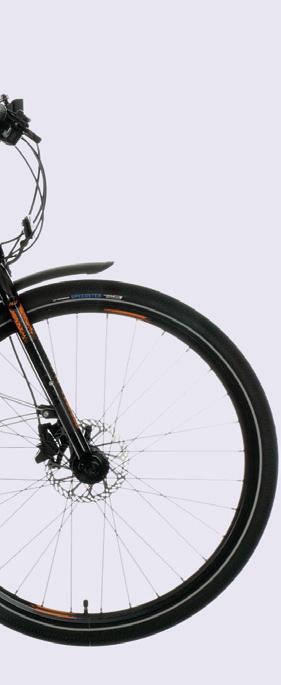

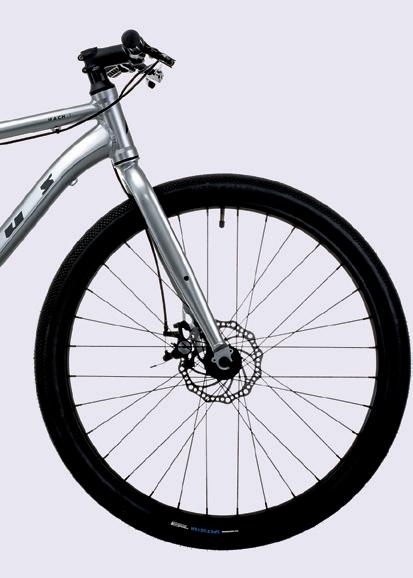
Its Alhonga mechanical disc brakes are not as powerful as the Carrera’s hydraulics but they should be effective enough, and are not hard to maintain. Just dial in the fixed piston and adjust the cable tension as the pads wear. The singlespeed drivetrain should need no attention beyond occasional oiling. With a 38-tooth chainring and an 18t screw-on freewheel, the gear is 58in. If that's too spinny, fit a 16t one (approx £15) for a 65in gear.
The Mach 1 One doesn’t come with mudguards but does have fittings for them, as well as for a rear rack. Frame-fitting guards like the SKS Bluemels Basic 28" 65 Mudguard Set (£42) will give more wraparound and keep you cleaner.

Theft is a big problem in London so I’d recommend spending most of the rest of your budget (~£50) on a short-shackle Sold Secure Gold-rated D-lock from the likes of Abus or Kryptonite
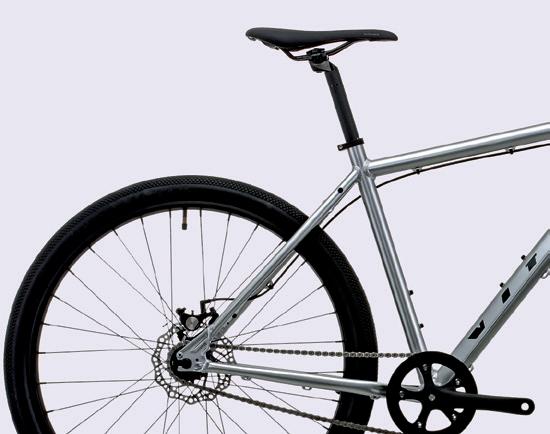
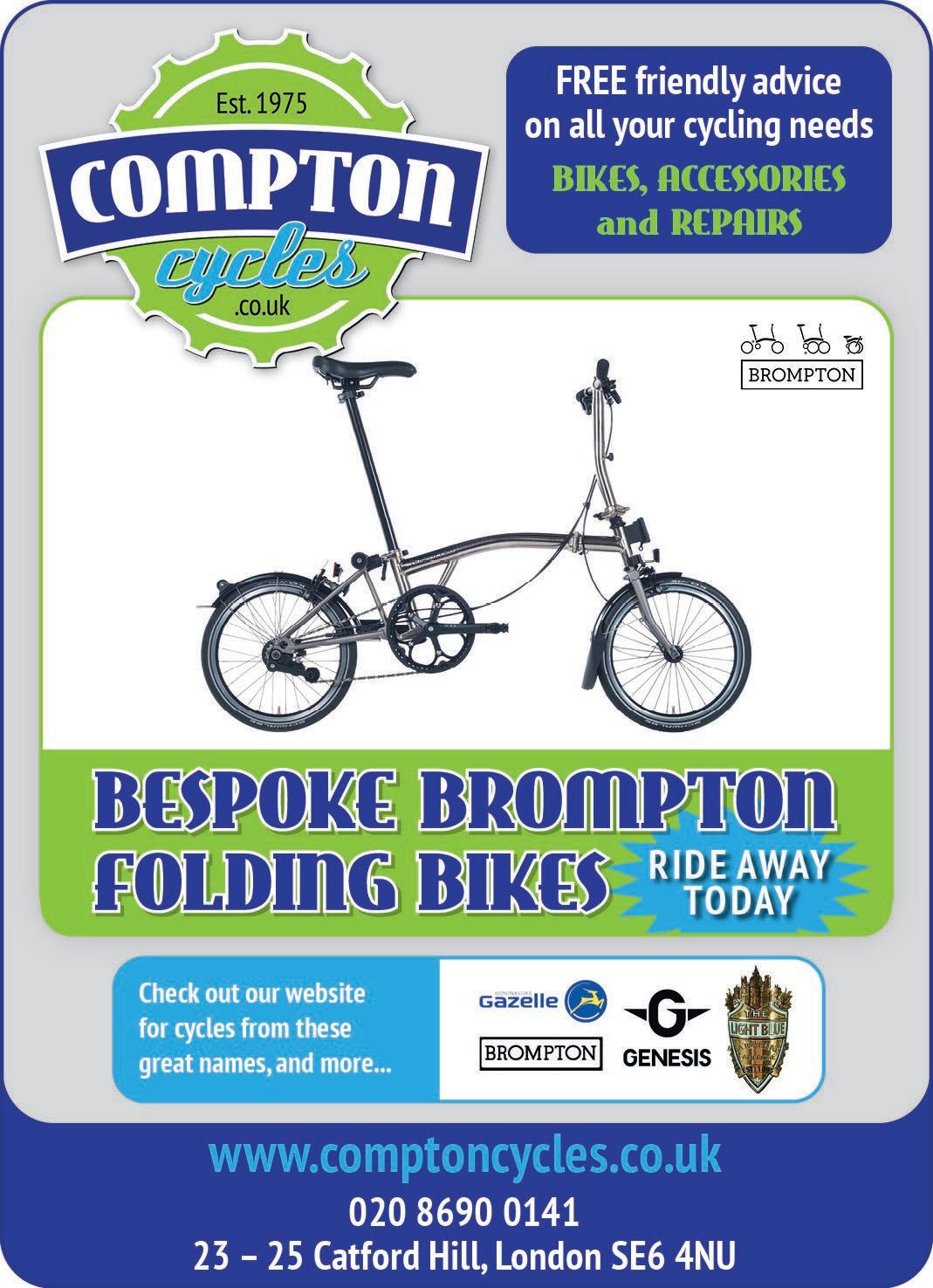
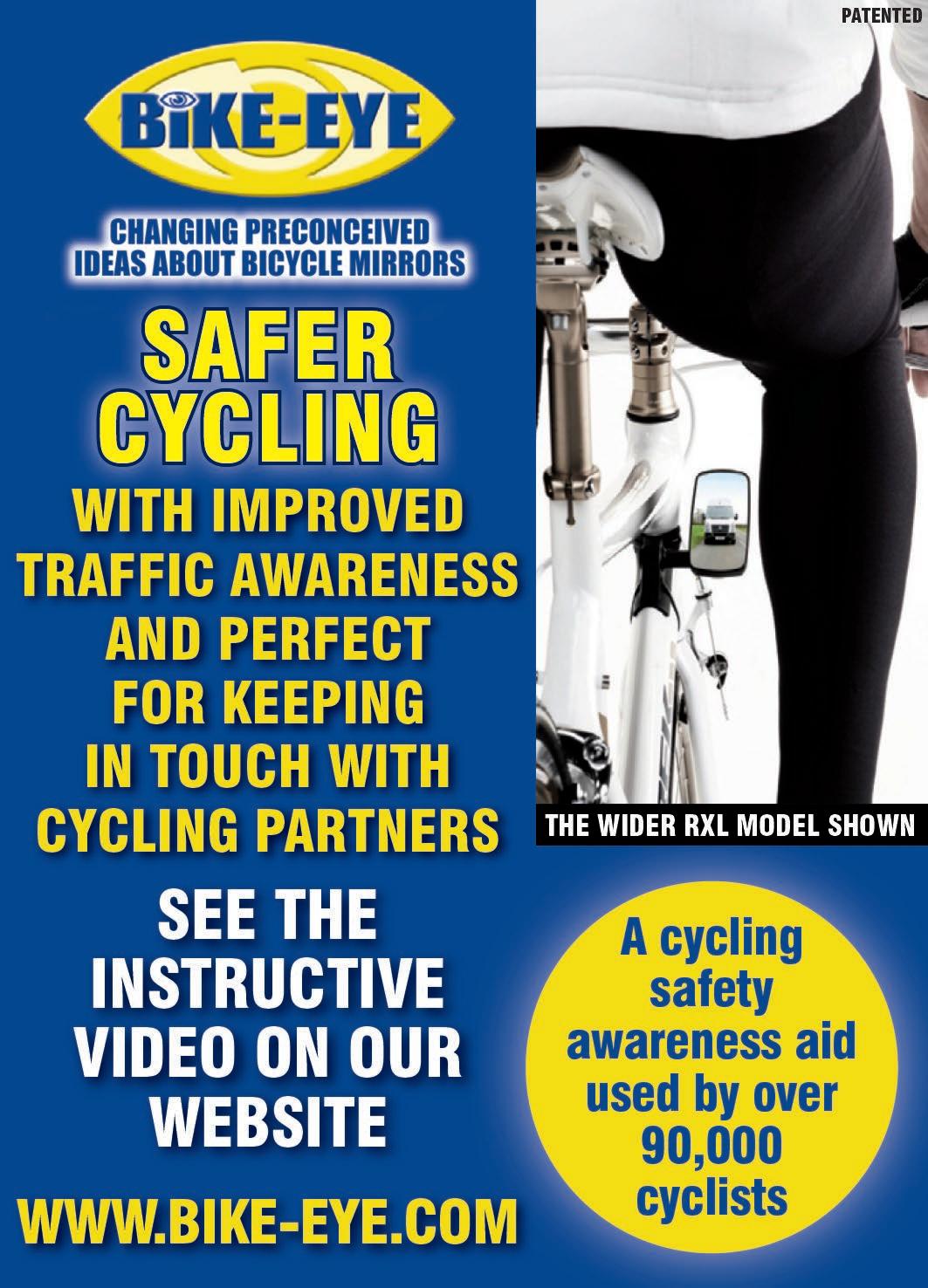
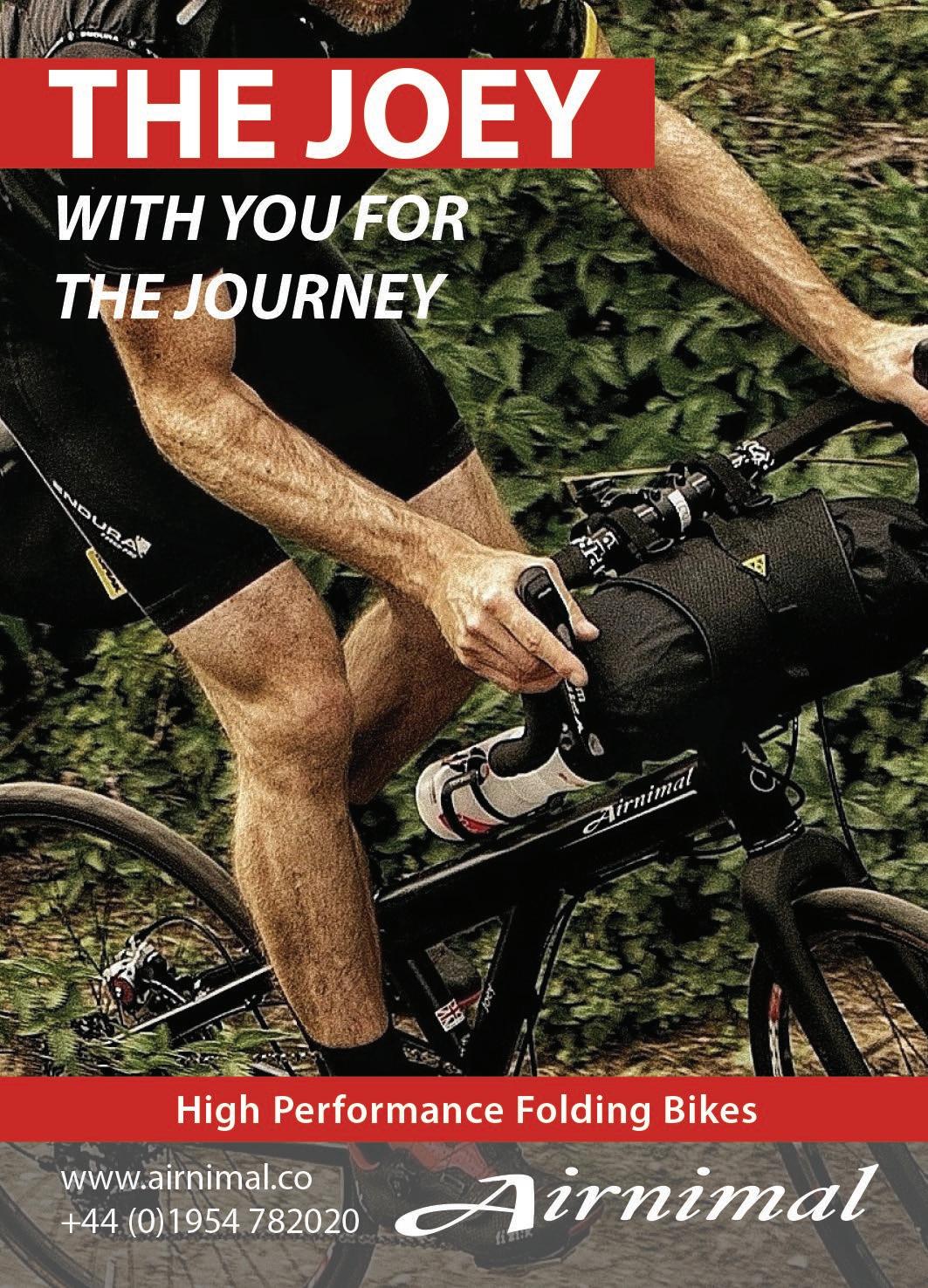

First look Traditional-style road bike with a classy Reynolds 853 frame and ‘actually fine’ rim brakes
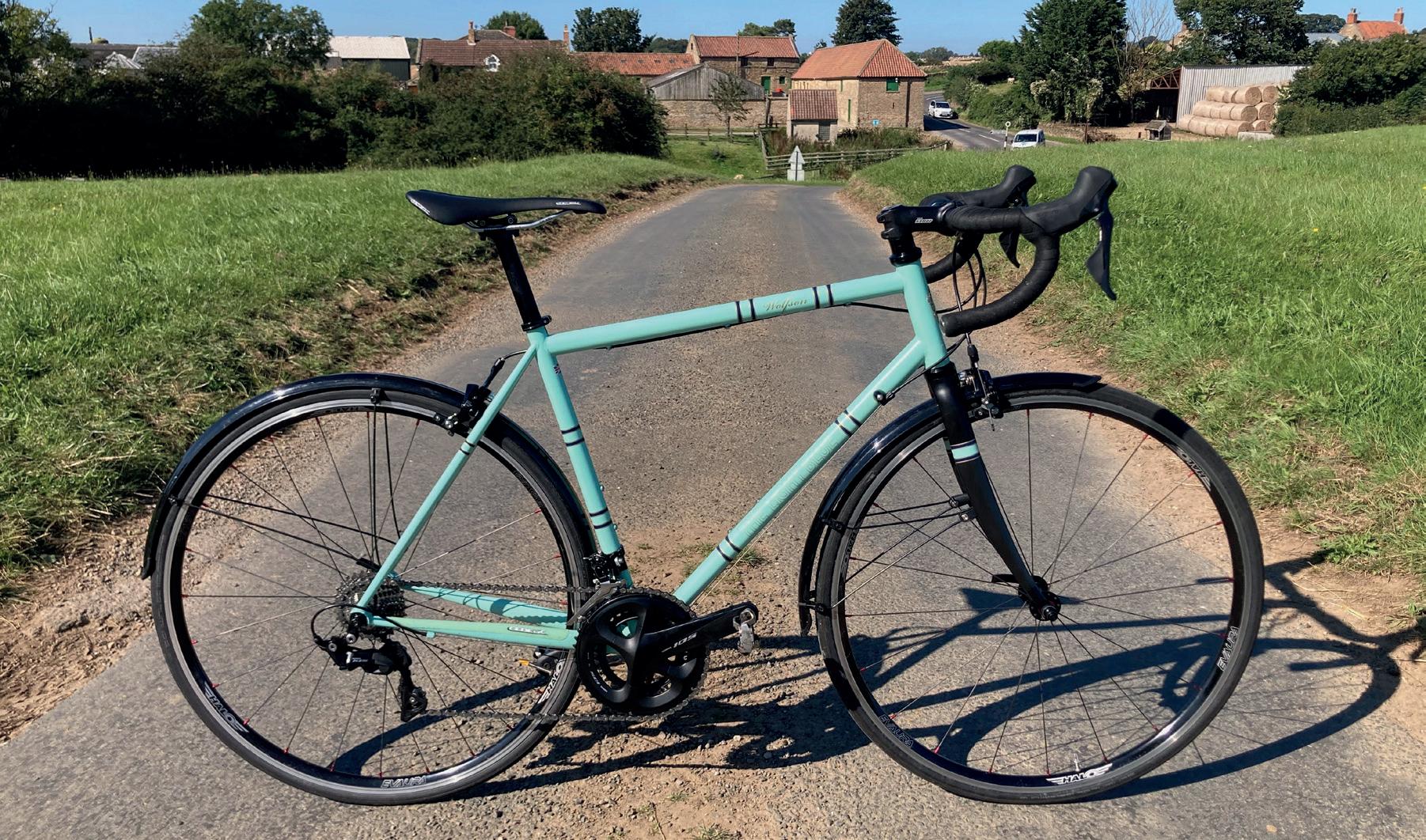
DAN JOYCE

Dan is 177cm tall (5ft 9 1/2in) and weighs 63.5kg (10st). He rides with his local club’s fast group, despite unfashionably high handlebars on all his bikes
Steel or carbon? Rim brakes or discs? Dan Joyce tests two very different £2,000 road bikes from Light Blue and Ribble
An endurance road bike is essentially an audax bike with marketing glitter. It’s a road bike designed not for racing but for efficient and comfortable mile eating – sportives, club rides, winter training, maybe long-distance commuting. Such bikes ran 25mm or 28mm tyres before they were adopted by racers, with room for mudguards to boot. Gears may (should!) go lower, and the handlebar may be higher so you’re not forced into an uncomfortable racing crouch.
Many endurance road bikes are nevertheless too racy for my tastes: a steeper-than-optimal seat tube angle tips you forward onto a handlebar that’s still too low, due to a shortish head tube and a carbon or aluminium fork steerer that can’t be stacked with spacers… To address this, I often choose the next frame size up. This raises the handlebar (taller head tube) and also gives more toe room (longer front centres). Sliding the saddle back, if necessary, makes the effective seat tube angle shallower, while a shorter stem fixes what would be an overlong reach to the handlebar.
That’s why the Ribble in this test is a Large rather than the Medium I ‘should’ be riding. And
it’s why the stems are right at the top of the fork steerers in the photos. You have to be able to get the contact points where you want on a bike you’ll pedal for 50, 100 miles or more. It’s way more important the frame material or brake type. As it happens, frame material and brakes are two of the key differences between the bikes on test. The Light Blue Wolfson 105 R7000 has a steel frame, with rim brakes that are deep enough to clear mudguards, like the audax bikes of old. The Ribble Endurance SL Disc Sport has chunky and angular carbon frameset and hydraulic disc brakes, like a lot of contemporary race bikes, but it still takes mudguards.
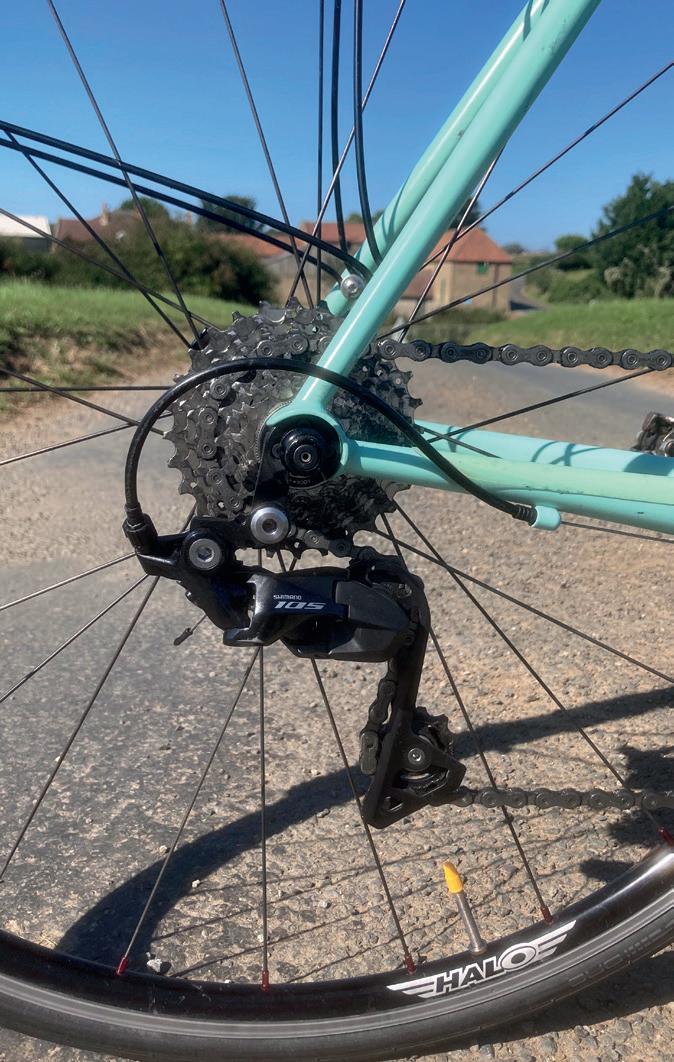
Carbon fibre has a better strength-to-weight ratio but you can’t beat a skinny-tubed steel frame for aesthetics, especially when nicely painted. The Light Blue’s frame is in fact relatively light; the main triangle is Reynolds 853 and the stays are 725. This Medium frame is 1.7kg and the whole bike weighs less than the disc-braked Ribble. The Light Blue’s top tube is long for a mediumsized frame, which means the front-centres
distance is also longer – no toe overlap for me, although I did have to swap the 100mm stem fitted for an 80mm one. The down tube is biaxially ovalised to increase lateral stiffness at the bottom bracket and to reinforce it at the head tube. Dropouts are quick release, which still works fine for road bikes, particularly for lighter riders who don’t mash big gears.
I’m not keen on the Light Blue’s MTB-style full cable housing under the top tube; cable stops and bare cable here would look better. I’d prefer a metal head badge, too. But the other details are spot on. The mudguard mounts are hidden on the inside of the stays – as they are on the fork blades – for a neater look if you go without. And the frame maximises the room available under 57mm-drop callipers, with the blocks sitting in the bottom of the slots.
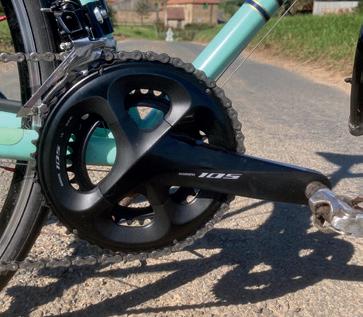
Space is tighter under the crown of the carbon fork. A mudguard does fit over the 25mm tyre but only just, and it needed careful adjustment to avoid rubbing. While carbon forks are ubiquitous on road bikes, I’d prefer a lugged steel fork here, similar to the one on Light Blue’s retro-style St John. It would be simpler to get the brake drop just right than with an off-the-peg carbon fork, and the ride could be more compliant;
LIGHT BLUE WOLFSON 105 R7000
Price: £1,984.99 as tested (frameset £899.99).
Sizes: S, S/M, M (tested), M/L, L.
you can see a lightweight steel fork’s tips moving over rough chipseal.
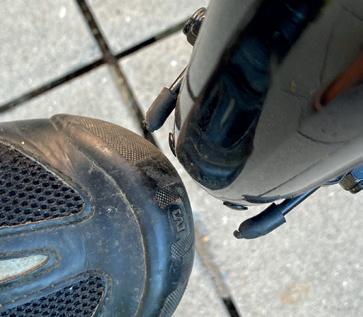
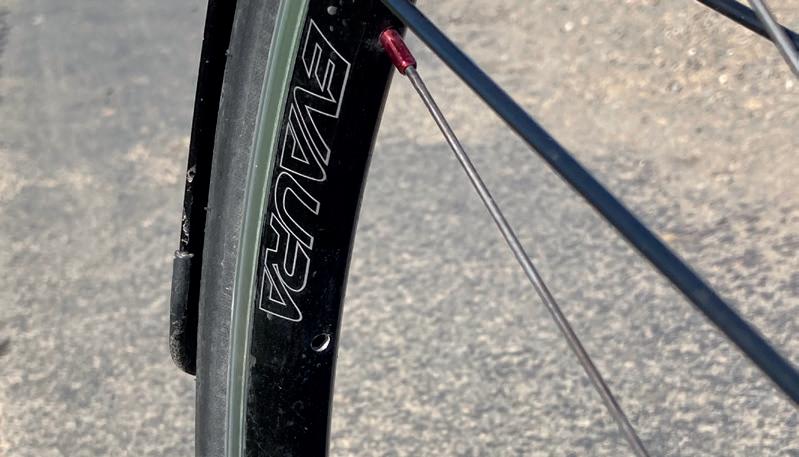
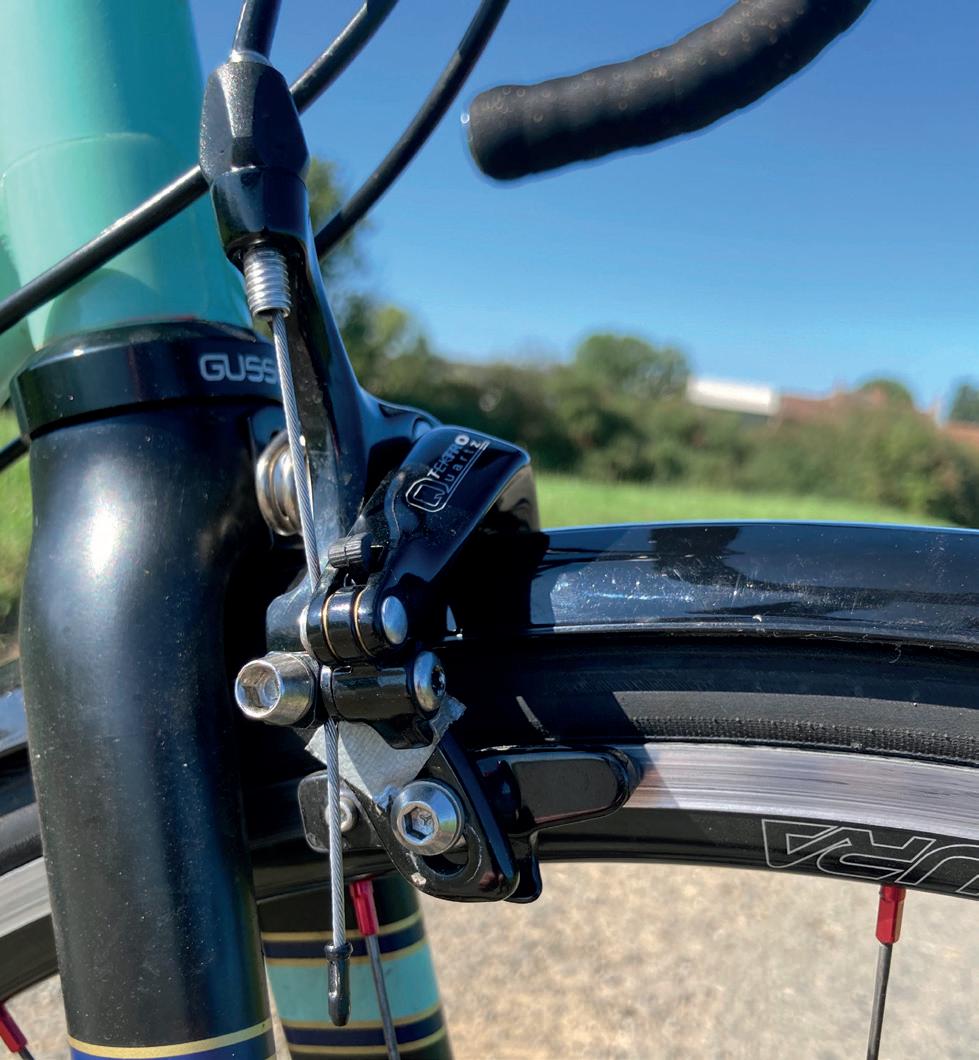
Ribble’s Endurance range includes steel, aluminium and titanium frames as well as carbon fibre, with a variety of specifications and brake types. The SL Disc Sport is the entry-level carbon model with discs. It feels a bit racier than the Light Blue. The frameset has prominent aero features: the down tube and seat tube are truncated aerofoils; the fork blades are aero; the seatstays have been dropped lower; cables are routed internally. Ribble’s website makes much of these improved aerodynamics. For an endurance road bike, however, I’d call them marginal gains.
The frame angles are within half a degree of the Light Blue’s, but size for size it has a shorter head tube and a shorter frontcentres. Upsizing to the Large enabled me to get the handlebar high enough for long-distance comfort. It didn’t quite eliminate toe overlap but would have done so without the front mudguard. Talking of which: clearance for them is no greater than that available with a 57mm sidepull. You’re limited to 25mm tyres with guards or 32mm without. It’s a strange constraint for a disc-brake bike.
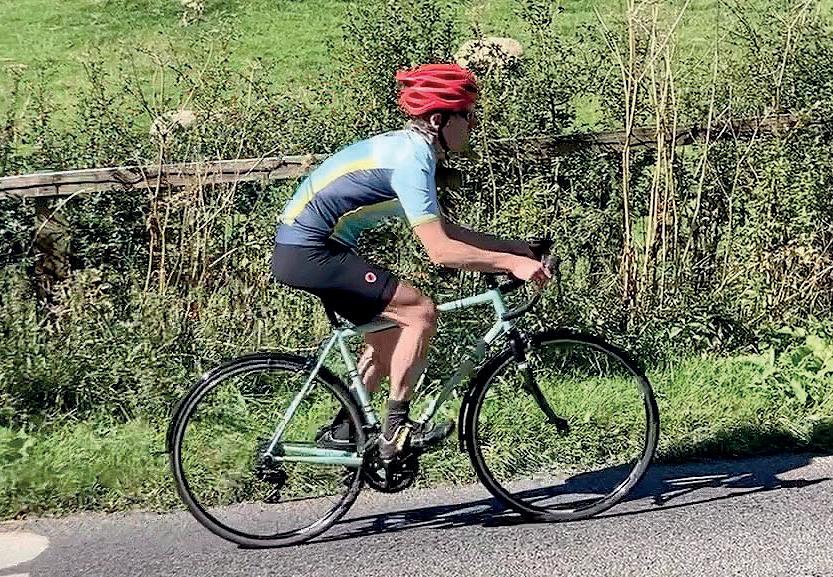
Weight: 9.05kg/ 19.91lb (inc guards, no pedals).
Frame & fork:
TIG-welded, double-butted Reynolds 853 steel main triangle, Reynolds 725 seatstays and chainstays, with 130mm QR dropouts and fittings for mudguard, rear rack and two bottles.
Carbon fork with 1 1/8in aluminium steerer, QR dropouts and mudguard fittings.
Wheels: 25-622

Schwalbe One tyres, Halo Evaura wheels (tubeless-ready 19mm rims with 20 radial spokes on Halo RS front hub and 24 1×/2× spokes on Halo RS 6Drive rear hub.
Transmission: no pedals, 172.5mm
Shimano 105 R7000 crankset with 50-34 chainrings, Shimano SM-BBR60
Hollowtech II bottom bracket, Shimano HG601 11-speed chain, 11-28t Shimano R7000 cassette.
Shimano 105 R7000 STI shifters, Shimano 105 R7000 derailleurs. 22 ratios, 33-122in.
Brakes: Shimano 105 R7000 levers, Tektro Quartz callipers.
Steering & seating: Genetic padded cork tape, 420×31.8mm
Genetic Driser 4-10 handlebar, 100mm×6º Genetic stem, 1 1/8in Gusset threadless headset. Genetic STV saddle, 340×27.2mm Genetic STV seatpost, Allen bolt seatpost clamp.
Equipment: unbranded chrome-plastic mudguards (+£35). ison-distribution.com

I like how it looks and how it rides.
I'd consider buying it as a framesetTop: Both bikes have 11-speed Shimano 105, which I’d choose over the new 12-speed (see p4)

The Ribble has thru-axles, which make sense given the disc brakes. There’s less flex at the axles, and I didn’t get any rotor rub. It’s good to see a creak-free threaded bottom bracket, too.
Ribble’s website has an extensive à la carte menu for speccing your bike. I like this a lot. It’s how I finetuned the fit, by looking at the geometry tables and then choosing a Large frame, 38cm handlebar and 7cm stem. I also took the opportunity to add mudguards and faster-rolling tyres; I don’t want budget training tyres like Continental’s Ultrasport III on a £2,000 bike. There’s less scope to modify the Light Blue, although you can add mudguards (I did) and/or select different wheels.
Brakes are one of the biggest differences between the bikes. The sidepulls of the Light Blue are fine. I had no issues slowing or stopping, even in a downpour. Yet the 105 hydraulic discs of the Ribble are better, providing more powerful braking with less force required at the levers. Whether that’s something that’s nice to have or essential depends on your grip strength and the sort of hills you descend.
Both bikes have decent-rolling 25mm tubed tyres – Schwalbe Pro One for the Light Blue, Continental Grand Prix for
the Ribble – which are plumped up slightly by the bikes’ wide rims. The Halo rims of the Light Blue are tubeless compatible, the Mavic Aksium’s of the Ribble are not. If you want to go tubeless on the Ribble you’ll need to specify Mavic Ksyrium 30 Disc wheels when buying (+£250).
Like many road bike wheels, these ones don’t have many spokes. The Aksiums have 24 front and rear, both tangentially spoked because of the braking torque. The Halo’s front wheel has 20 radial spokes, the rear 24 tangential, with 16 on the drive side and eight on the non-drive side. That balances the spoke tension without requiring super-tight drive-side spokes.
Sadly, one of the Light Blue’s non-drive spokes snapped during the end-of-test photoshoot. The base of the aluminium nipple sheared and it pulled through the rim, still attached to the spoke. With only seven others on the same side, it buckled badly. Any component can fail, of course, but this one surprised me. At 10 stone I almost never break spokes, and the tension on the other non-drive spokes wasn't excessive. Four more spokes per wheel would make me happier.
Both bikes have Shimano 105 drivetrains with a 50-34 double and an 11-speed cassette. The gear range of the Ribble is
Price: £2,124 as tested, plus £40 delivery (frameset £1,399.99+).
Sizes: XXS, XS, S, M, L (tested), XL.
Weight: 9.45kg/ 20.79lb (inc guards, no pedals).

Frame & fork: Toray T1000/T800 carbon fibre frame with 12×142mm thru-axle and fittings for mudguard and two bottles. Full carbon fibre fork with tapered steerer, 12×100mm thru-axle, mudguard fittings.
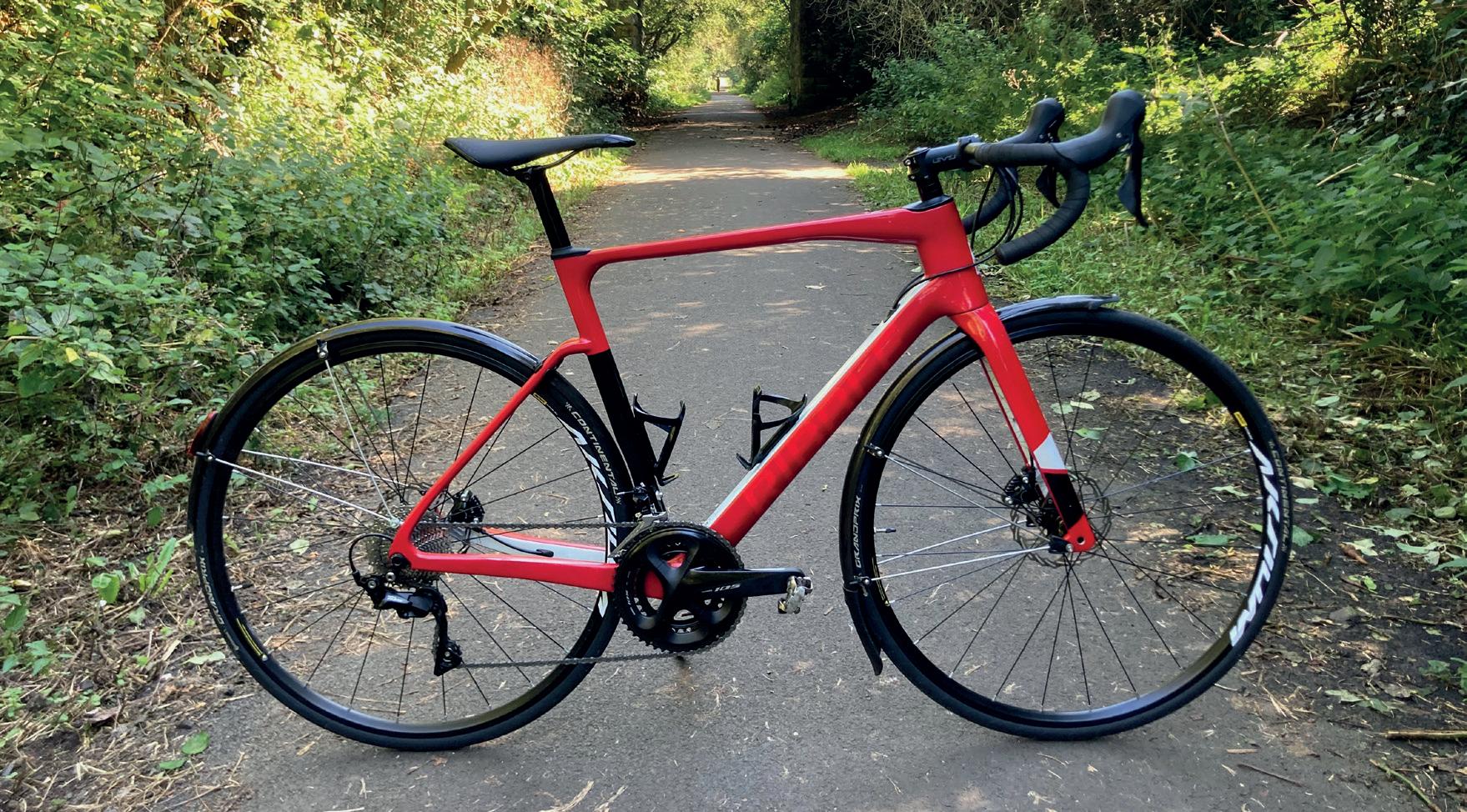
Wheels: 25-622
Continental Grand Prix tyres (+£50 upgrade), Mavic

Aksium CenterLock Disc wheels (17mm Aksium rims, Mavic hubs, 24×2 straight-pull spokes).

Transmission: no
pedals, 172.5mm
Shimano 105 R7000 crankset with 50-34 chainrings, Shimano SM-BBR60
Hollowtech II
bottom bracket, Shimano HG601
11-speed chain, Shimano CS-HG700
11-speed 11-34 cassette. Shimano 105 R7020 11-speed hydraulic STI levers, Shimano 105 R7000 derailleurs (bolt-on front). 22 ratios, 27-122in.
Brakes: Shimano 105 R7020 hydraulic levers, R7070 flat-mount callipers with 160mm Tektro CenterLock rotors. Steering & seating: Level cork bar tape, 380×31.8mm Level 6061 alloy handlebar, 70m×9º Level 6061 alloy stem, Ribble SL headset. Prologo Kappa RS saddle, 390×27/30mm Ribble SL carbon D-shaped seatpost, internal wedge seatpost clamp.
Equipment: SKS P35 Mudguards (+£65), two nylon bottle cages (@ +£5) ribblecycles.co.uk
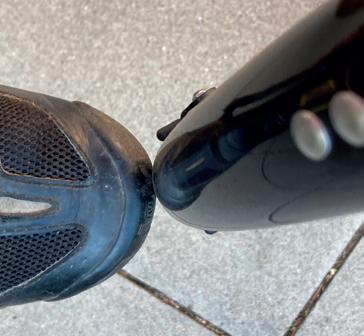
look Carbon road bike with discs and sporty aspirations that’s actually heavier than the steel Wolfson
Its standout features are the groupset and the customisation options

At Cycle, we are proudly independent. There’s no pressure to please advertisers as we’re funded by your membership. Our product reviews aren’t press releases; they’re written by experienced cyclists after thorough testing.
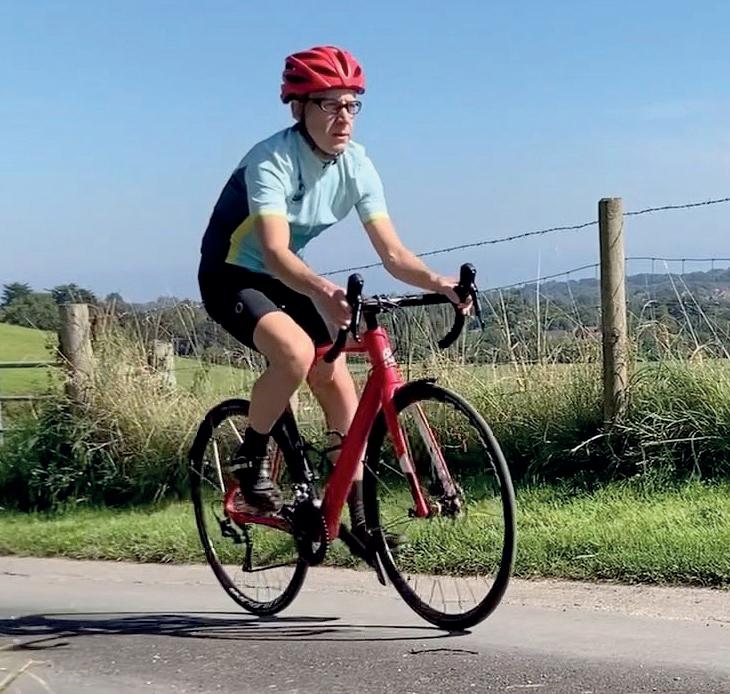

better as I asked for the standard 11-32 cassette to be swapped for an 11-34. The Light Blue has an 11-28, which would make me swear towards the end of a hilly century ride.
Seatposts are seldom a key factor in bike tests but I disliked the Ribble’s. The single-bolt saddle clamp needed a tremendous amount of torque to stop the nose kicking up towards the sky if I went over a bump. A fore-and-aft twobolt clamp would be better, both for setting the saddle angle and keeping it in place. Swapping the post is complicated by the fact that the Ribble's is a D-shaped truncated aerofoil.
The Light Blue has a Driser 4-10 handlebar, so called for the 4º flare on the drops and the 10mm rise from the stem clamp. It looks odd but does gain you a little front-end height, which I appreciated. I was less keen on the bike’s mudguards. The front is too short and the stay bolts on both bulge prominently toward the tyres, compromising clearance.
Much is made of feel of different materials – the vibration damping effect of carbon, the springy resilience of steel and so on. The Ribble’s monolithic carbon frame is surely stiffer at the bottom bracket, while the skinnier stays of the Light Blue should be slightly more forgiving on long rides. But I can’t say I noticed significant real-world differences. Both bikes were stiff enough through the cranks for my modest power. Both were sufficiently comfortable, having similar tyres, similar geometries (M Light Blue vs L Ribble) and, after my tweaks, essentially the same riding position.
SPA CYCLES TITANIUM
AUDAX 105 R7000 £1,495
Carbon-forked titanium audax bike with 72º/72.5º head/seat angles, equipped with 11-speed 105. Will fit 28mm tyres and mudguards under its brake callipers. Currently on offer. spacycles.co.uk
Aside from the brakes, the biggest difference in how the bikes rode was their aerodynamics. The Ribble was faster downhill and into the wind. Those truncated aerofoils doubtless helped but I think it was mostly due to the different handlebars. The Light Blue has a 42cm bar; the Ribble has a 38cm bar that I selected from the customisation options. A 38cm bar fits me better and tucks my shoulders in, improving the aerodynamics of what is by far the least aero thing on the bike: me.
I’d have preferred slightly slacker frame angles for both bikes. Shifting weight from your hands to your sit bones (slacker seat angle) eases the upper-body strain of long rides, while a bike that holds a straight line more easily (slacker head angle, more trail) is nice to have when you’re tired. I'd also have liked wider tyres (28mm or 32mm), for a plusher ride and better traction on descents and wet roads.
TREK DOMANE AL 5 GEN 4 £2,150
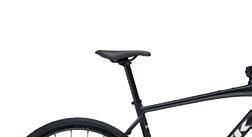



Gravel-influenced aluminium road bike with a carbon fork, 12-speed 105, hydraulic discs and clearance for 38mm tyres and mudguards. trekbikes.com
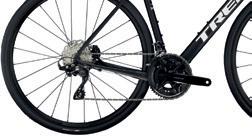

As a full carbon bike with 105 and hydraulic brakes, the Ribble Endurance SL Disc is good value. Its standout features are the groupset and the customisation options. Heavier riders with a punchier pedalling style may appreciate its stiff (and aero) carbon frame but I’d rather have bigger clearances and less racy angles –even if that meant a ‘downgrade’ to aluminium. The Light Blue Wolfson 105 has a well-designed Reynolds 853/725 frame. I like how it looks and how it rides, and would consider buying it as a frameset. As a complete bike, I’d hesitate. The brakes are fine but I had an obvious issue with the wheels, and would also change the cassette, stem, handlebar, mudguards and maybe the fork – all of which would ramp up the cost.

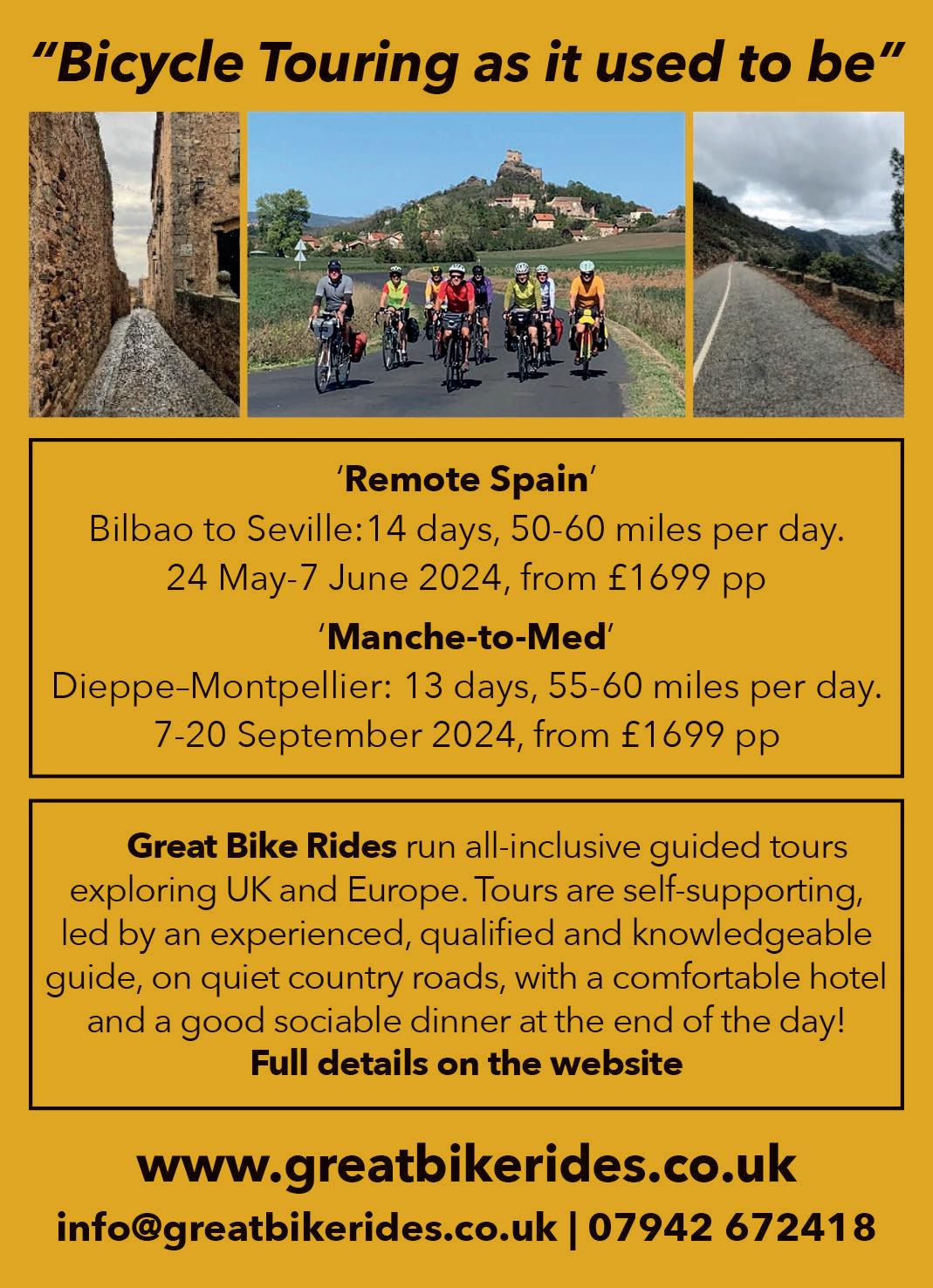

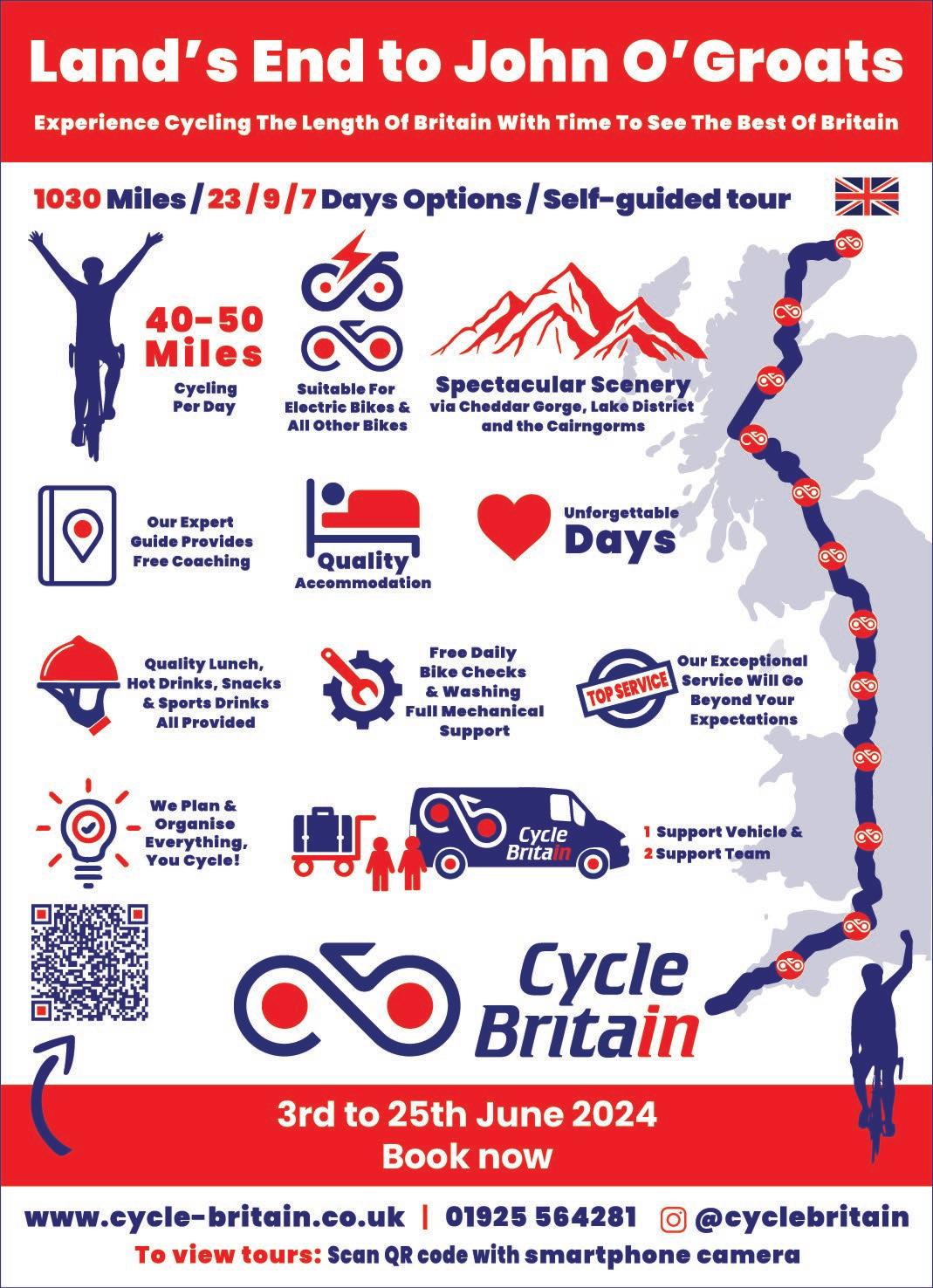
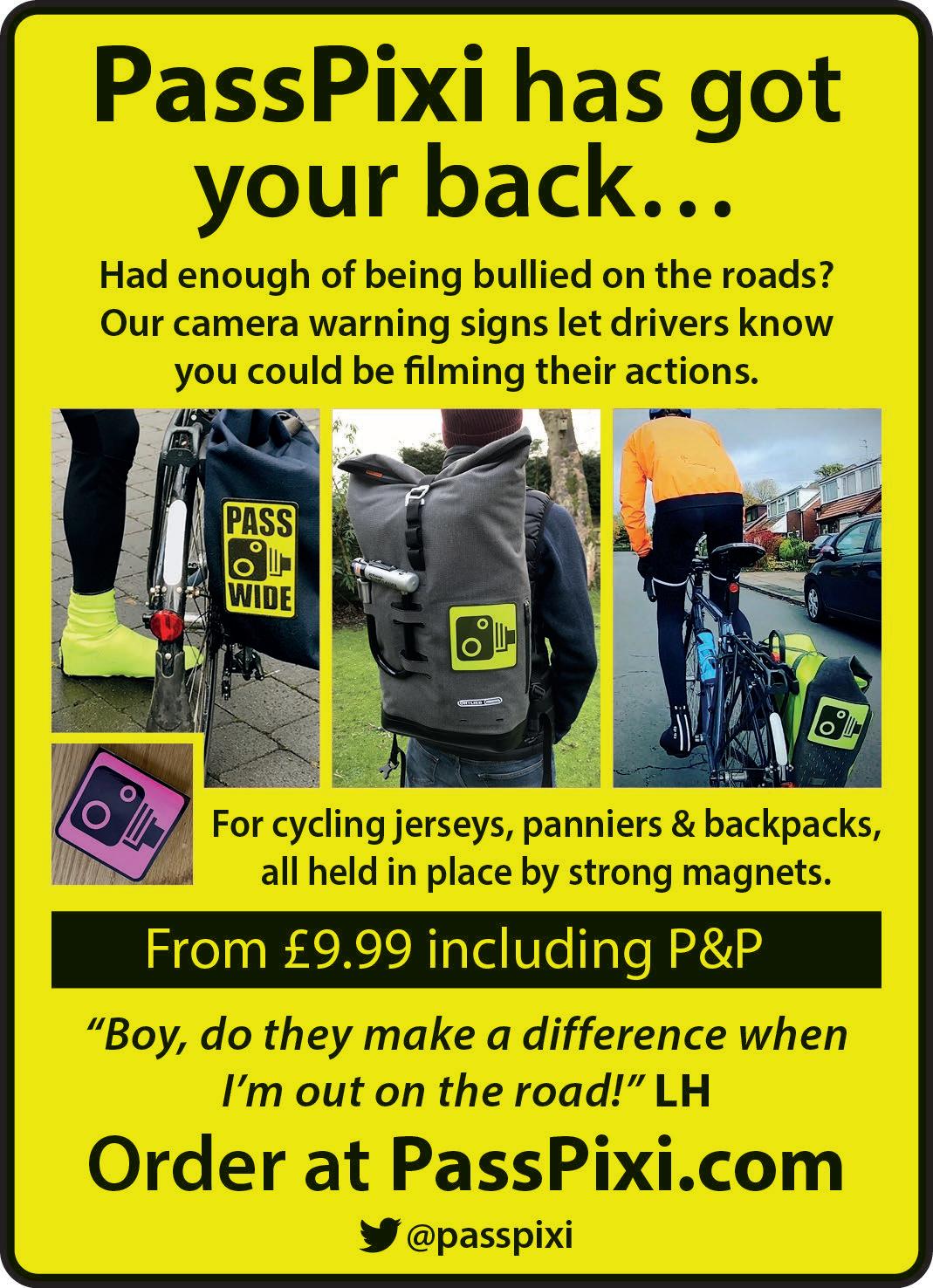
Price: £1,349.99.
Sizes: XS, S, M (tested), L, XL.
Weight: 15kg (33lb).
Frame and fork:
TIG-welded
When
Withers reviews a robust, flat-bar trekking bike that eschews 700C wheels
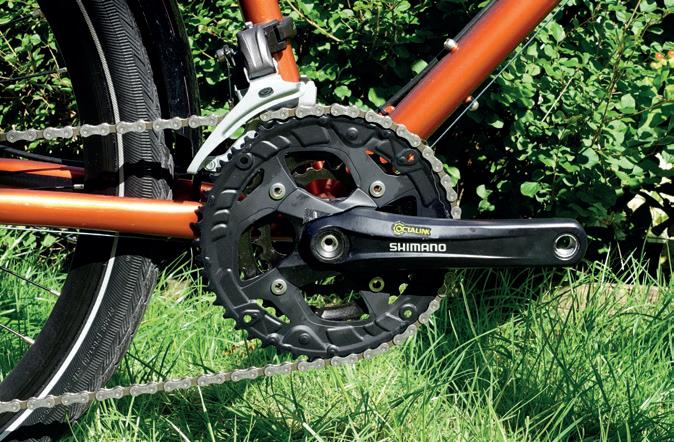
Ridgeback's UK-designed, Taiwanese-made Reynolds 520 steel tourer lives up to its Expedition name. Out of the box this is ready to take you far and wide without the need to add anything other than you, your map (or GPS – this is 2023) and your sense of adventure…
If you’re travelling fully laden you may (I wouldn’t) want a greater capacity than 18kg from its rear rack, but that's about the only minor criticism. You're certainly not short of options for carrying bottles or frame bags on the frame and fork, with top tube ‘bento box’ bosses the only absentee. To maximise strength, the neatly TIG-welded steel frame has an open gusset under the down tube where it joins the head tube.
Those 26in wheels might seem retro but you’ll be able to buy replacement tyres all over the world, and Schwalbe’s Marathons are tough and have effective reflective strips. Triple chainsets are also rarely seen today but yes, they exist, and the Ridgeback's 26-tooth inner ring pairs well with the cassette’s 36t big sprocket for a
GENESIS TOUR DE FER 10 FLAT BAR
£1,299.99
Very similar to the Ridgeback but with 700C wheels, marginally narrower tyres and a slightly less expedition-flavoured build. genesisbikes.co.uk

19in bottom gear, which is what you need when crawling up hills with fully loaded bags. The 27 gear ratios mean you can maintain a consistent cadence for kneefriendly riding, regardless of the terrain.
I’m a fan of forward-facing bar ends on flat-bar bikes, and while the Expedition's forward extensions may only be 6cm, this is enough to give you a variety of handholds, and the grip’s flatter outer section offers good support for your palms. The wide riser bar provides excellent stability and the shortish riser stem ensures an upright and back-friendly
SPA CYCLES 725
TREKKING BAR STEEL
TOURER
£1,075
Reynolds 725 frame with Deore V-brakes, BBB trekking bar, quality handbuilt wheels (26in for the smallest size) and your choice of tyres and gear ratios. spacycles.co.uk
Reynolds 520 steel, two sets of triple bosses, two pairs of double bosses, rear kickstand plate, mudguard/rack mounts, pump peg, nurse’s lock bosses. Chromoly steel fork with mudguard/ rack mounts.
Wheels: Jalco DM25 rims, 36 14g spokes, Shimano M475 hubs, 47-559 Schwalbe Marathon tyres.
Transmission: FPD road pedals, Shimano FC T-4010 48-36-26 chainset, Shimano BB-ES300
bottom bracket, Shimano HG chain, Shimano CS-HG400 11-36 cassette. Shimano Alivio shifters and front and rear derailleurs. 27 ratios: 19-112in.
Braking: Shimano Deore levers, Promax DSK-300 cable discs, 160mm rotors.
Steering & seating: Ridgeback grips with bar ends, 620mm bar, 90mm Ridgeback stem, Prestine PT-1767D headset. Ridgeback Custom saddle, 27.2mm seatpost.
Equipment: Front and rear Sunnywheel 55mm mudguards, 18kgcapacity rear rack. ridgeback.co.uk
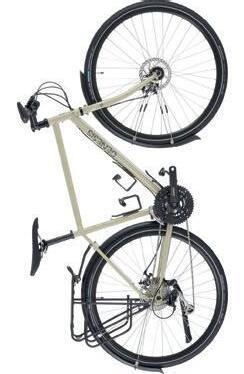


riding position that’s ideal for big days out. Cable disc brakes may lack the light action and supreme power of hydraulic setups, but the dual-piston Promax brakes proved easily powerful enough while laden and with very good control, and I'd personally prefer these to hydraulics for fettling in faraway foreign lands. The full-length mudguards have mudflaps, with the front’s stays neatly shaped to steer clear of the disc brakes. They also have patented ‘safety pop-offs’ to prevent wheel lock should something get trapped between tyre and ’guard.
Capable long-distance cruiser with well-chosen components throughout, including excellent expedition-friendly gearing, tough tyres and a comfortable handlebar setup. The mountain bike style 26inwheel tourer lives on.
it comes to tourers, 26 ain’t dead. Simon
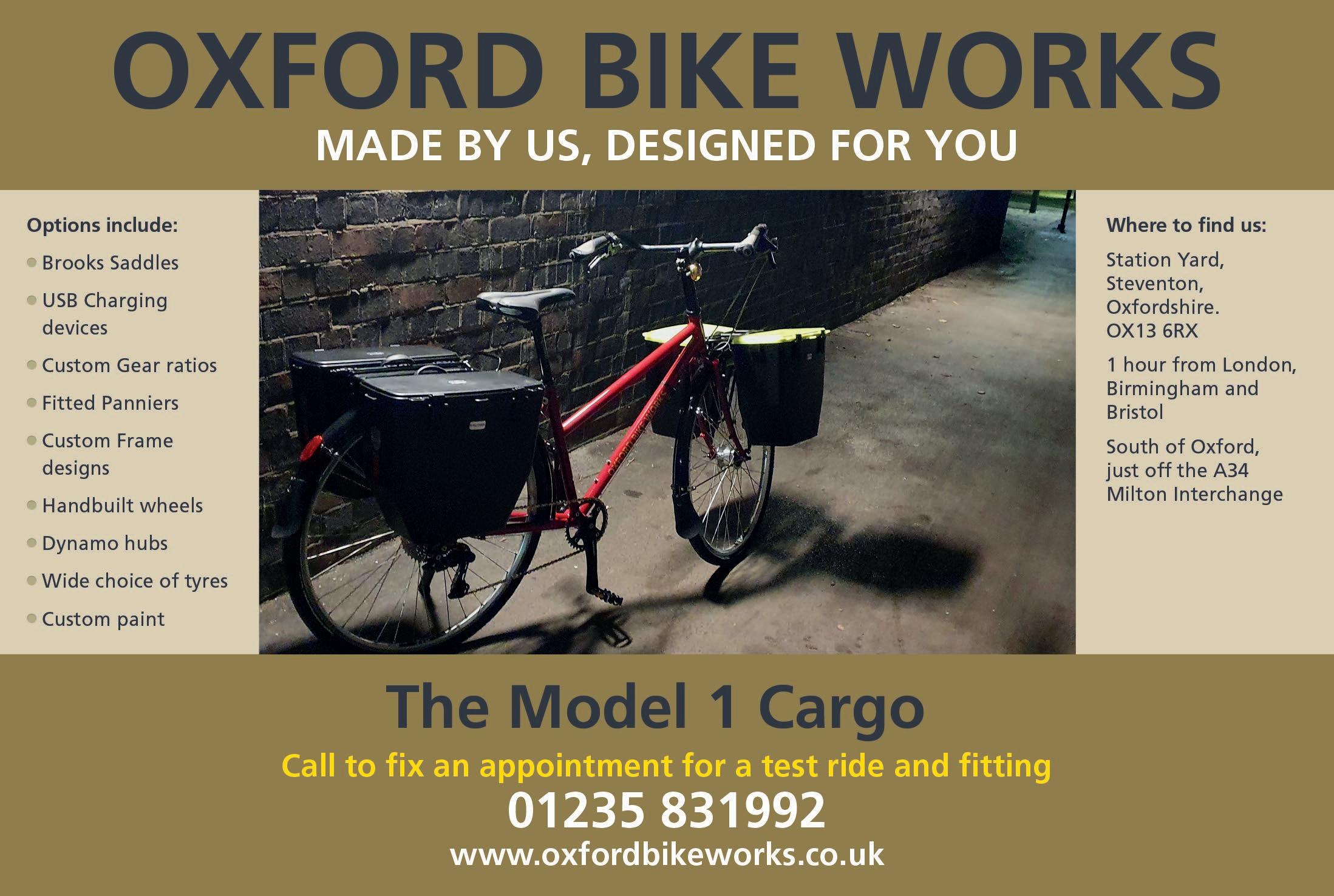
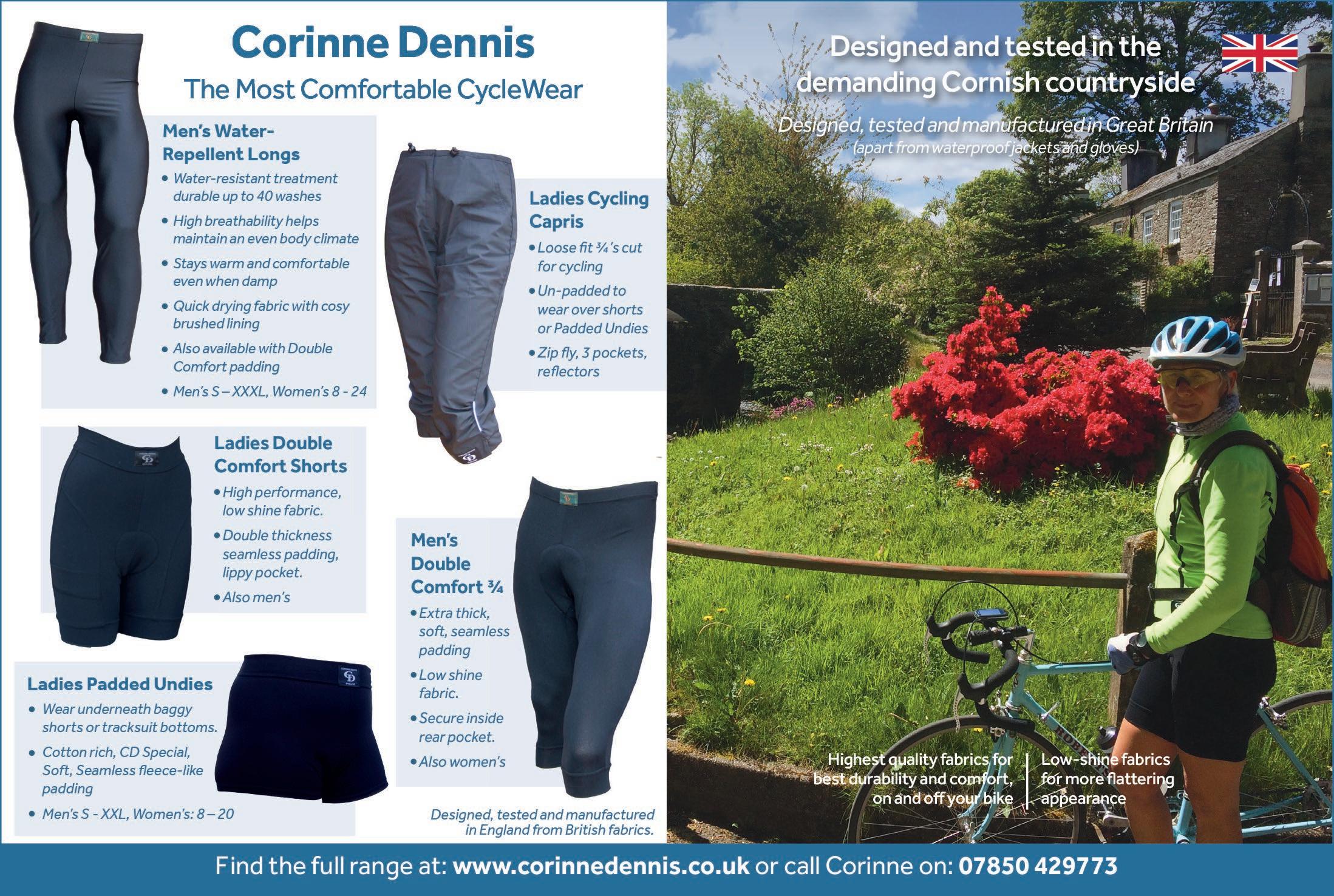
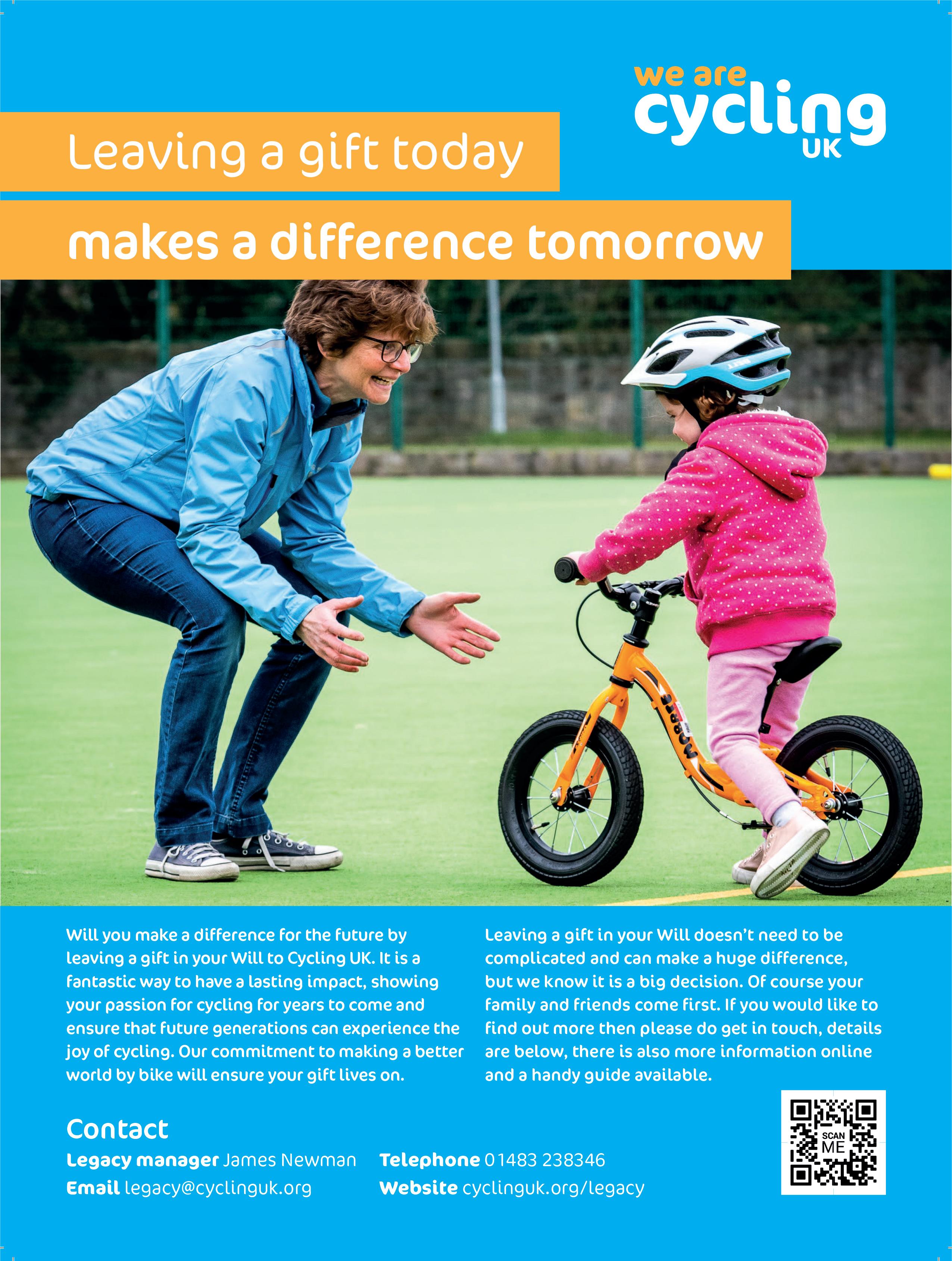
Bumbags were what many off-road riders use before hydration packs appeared. Now they’re back. Katherine Moore tests four

Hip packs, bumbags or (for Americans) fanny packs – whatever you call them, they’re gaining popularity among gravel riders, mountain bikers and bikepackers. More compact and lightweight than a backpack and offering more storage than many smaller on-bike bags, hip packs are being used for day rides and multi-day tours alike.
Most have room to stash your tools and spares, snacks and extra layers. This means you can ride in a technical T-shirt rather than needing a cycling jersey for pocket storage, yet still keep your valuables on your person rather than on the bike, which can be handy when going into shops and cafés.
Many mountain bikers have made the switch from rucksacks to hip packs as they offer a more lightweight and compact alternative, which can also help keep you cooler during the hotter, sweatier summer months.
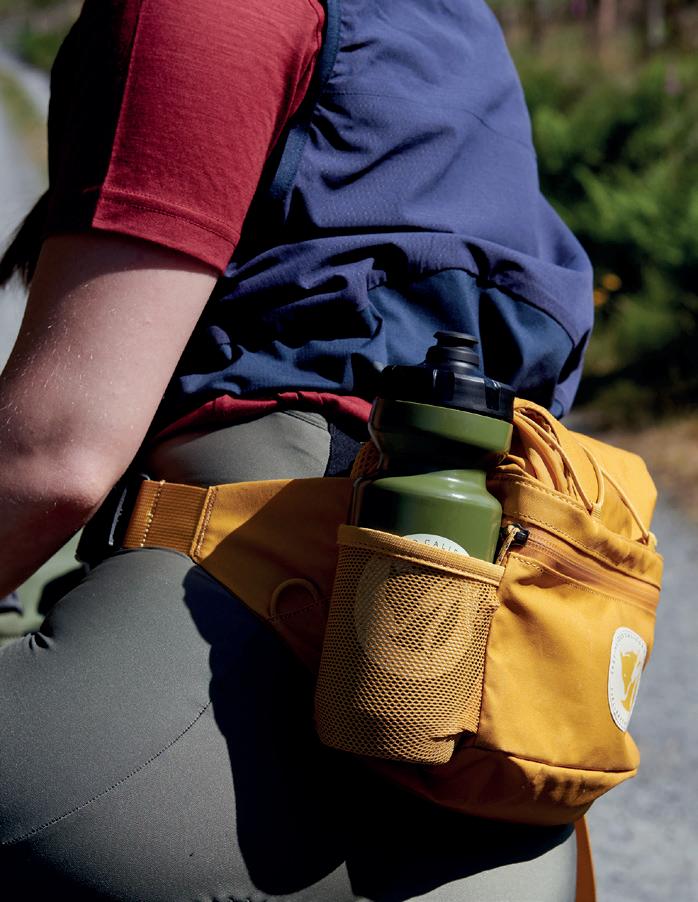
While it can be tempting to opt for the biggest hip pack possible, there’s a balance to be had. Overloading a hip pack can put extra strain on your back, just as carrying a heavy rucksack might. If you plan on riding with a camera, a hip pack can be a good place to keep it stowed and safe, and can help to keep it dry during rain showers.
At Cycle, we are proudly independent. There’s no pressure to please advertisers as we’re funded by your membership. Our product reviews aren’t press releases; they’re written by experienced cyclists after thorough testing.
It’s wise to try on different options before you buy to see just how comfortable the straps are on your body. Wider straps tend to spread loads more evenly, and padding can also aid comfort.
Ranges from a couple of litres volume to six or more. The best option depends on whether you’re looking for something to store all your gear (tools, spares, snacks and layers) or just a few essentials.
Will you run bottles on your bike, store bottles
in your hip pack or use a hydration bladder and hose? If you’re heading somewhere really hot or remote, you might want to opt for more than one approach.
How durable your hip pack needs to be will depend on whether you ride on road or off, just in summer or year round. Look for waterproof materials and seam taping for the most weatherproof packs.
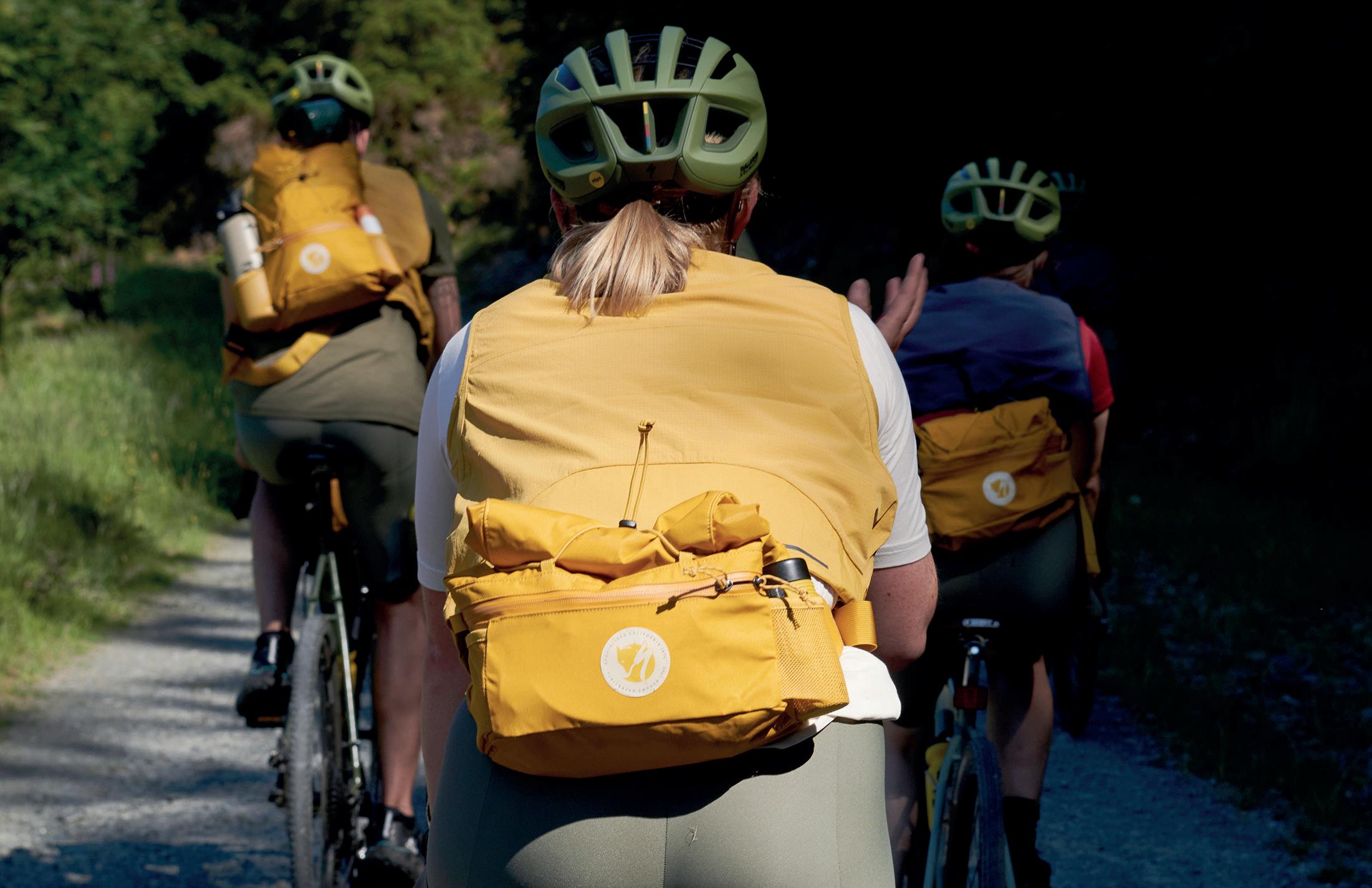
For ultimate comfort, look for options that have ventilation panels built in to avoid a sweaty lower back.
£39.99, alpkit.com
AT HALF THE PRICE of the next cheapest bag on test, the brightly coloured Vora 6 stands out as a great value offering. You get all the features of more highly priced hip packs: multiple compartments and mesh dividers, water bottle holders, compression straps, a key clip and routing for a 2-litre hydration bladder and hose. The hip pack itself has an enormous 6-litre capacity, giving more storage space than needed for most day rides. While the mesh back and hip panels offer good breathability, and generous straps enable the bag to be used by riders of most sizes, the shape of the hip strap isn’t the most comfortable for those with a smaller frame.




£84.99, evocsports.com
DON’T BE FOOLED by the smaller, 3-litre capacity: this is a Tardis of hip packs that’s loaded with cool features. The main compartment can easily hold all your spares, snacks and a pump, with the padded and highly ventilated back panel keeping items from digging into your back. There’s plenty more storage, including zipped and mesh pockets on the front zip-down panel, two bottle holders and zipped pockets on either hip panel, plus an internal divider and port for a hydration bladder and hose. The padded hip strap and buckle strap give a comfortable and stable fit. With plentiful storage, a comfortable fit and multiple hydration options, it’s a great alternative to riding with a backpack.


£80, apidura.com
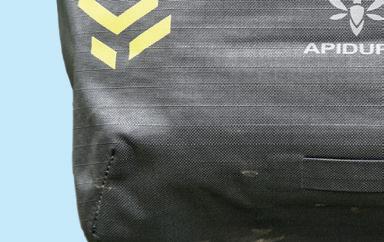

WHILE APIDURA’S OFFERING may be the slimmest on test with a 2.5-litre capacity, there’s still plenty of room for all your ride essentials from tools to snacks, though you may have to stow a jacket elsewhere. The wide hip strap is incredibly comfy, with a little stretch and a Velcro fixing secured with a compression strap. Apidura’s signature dark grey fabric has been seam taped for enhanced weatherproofing. Inside, a key clip is handy, and there’s a separate, padded pocket for valuables with a nifty chain-link-storage zipper pull. For comfortable storage on longer rides, the minimalist yet highly functional and durable Backcountry hip pack is hard to beat.

For a minimalist approach that stands up to the elements, the Apidura Backcountry hip pack takes some beating. You get all the bells and whistles with the Evoc Pro 3, which gives more storage than you’d expect in a sturdy, well-designed package.
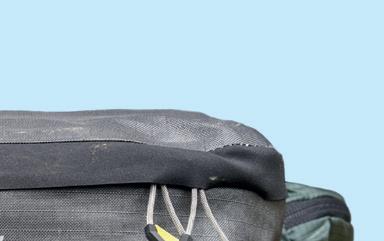
While the Alpkit Vora 6 seemed like a really promising, good-value proposition, unfortunately the fit lets it down. If you’re considering this one, give it a try first in one of Alpkit’s stores to see if it suits you.

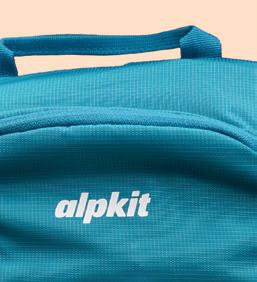
Finally, the trendy Fjallraven × Specialized hip pack is a great middle ground for adventurous day rides as it also gives you the option to expand capacity, which will no doubt be popular with both bikepackers and postride supermarket raiders alike.
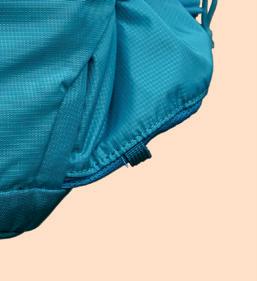
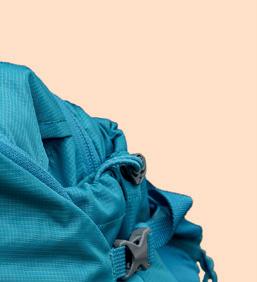
More online
For more reviews of bikes, kit and components, as well as how-to guides, visit... cyclinguk.org/advice
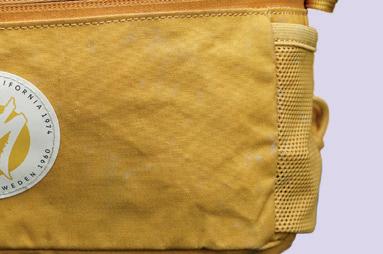
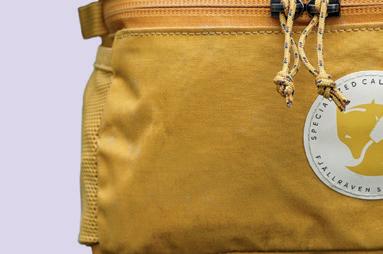

£105, fjallraven.com

EXPANDING FROM A 4.5-litre capacity up to 11.5 litres, the top section of the hip pack can be unrolled and shoulder straps revealed to create a lightweight backpack. The cheerful yellow hip pack boasts an external bottle pocket on either side, as well as two internal mesh pockets to help keep your tools and snacks stowed neatly. A top bungee keeps the upper secured, and can also be used to carry a jacket. The comfortable fit is completed with an asymmetric buckle strap and a fairly breathable padded back panel. This clever, dual-purpose design will no doubt be a big hit with bikepackers stocking up on food before heading to camp.


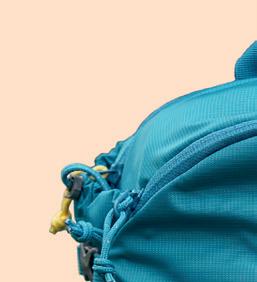
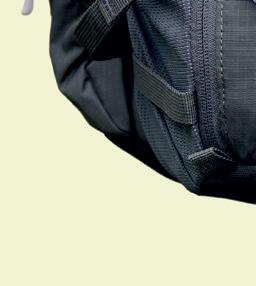
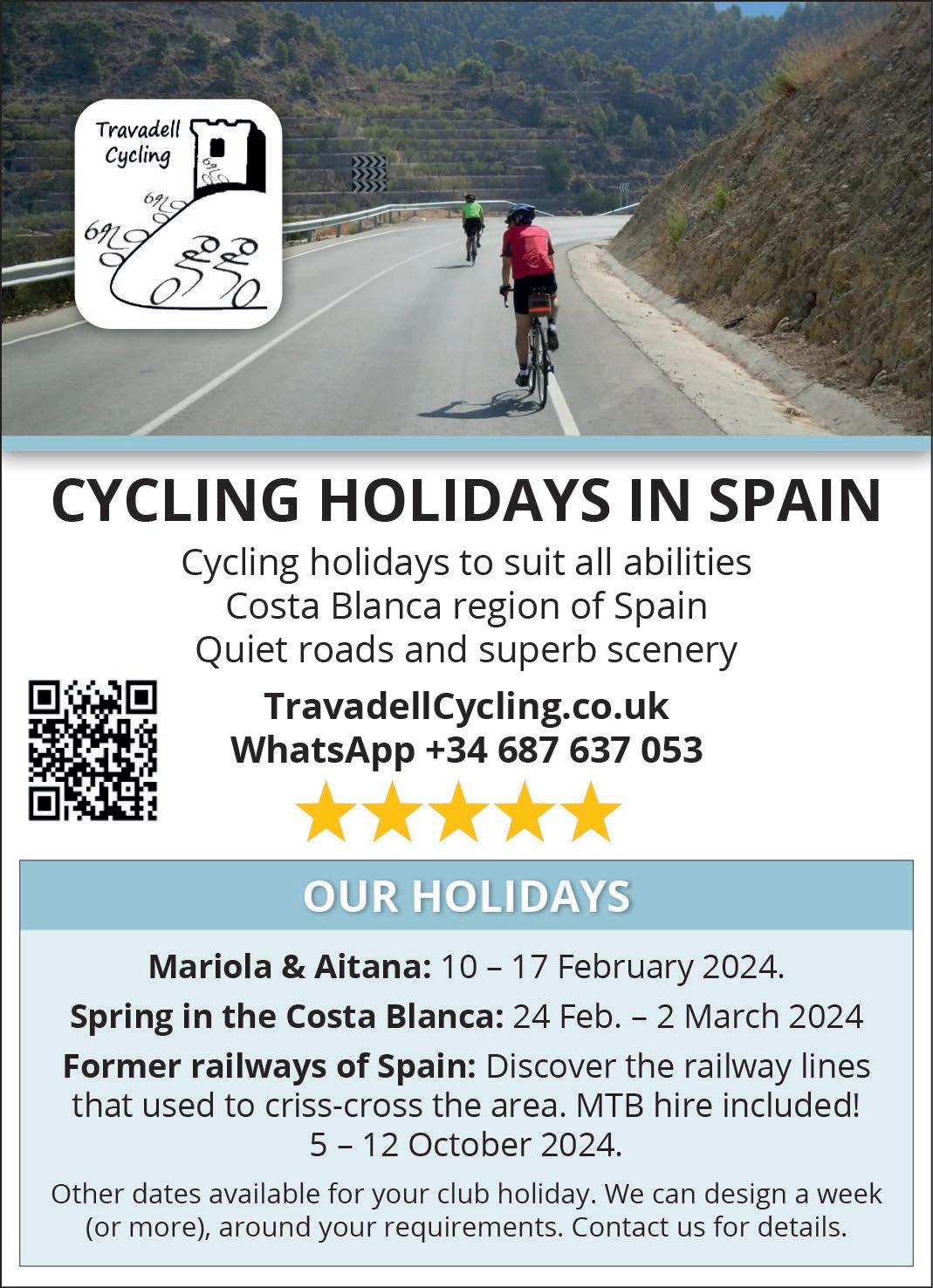

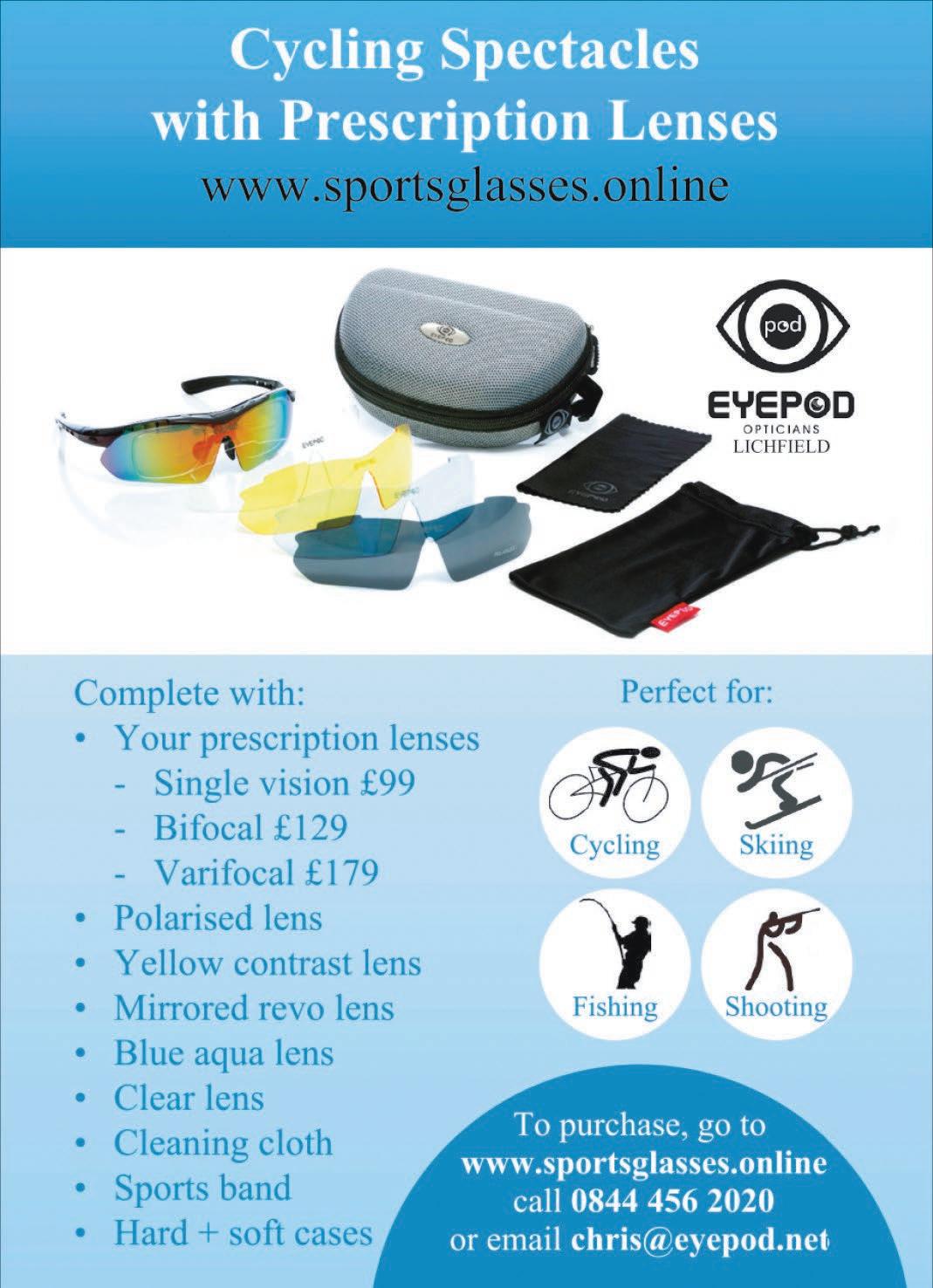
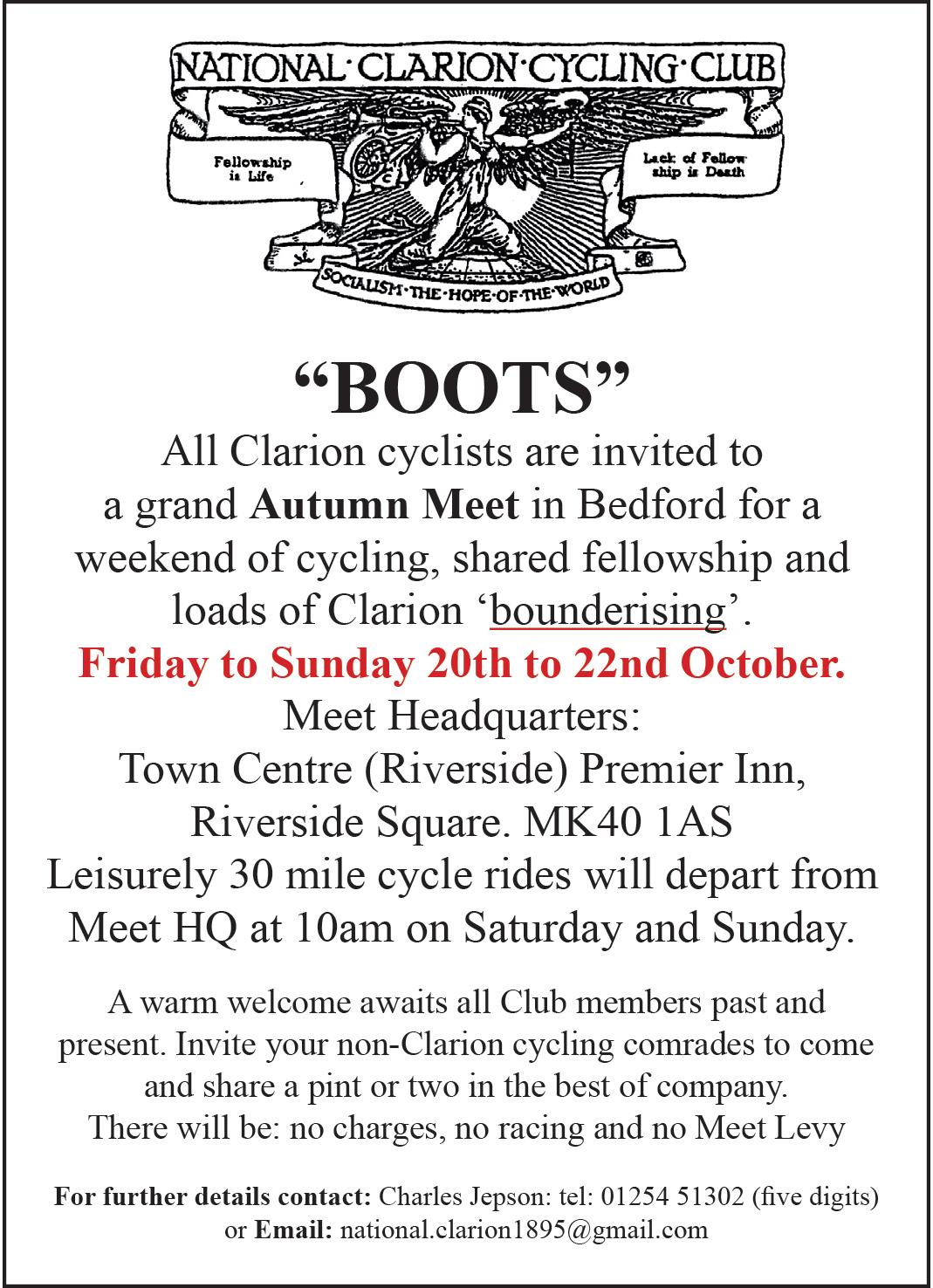
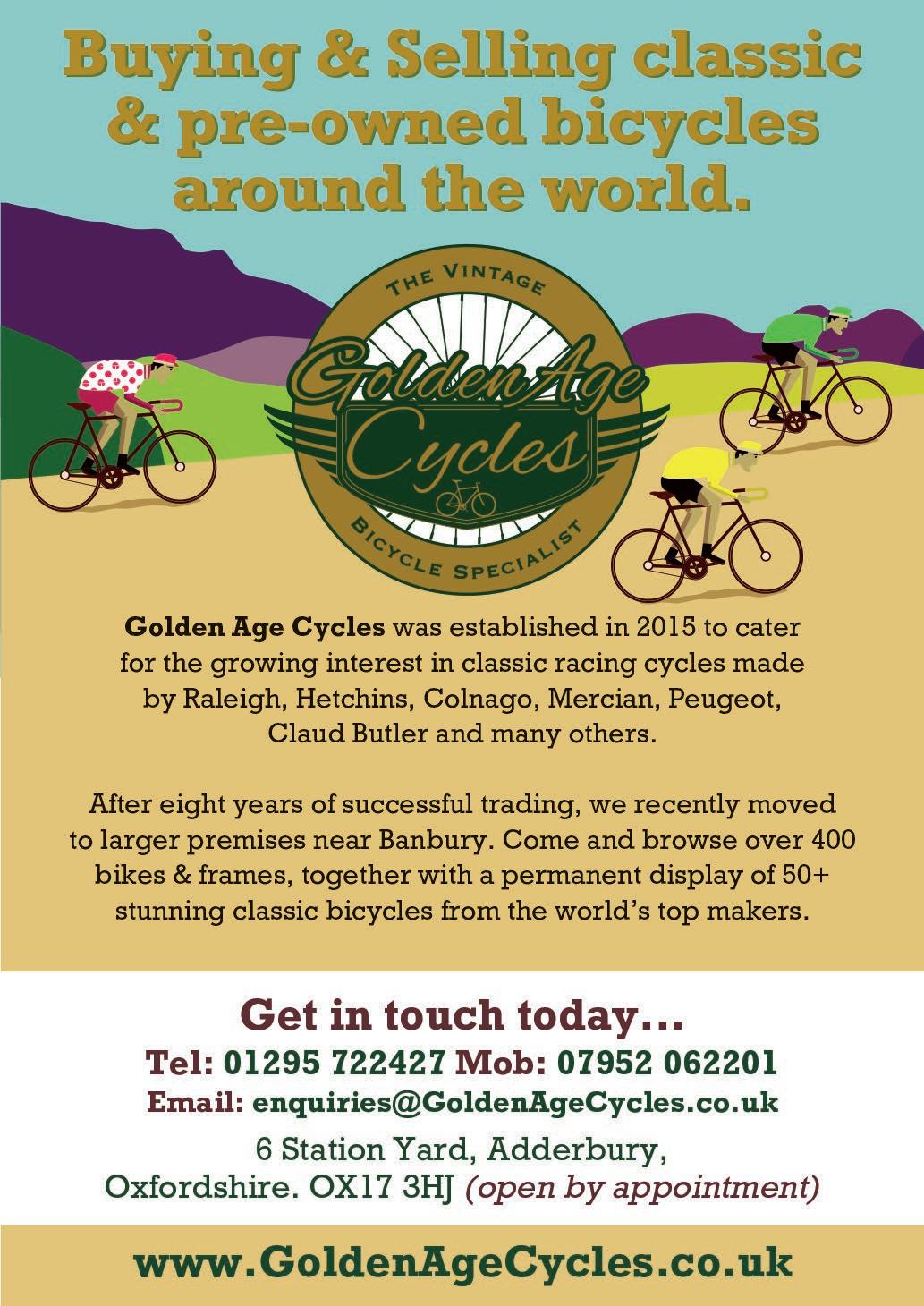
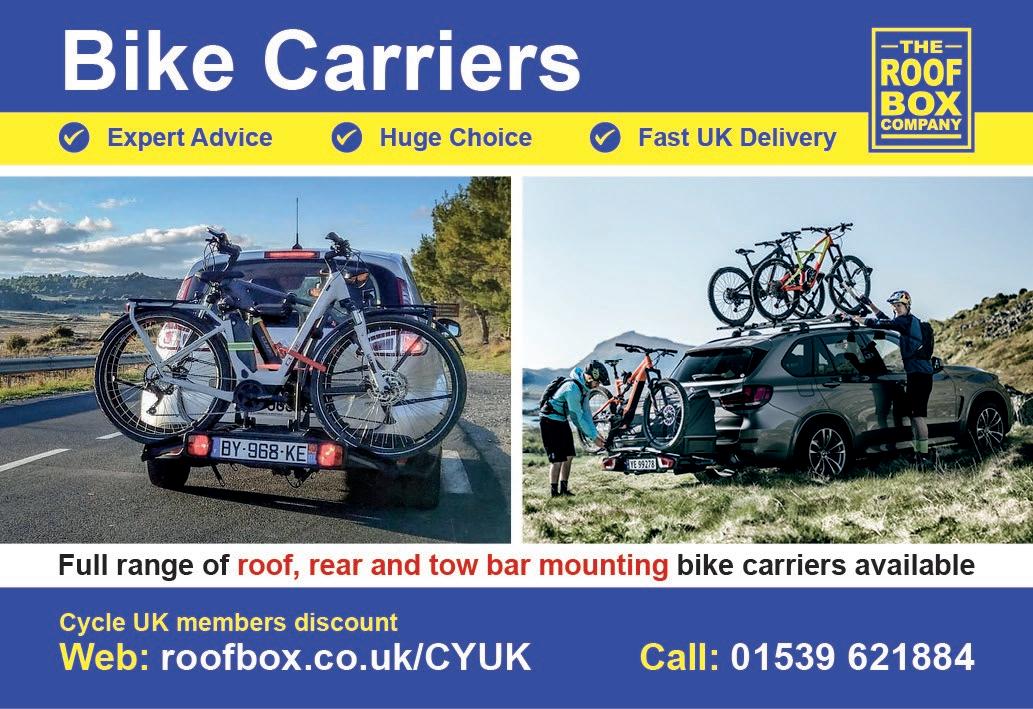

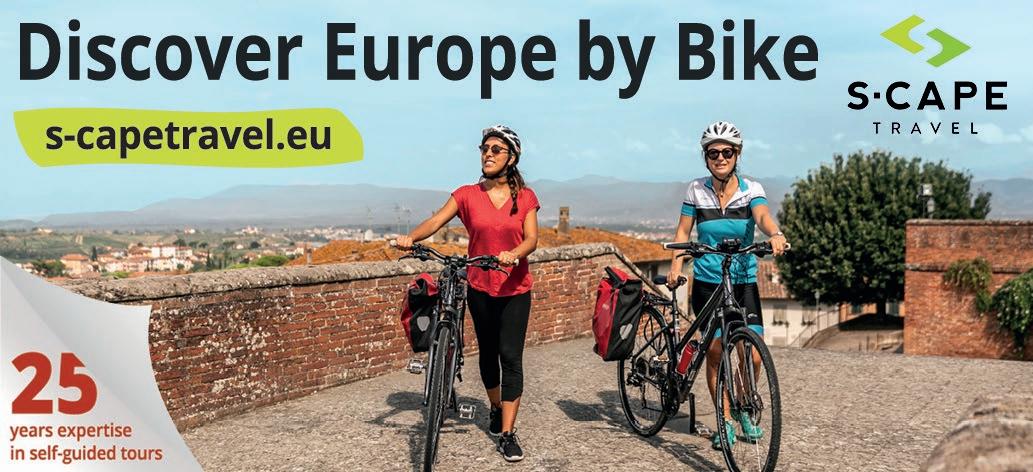
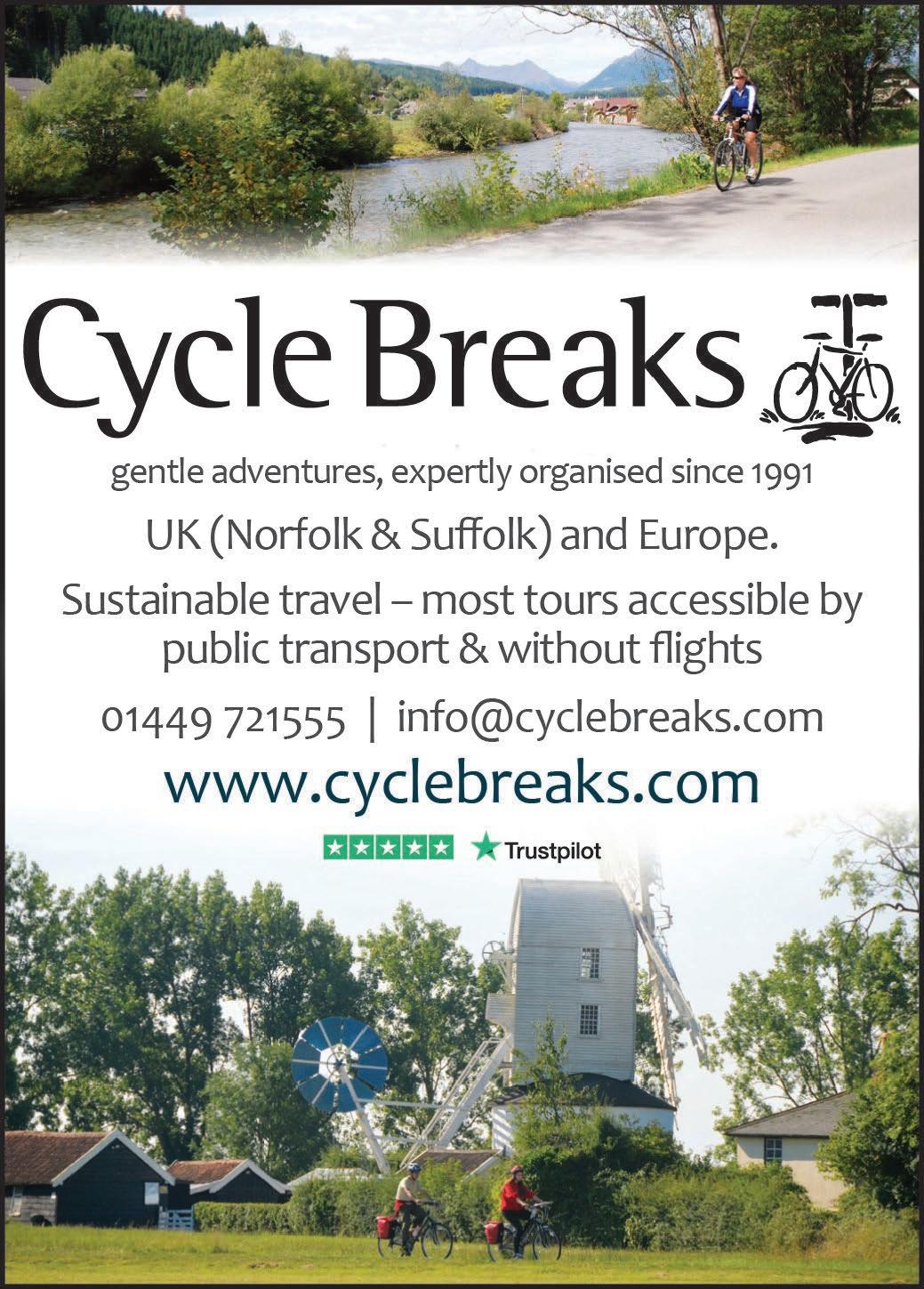
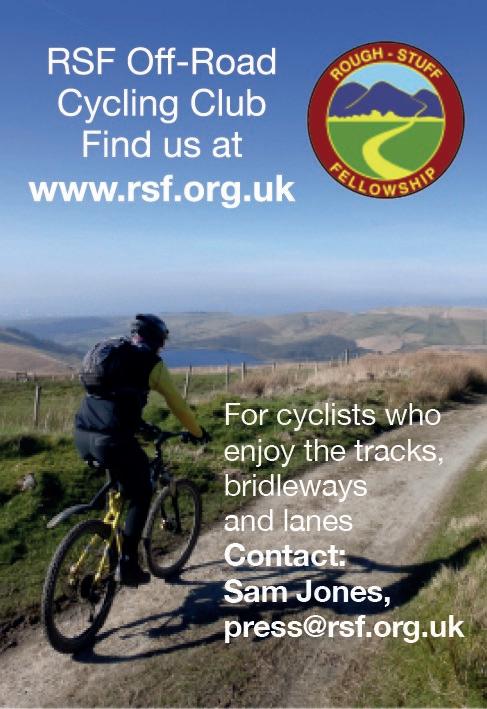



When a lack of experience ‘sunk’ my kayaking holiday off the Summer Isles, I was inspired to try a cycling holiday in north-west Scotland instead. Our route started from Lairg – ScotRail’s phoneline staff were genuinely helpful – and we loaded it into Komoot, mainly to estimate distances (220 miles in total) and climbs (4,250m). There is only one road along the coast so there’s not much need for a guide!
We had inadvertently included a geologically significant region in our route: the North-West Highlands UNESCO Geopark, which has the oldest rocks in Europe. In one of the visitor centres we learned that we may have glamped on a meteor’s 45km-wide impact crater from 1.2bn years ago.
We travelled some way along the North Coast 500, and about half the vehicles on it were motorhomes (not caravans these days). Mostly drivers were well behaved. Singletrack roads with frequent passing places featured prominently.
Our first day’s cycling was our longest: 55 miles from Lairg to the campsite above the beach at Altandhu. We were on holiday and wanted to see places rather than



rush through them. After that we rode no more than 30 miles in a day. We also had stops of two nights in two places. We couldn’t believe the views. I kept stopping to take panoramic photos, then realised that it would take much longer to arrive if I did that everywhere there was a view. We passed many virtually empty sandy shores, and at Scourie in the far north-west, I was tempted into the water for a swim.
We saw a young stag at 30 yards, which was so unfazed it gave me time to get my camera and take several shots. I managed to get really close-up photos of seals during a Lochinver boat trip, too. We saw puffins on the rugged north coast and lots of other seabirds as we continued.
The trip was so good we’ve already started planning another one, combining Caithness on the north-east coast with Orkney.
THIS SUMMER 20 MEMBERS of SPOKES, the cycling group for SW Herts, enjoyed a week’s cycling in the Netherlands. We caught the ferry from Harwich. Some cycled the 97 miles there from Watford.
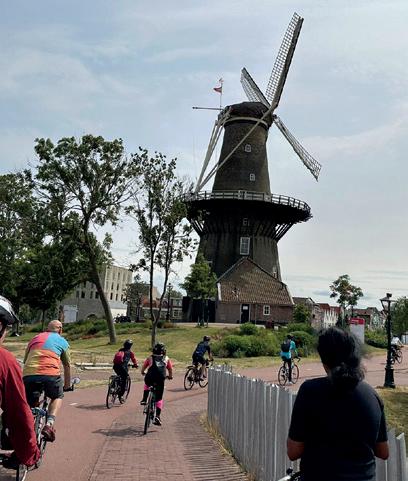
On the Sunday we had a 26-mile ride from the Hook of Holland to Leiden. It was almost entirely on segregated cycle tracks, and the few road sections were quiet. Our route went up the coast via The Hague. We enjoyed a true tourist afternoon in Leiden.

Monday was our 53-mile ride to Zandvoort Grand Prix track, via Haarlem, returning on a cycleway down the coast through sand dunes. At times there was a gale force headwind, interspersed with some broadside gusts. Some of the group abandoned the coastal route and turned inland, but everyone still enjoyed the day.
On Tuesday we had a picturesque, 30-mile Leiden Lakes ride, which included two ferry crossings, canals and some amazing bridge architecture. On Wednesday, Storm Poly, the strongest summer storm on record in the Netherlands, slammed into the northern part of the country. Instead of heading to Amsterdam we spent the day in Leiden.
On Thursday we had a 40-mile ride to Gouda for the weekly cheese market. Friday morning was spent in Leiden, followed by a 31-mile ride to the Hook via Delft. We used an attended, secure bike park so that we could explore Delft luggage free.
It was great place to cycle, as you’d expect. Families and those who would not cycle on British roads can ride in the Netherlands with complete confidence.
Despite some fierce ‘Dutch hills’, Peter Jackson had a great trip to South HollandDay one: Lairg to Altandhu The Summer Isles, off Coigach peninsula
After her exams, Jude Wilkinson rode coast to coast from Morecambe to Bridlington


The 1,250km Sendero Histórico is challenging off-road route across northern Spain. Tom Goldsmith rode it
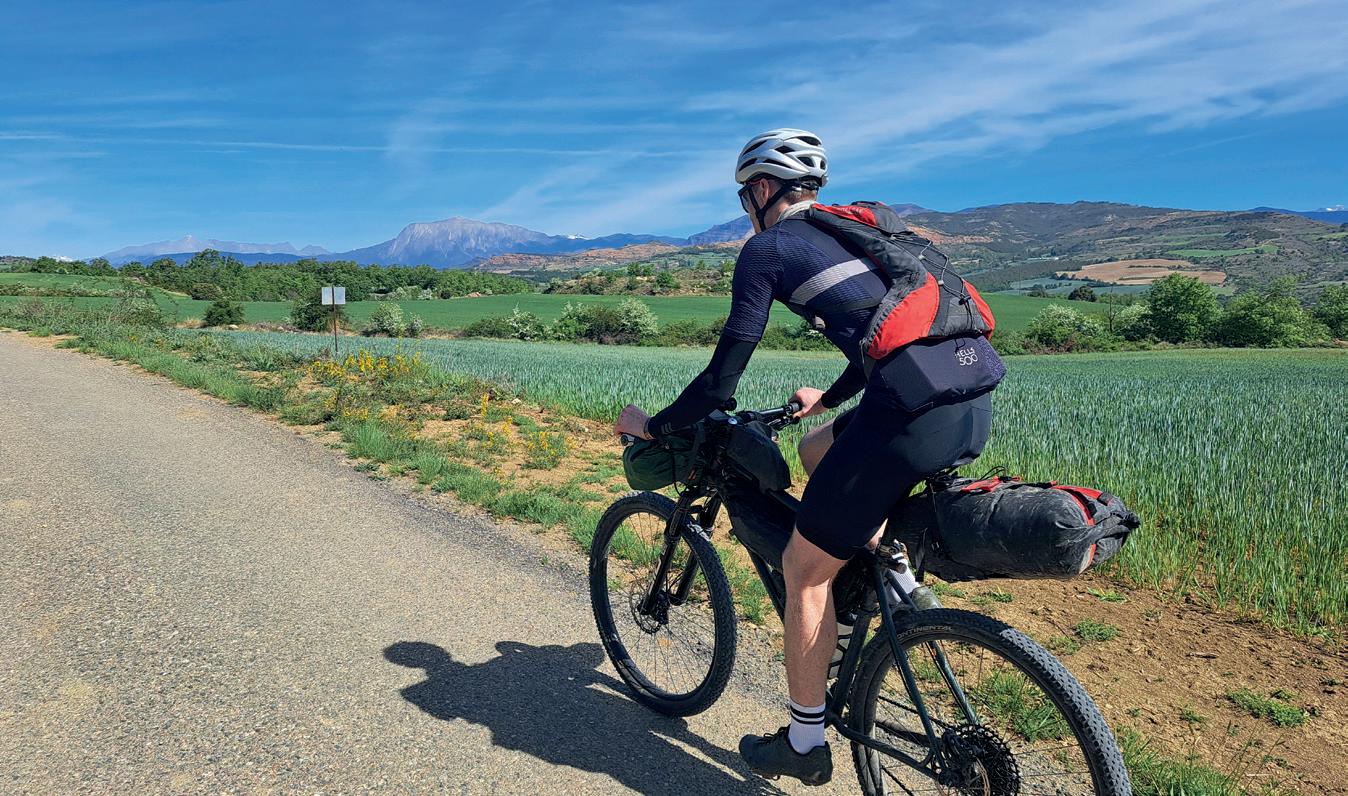
It was a winter’s evening when I chanced upon the GR1 route in Spain, which runs between the Picos and the Mediterranean. Here was a European off-road trail offering adventure and challenge reminiscent of the brilliant Rough-Stuff Fellowship Archive. But I could also package it as a holiday for, secretly, I was searching for a beautiful setting to ask my girlfriend to marry me.
The GR1 (or Sendero Histórico) is a 1,250km remote trail across northern Spain linking important historical sites. We took the published hiking route as inspiration, adapting it to fit our 11-day timetable and riding east to west between Girona and Bilbao for ease of access from the UK by plane and ferry. A real charm for us was no record of a previous route attempt by bike.
We set off armed with a walking guidebook (our thanks to Terry Hayes and Cicerone Press) as our only source of local knowledge. The scenery was beautiful and the terrain was varied, with fast dirt roads, sinuous singletrack and attritional hike-a-bike. We crossed rivers, explored abandoned mountain villages, napped in church doorways and sampled copious bocadillos. It was hard, but it was also an adventure.
Having no expectations of what might be around the next corner also meant nothing could disappoint us.
As Bilbao approached, our hunger to trailblaze a new cycle route gradually melted away. Instead, everything was in the discovering.


The trip exceeded our wildest bikepacking dreams, and we’d pushed well outside our comfort zones. Our bodies and kit both took a hammering on the extreme parcours. The experience will linger long in the memory, and I hope prompt some thoughts as to your own cycle touring ‘bucket list’ criteria. Adventure is in the eye of the beholder.
And the marriage proposal? Dear reader, she said yes.
THE WAY OF THE ROSES takes in the diverse landscapes of the Forest of Bowland, the Yorkshire Dales and the Yorkshire Wolds. On my approach to Settle, the scenery shifted completely. The open moors of Bowland gave way to dry stone walls and a gorge-like valley, which snaked its way from Austwick to Wharfe and finally Settle.
If you’ve ridden the route, you’ll remember the climb out of the town. Over a mile at 7.3%, most of the elevation gain is in the first third, which probably averages over 20%. I was determined to get up without walking, a task made easier by having mountain bike gears.
As I reached the top, though, I realised that I had consumed all my water. There were no shops nearby except back down the hill. I pulled into a village and trundled up to a man painting his cottage door.
“Excuse me, I’m sorry to disturb you, but I’ve run out of water.”
“Run out of water, have you?” replied a broad Yorkshire accent. “Well, give me the bottles, then.”
“Thanks, it’s kind of you. It’s quite the climb up there. Absolutely brutal in this heat.”
“I used to run up it.”
He disappeared inside the cottage and returned with my bottles refilled, along with a handful of bananas.
“Here you go. Lots of road cyclists come through the village, hordes of them. Anyway, have a banana, sit down on the bench over there. Take two minutes, enjoy yourself.”
Amused at the specified length of time, I used the full two minutes before setting off to find a camp site.
More online
Fancy contributing to Cycle?
Read the guidelines here: cyclinguk.org/be-part-cyclemagazine

